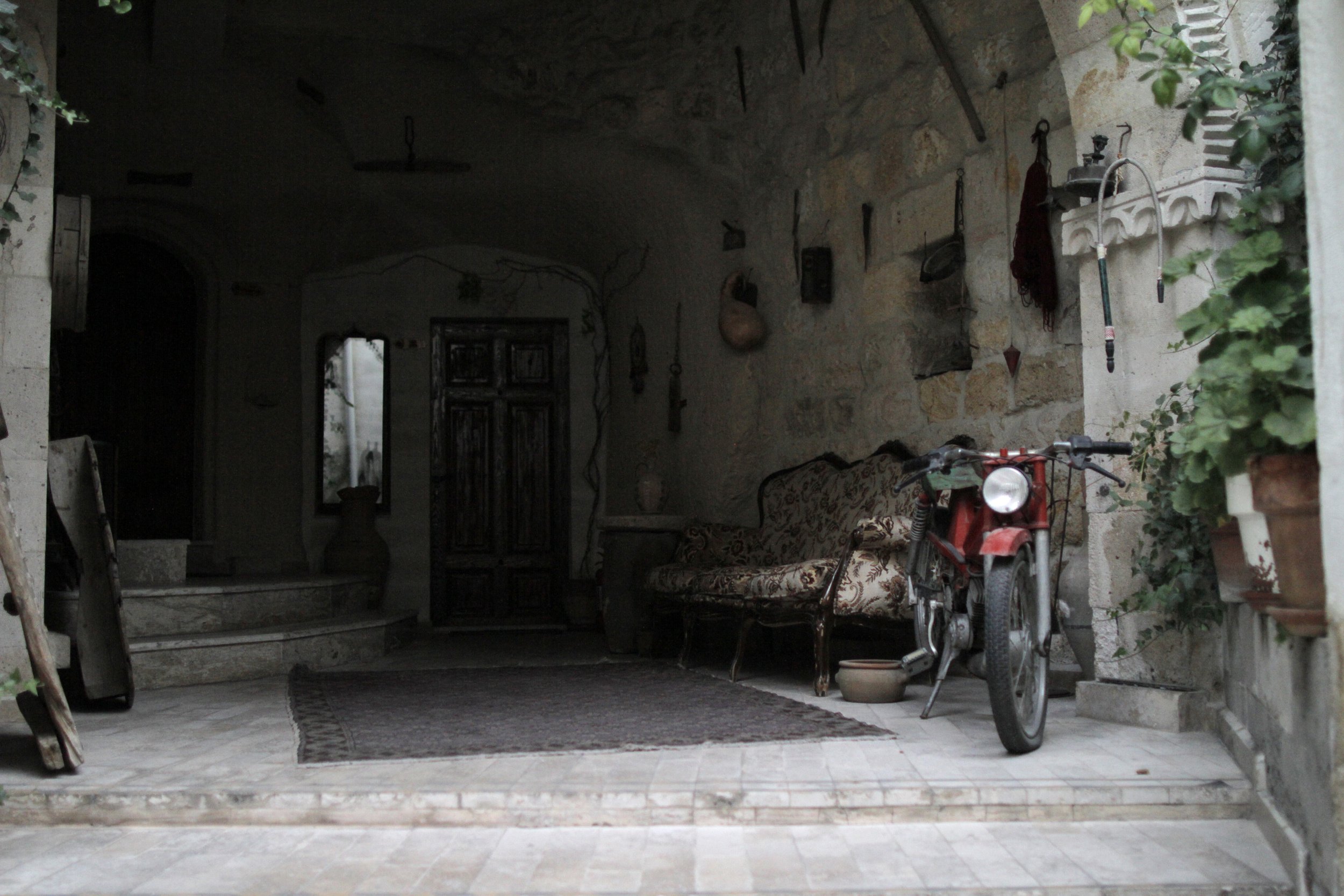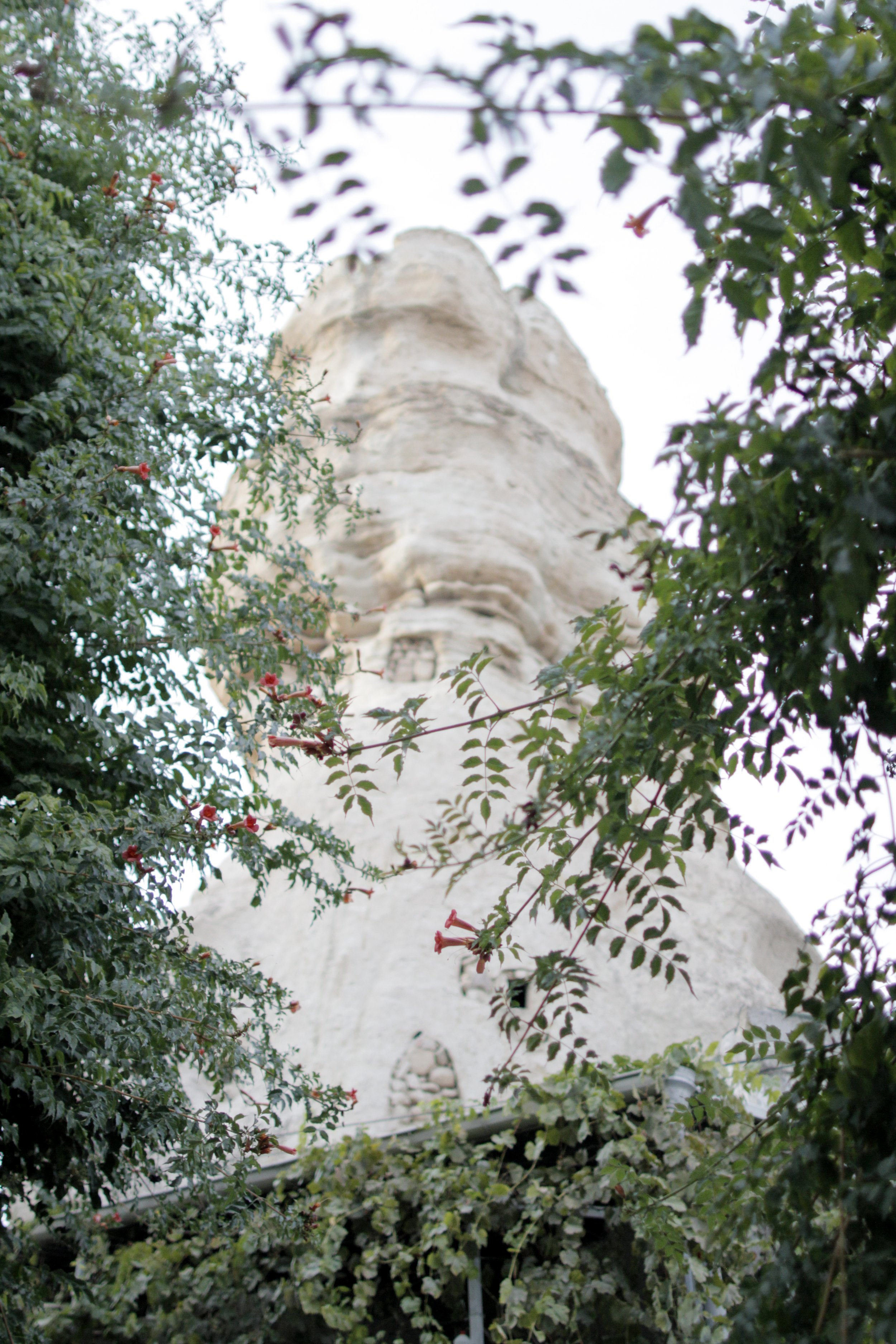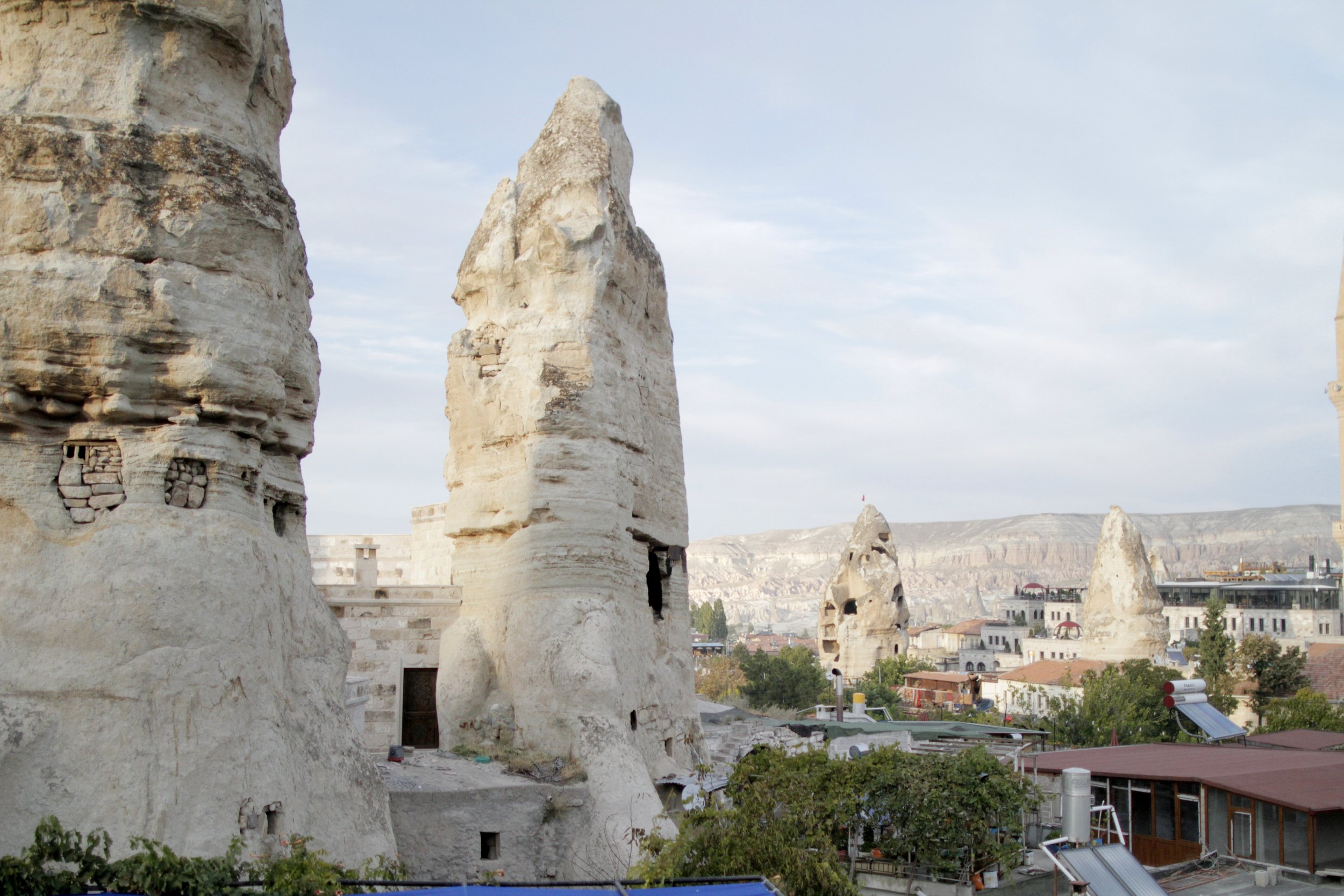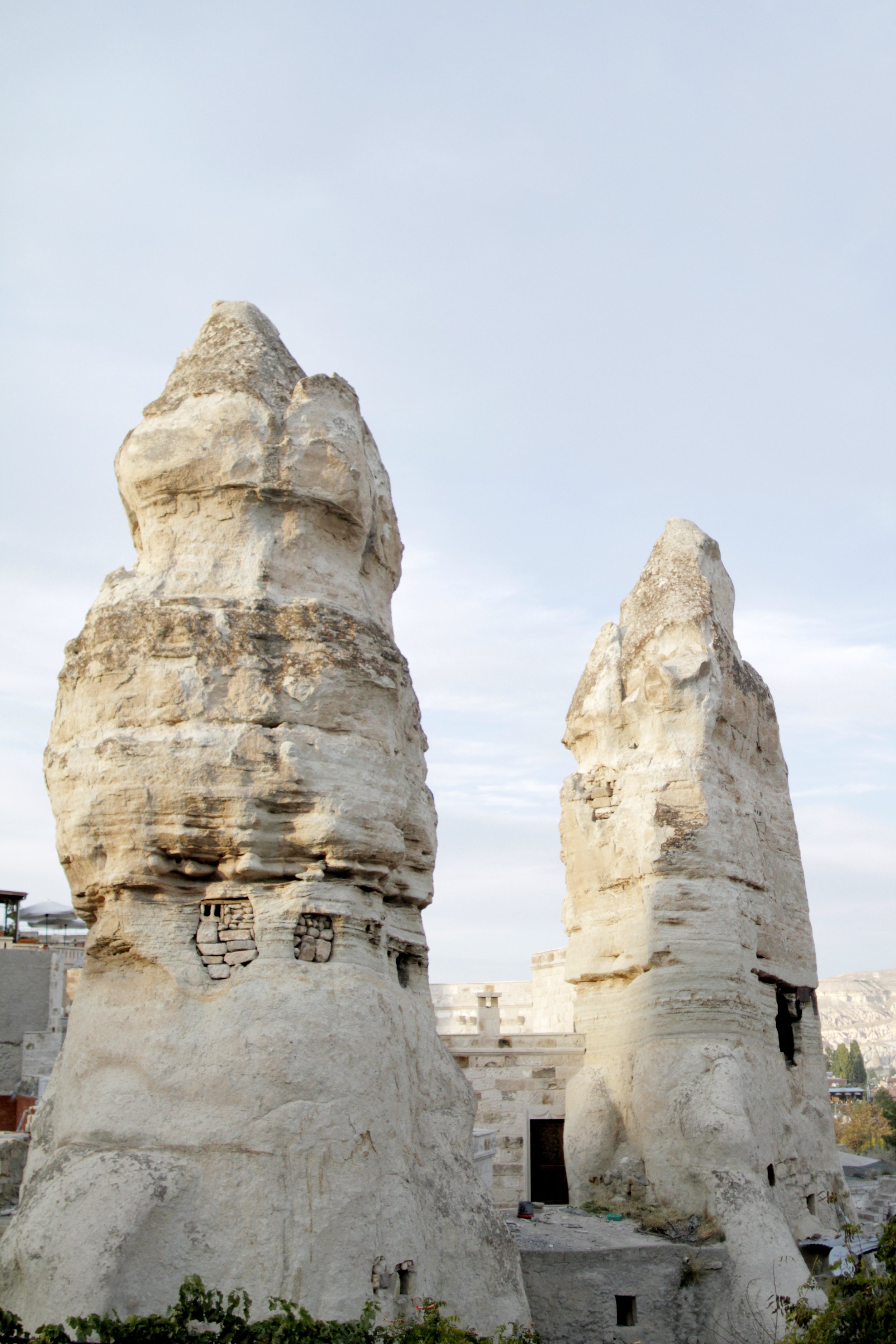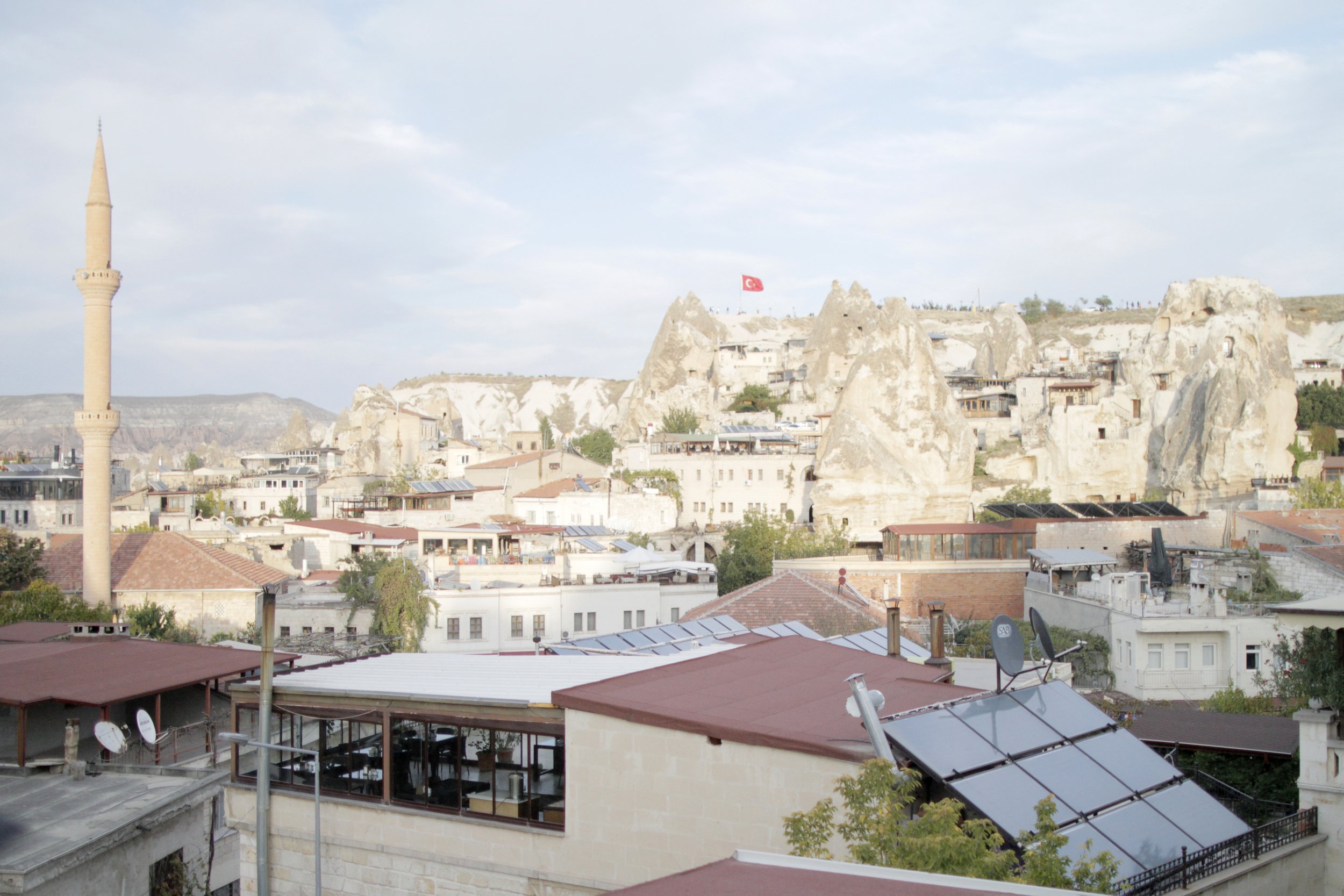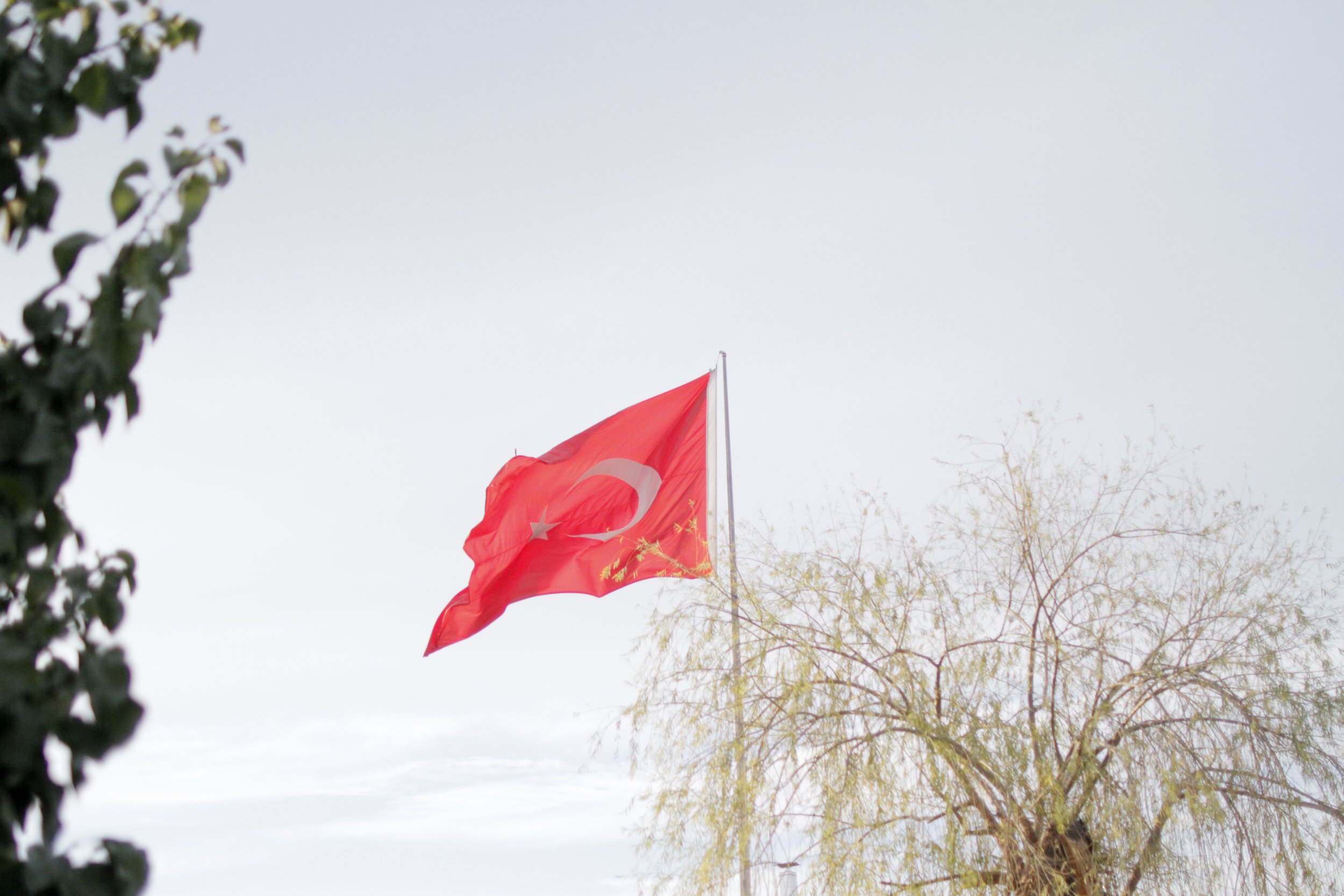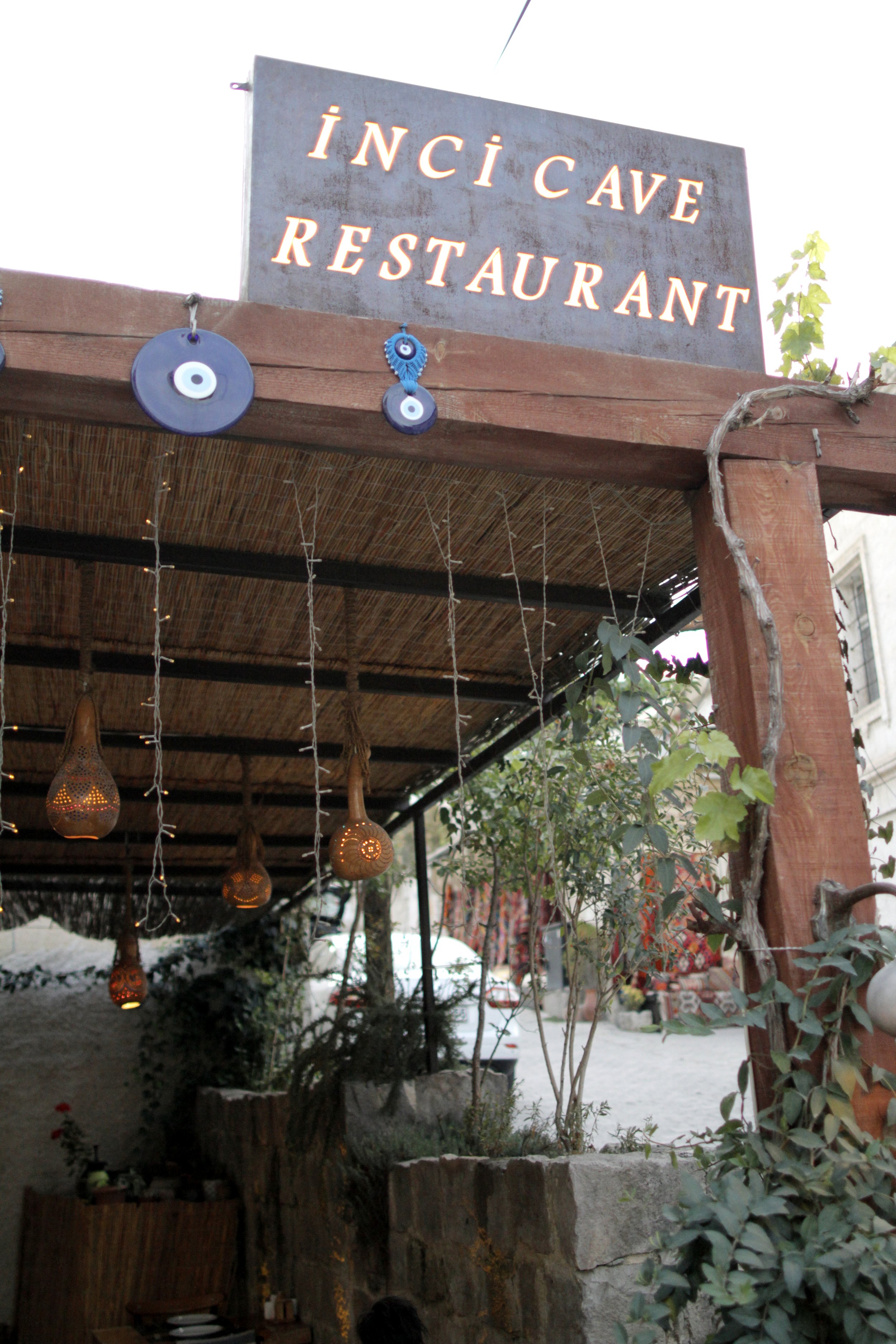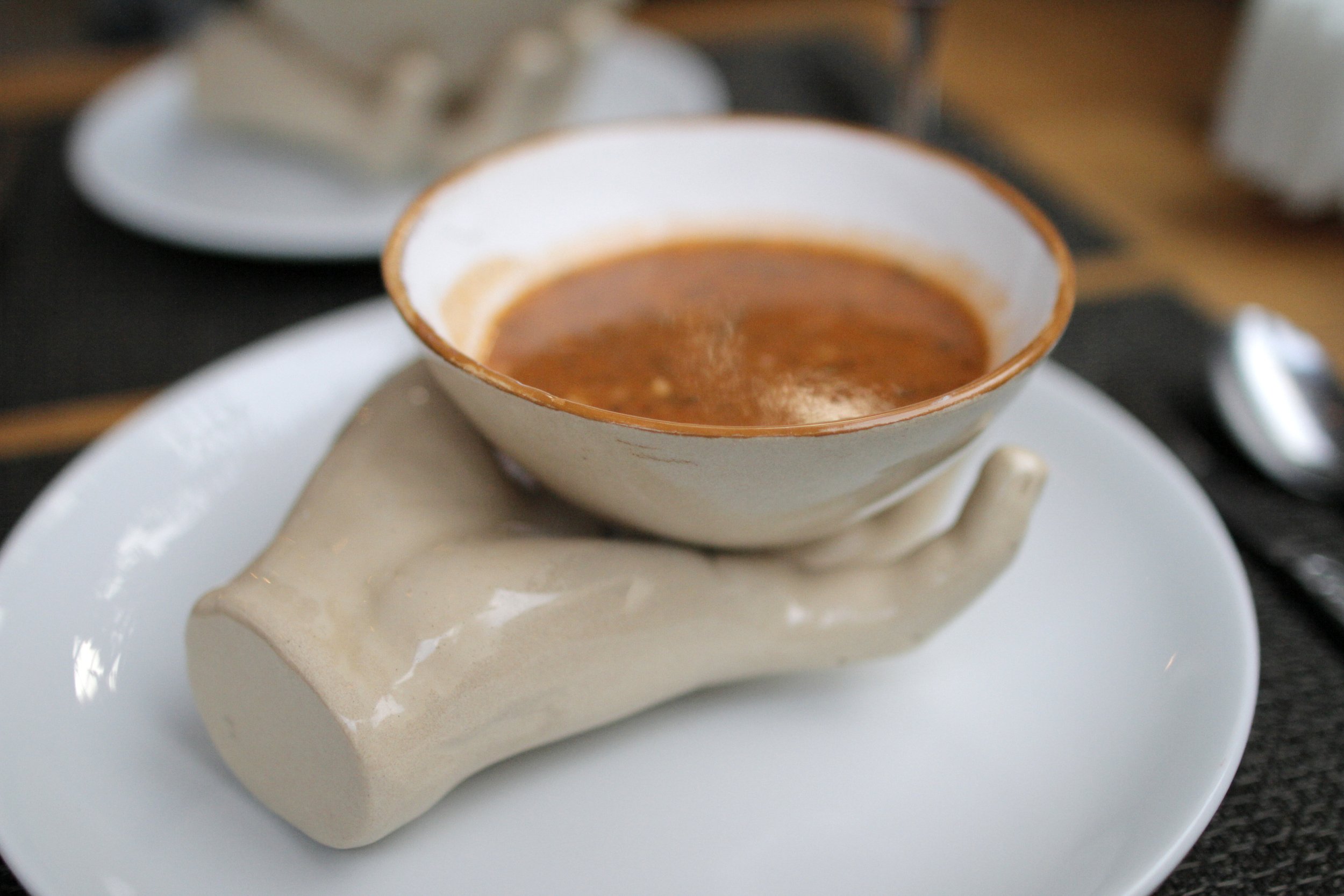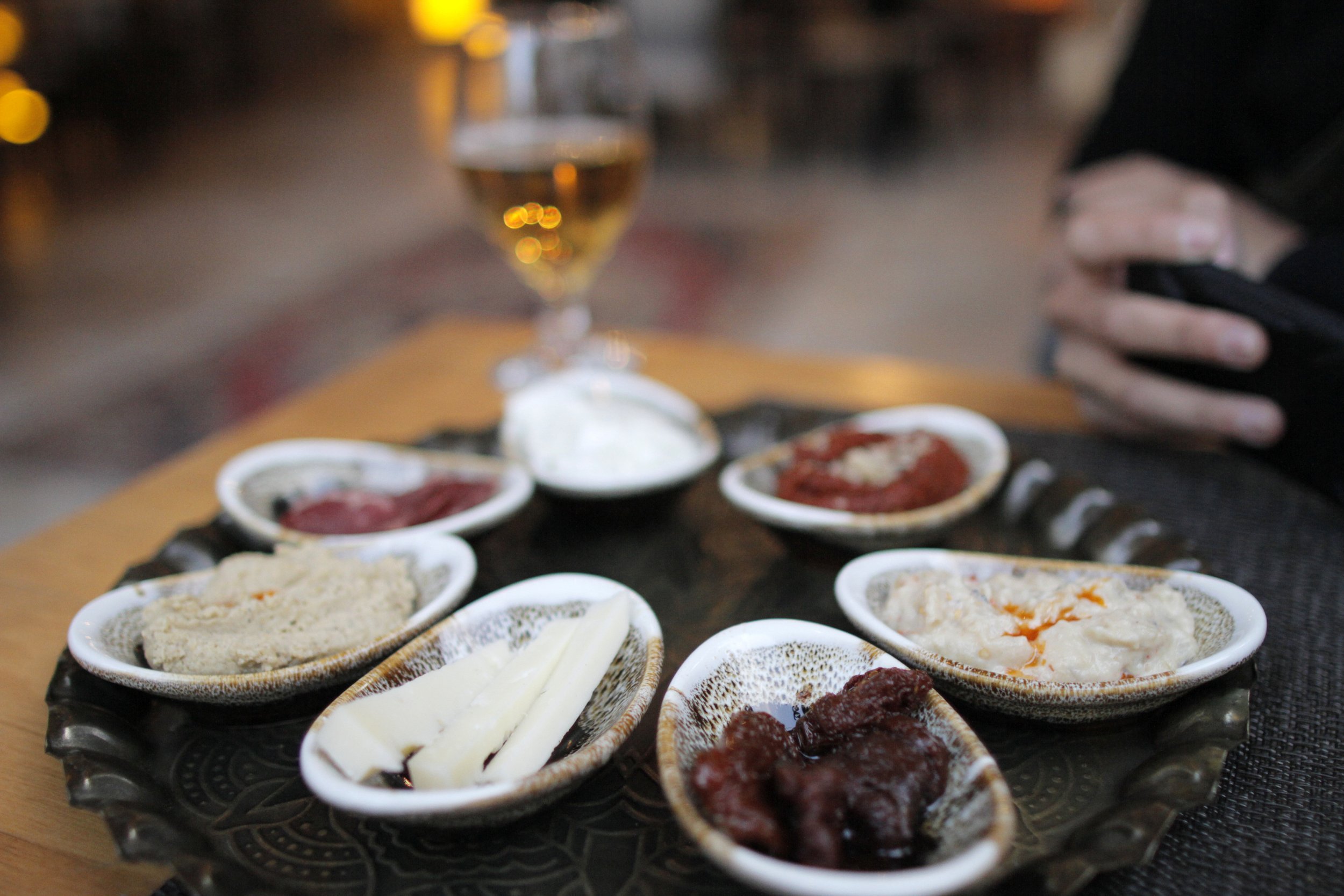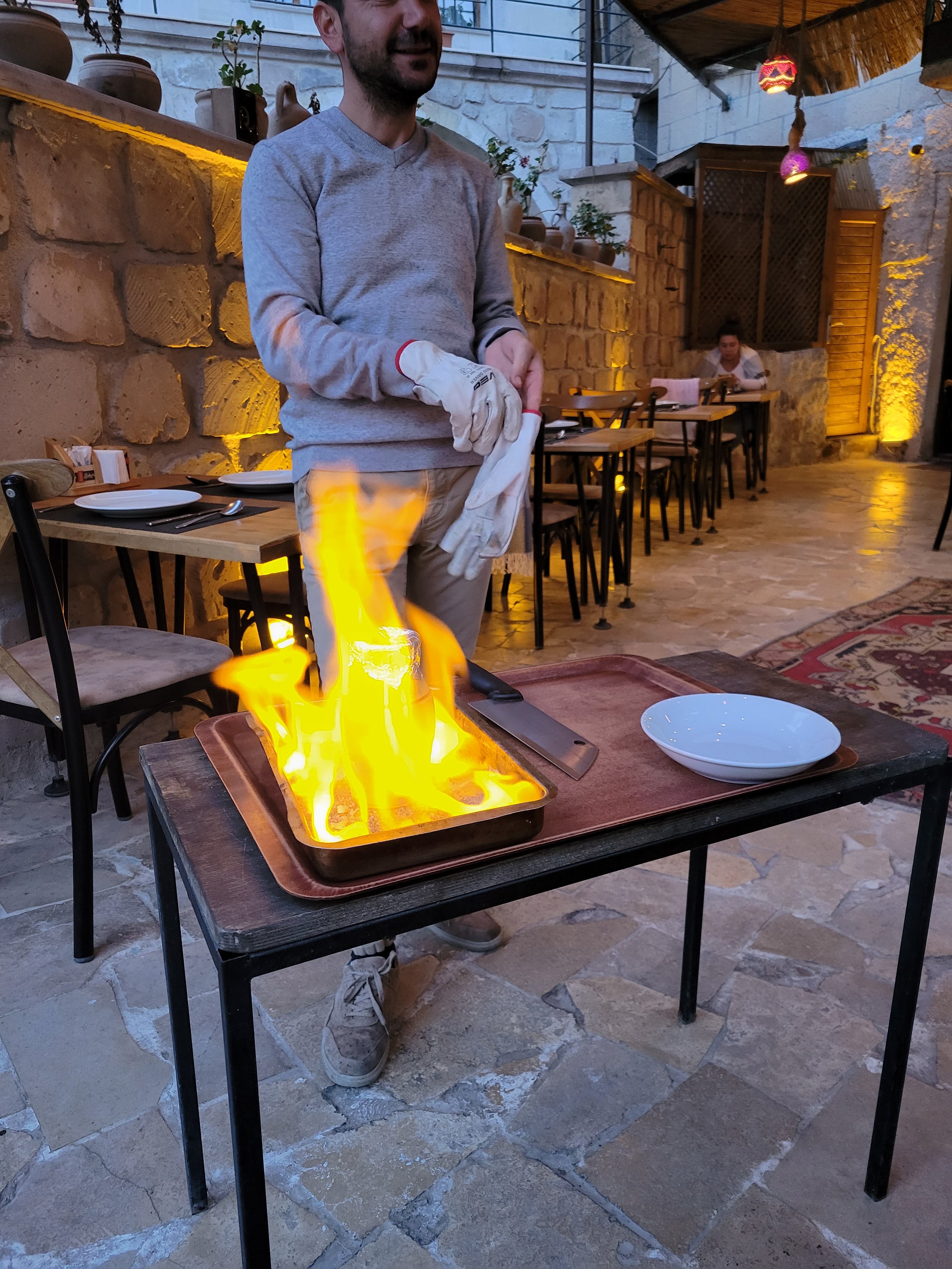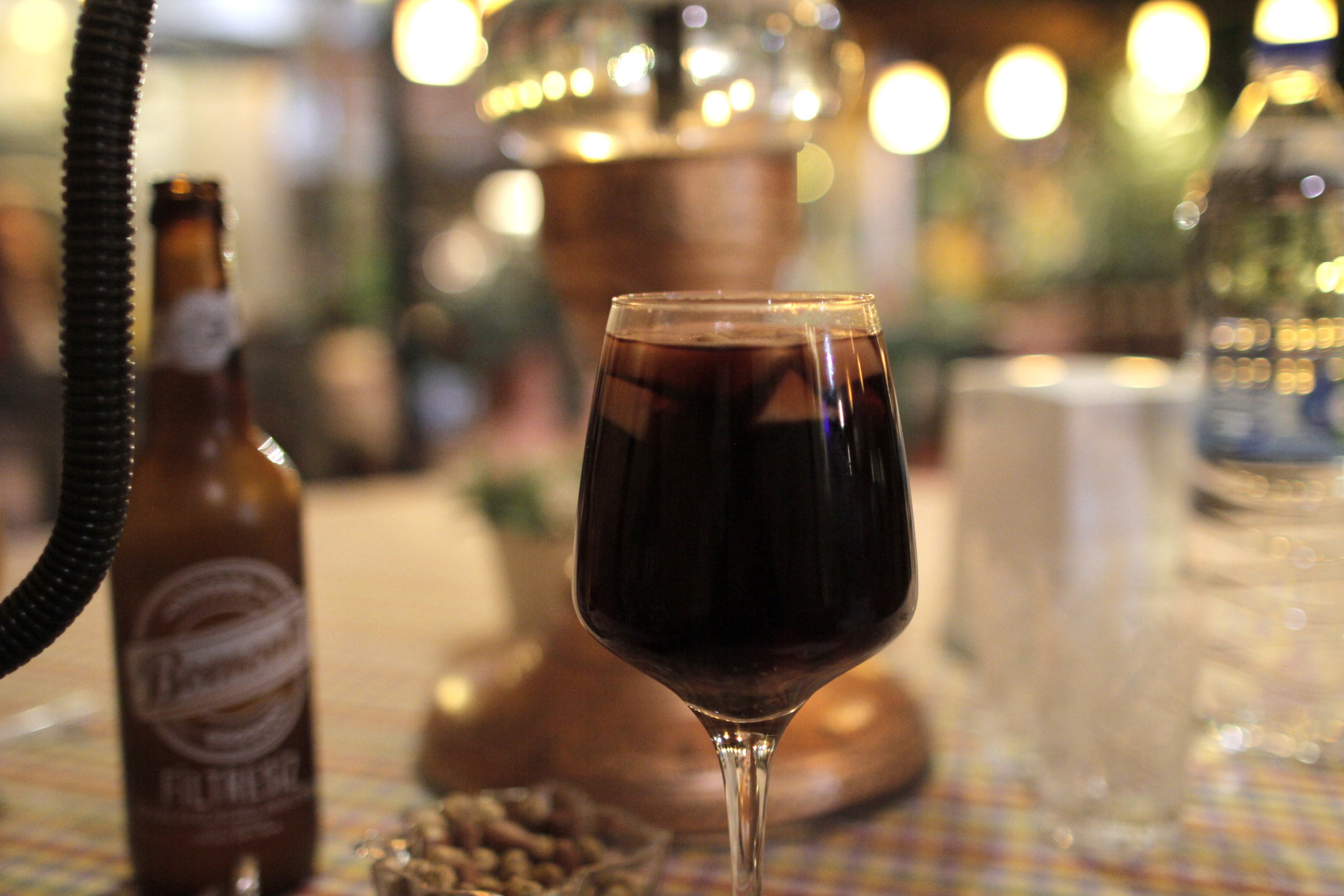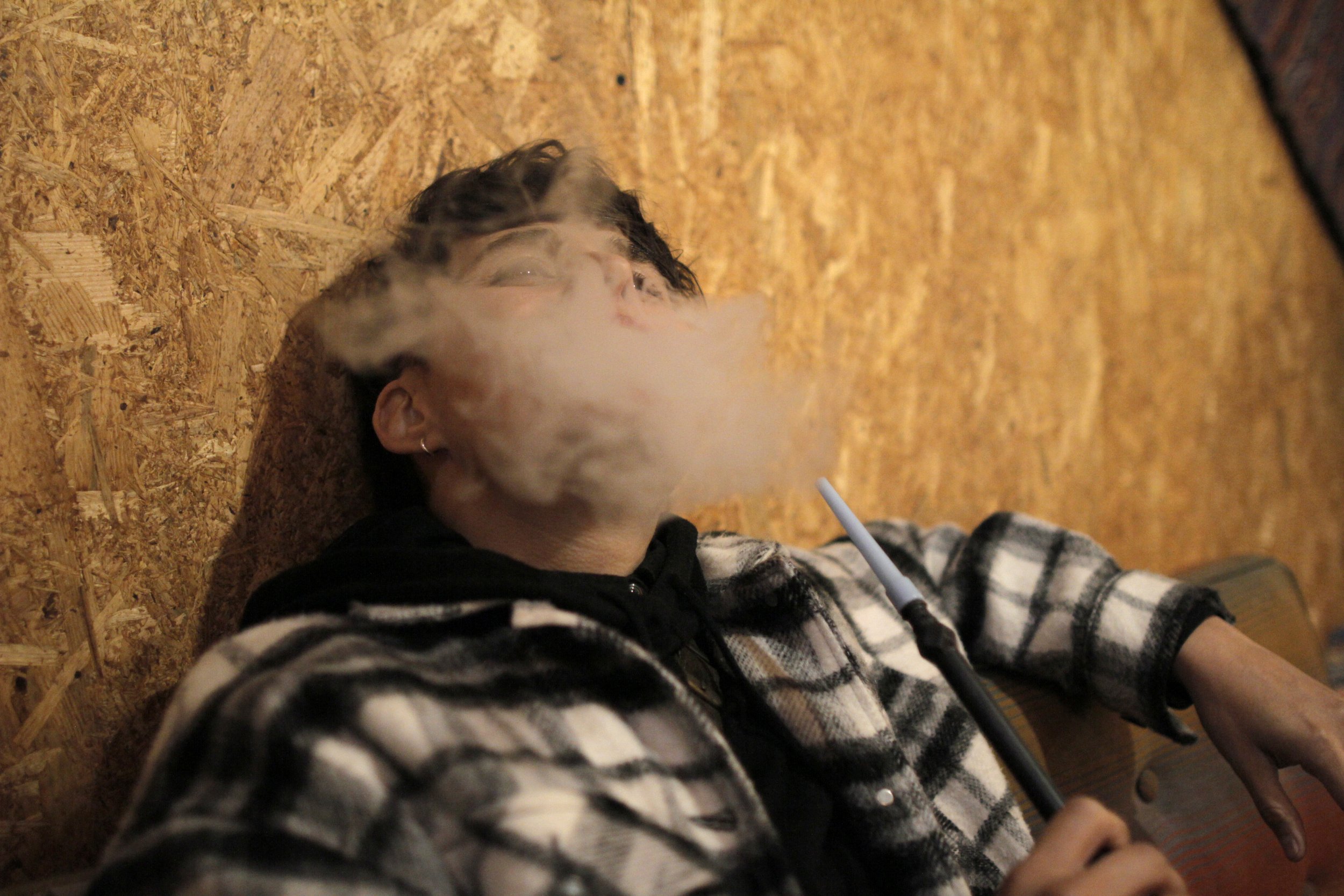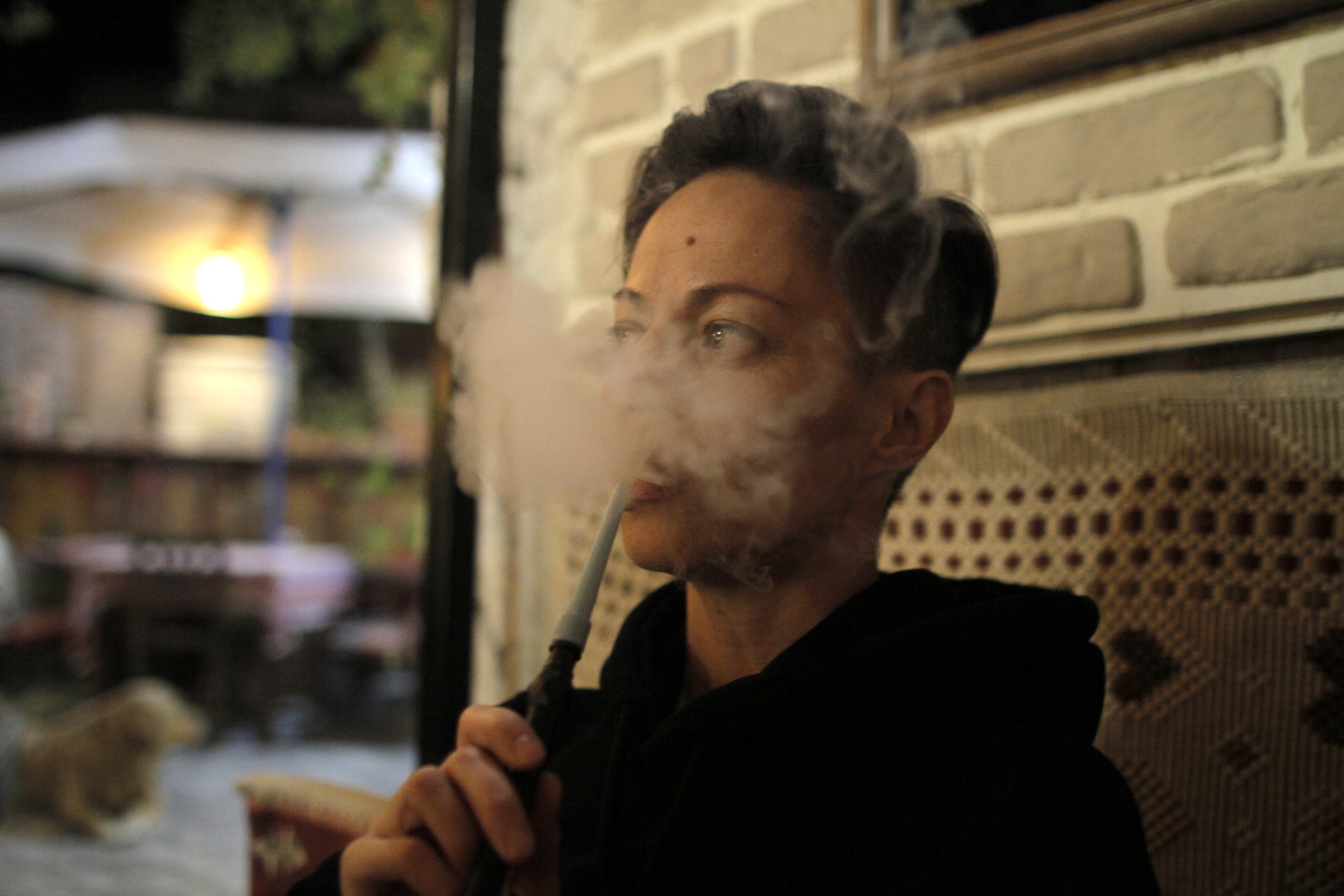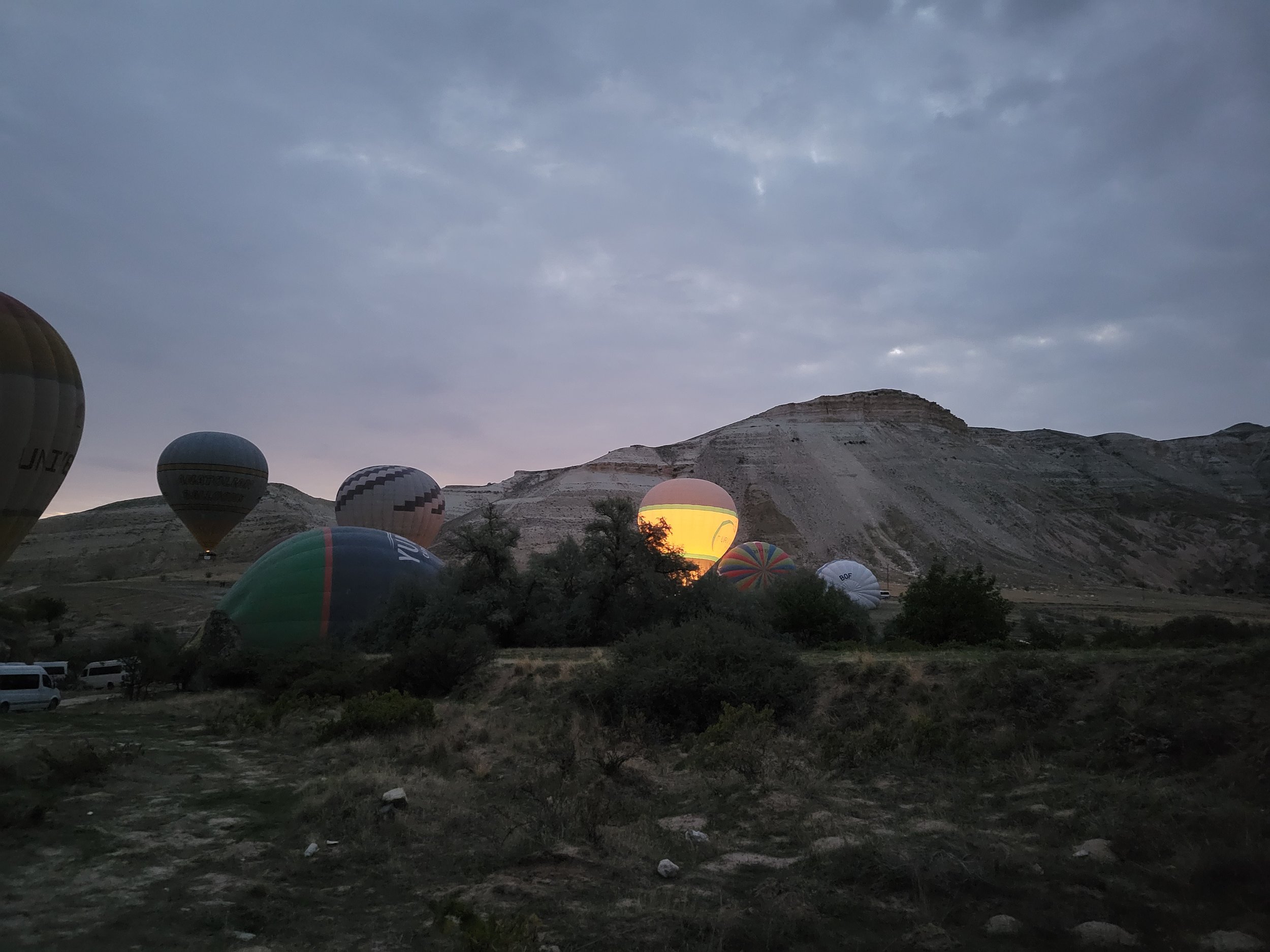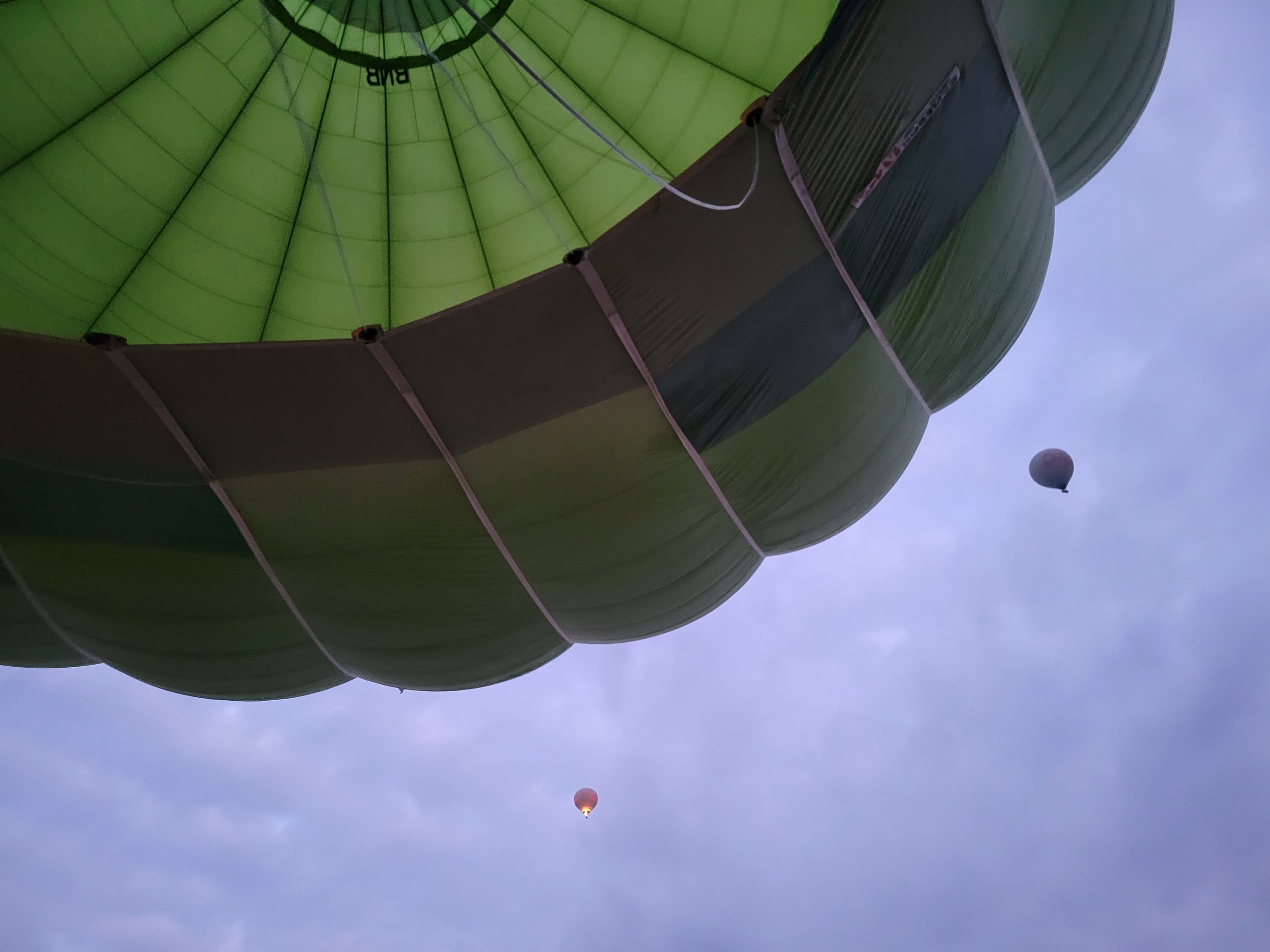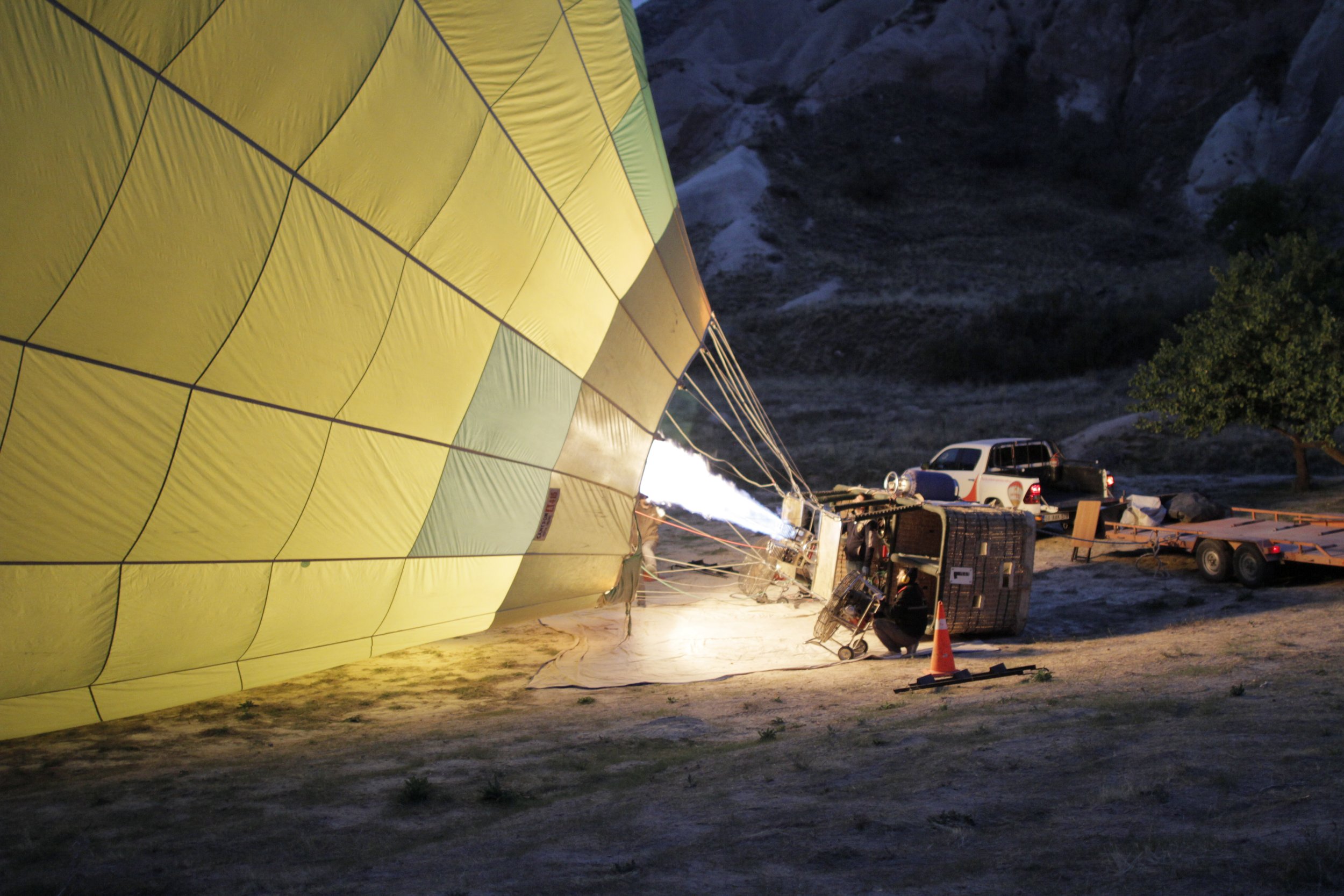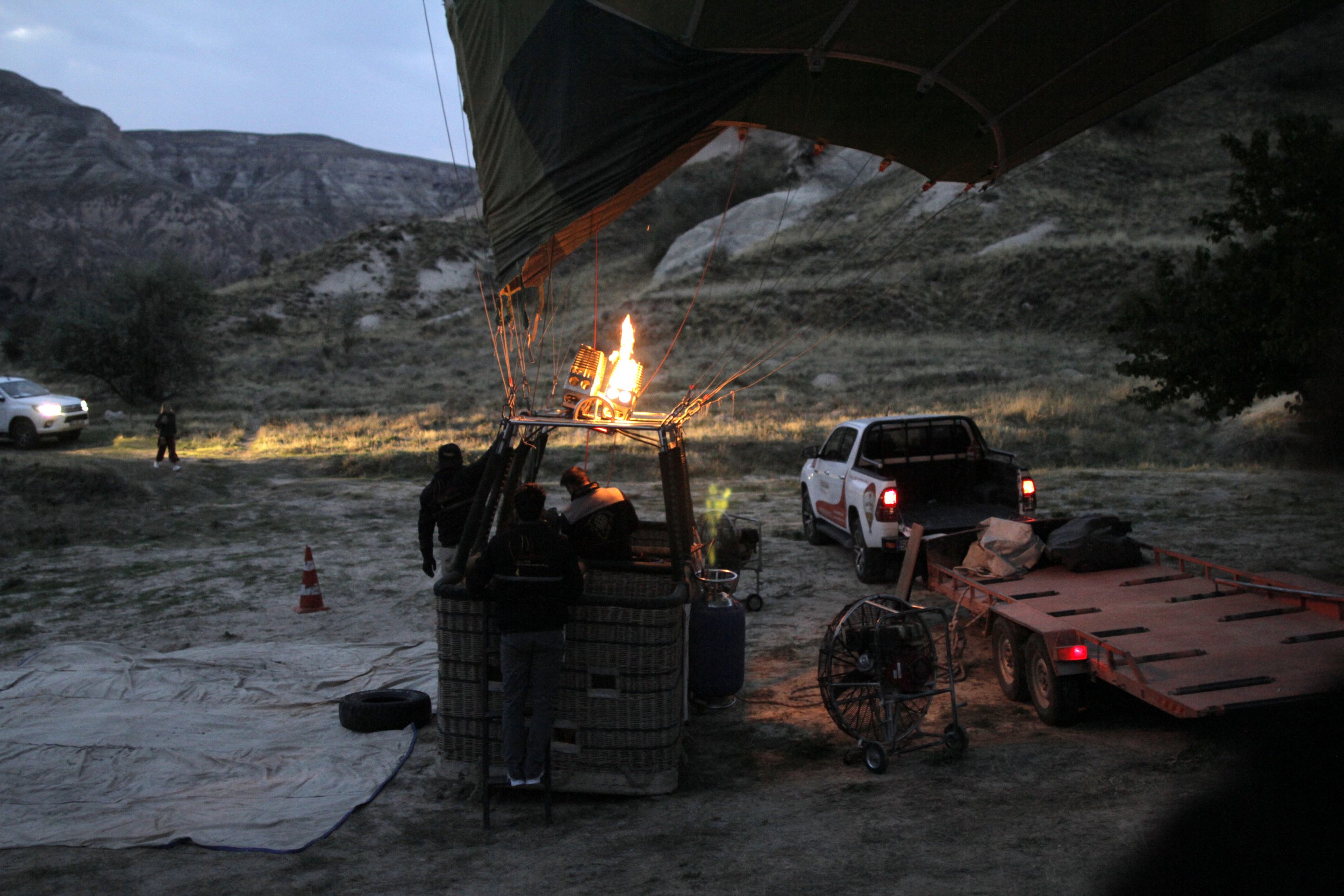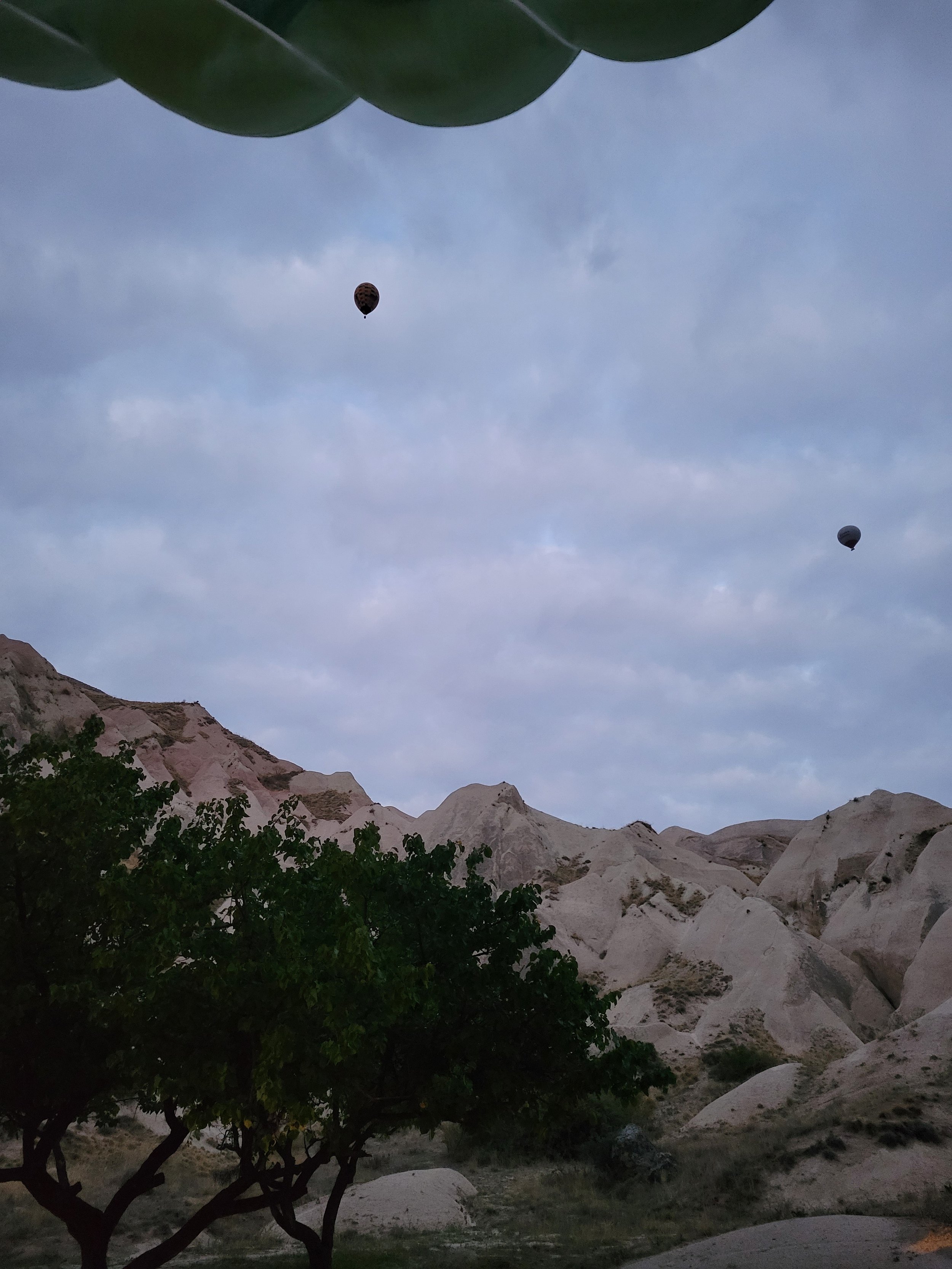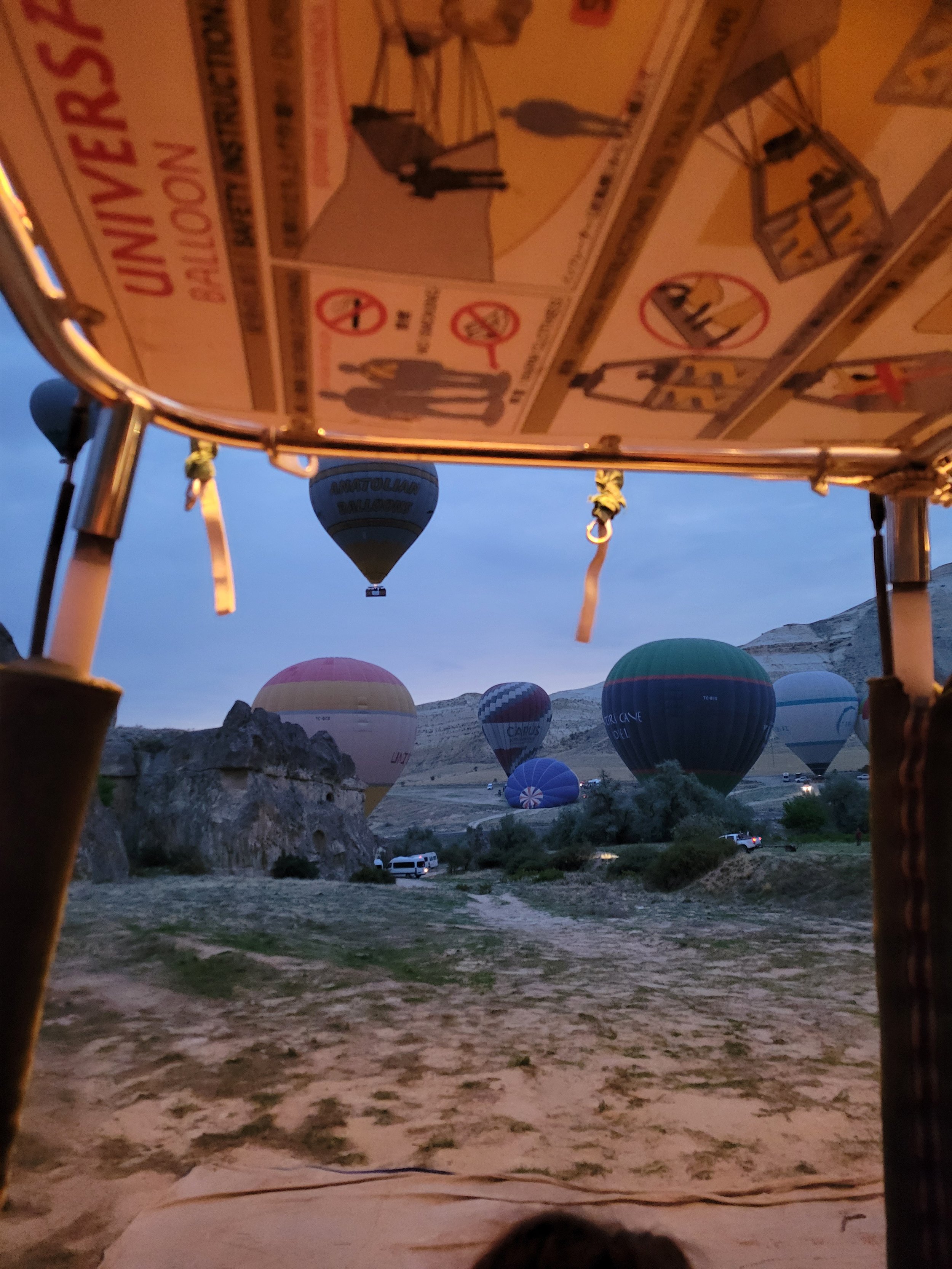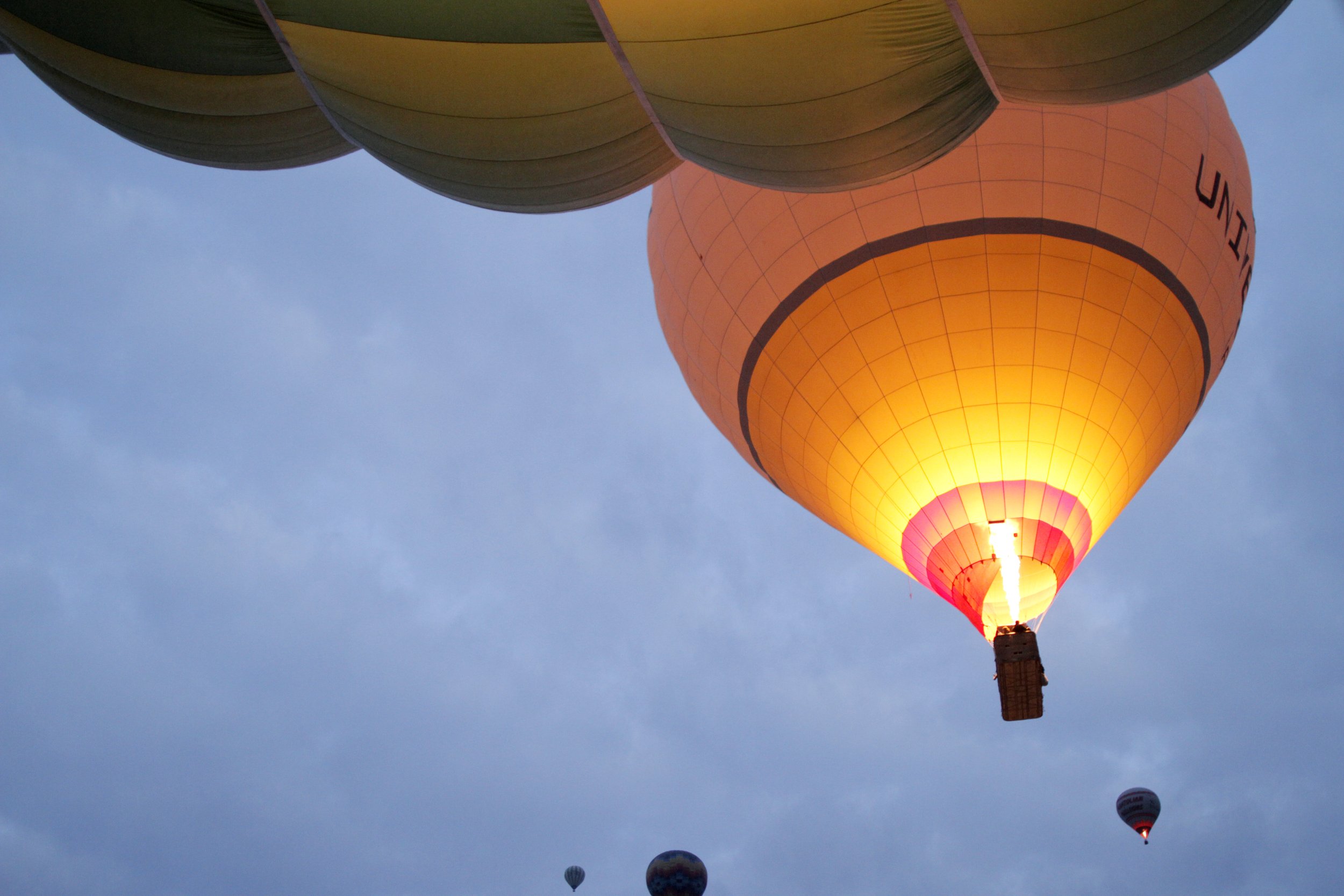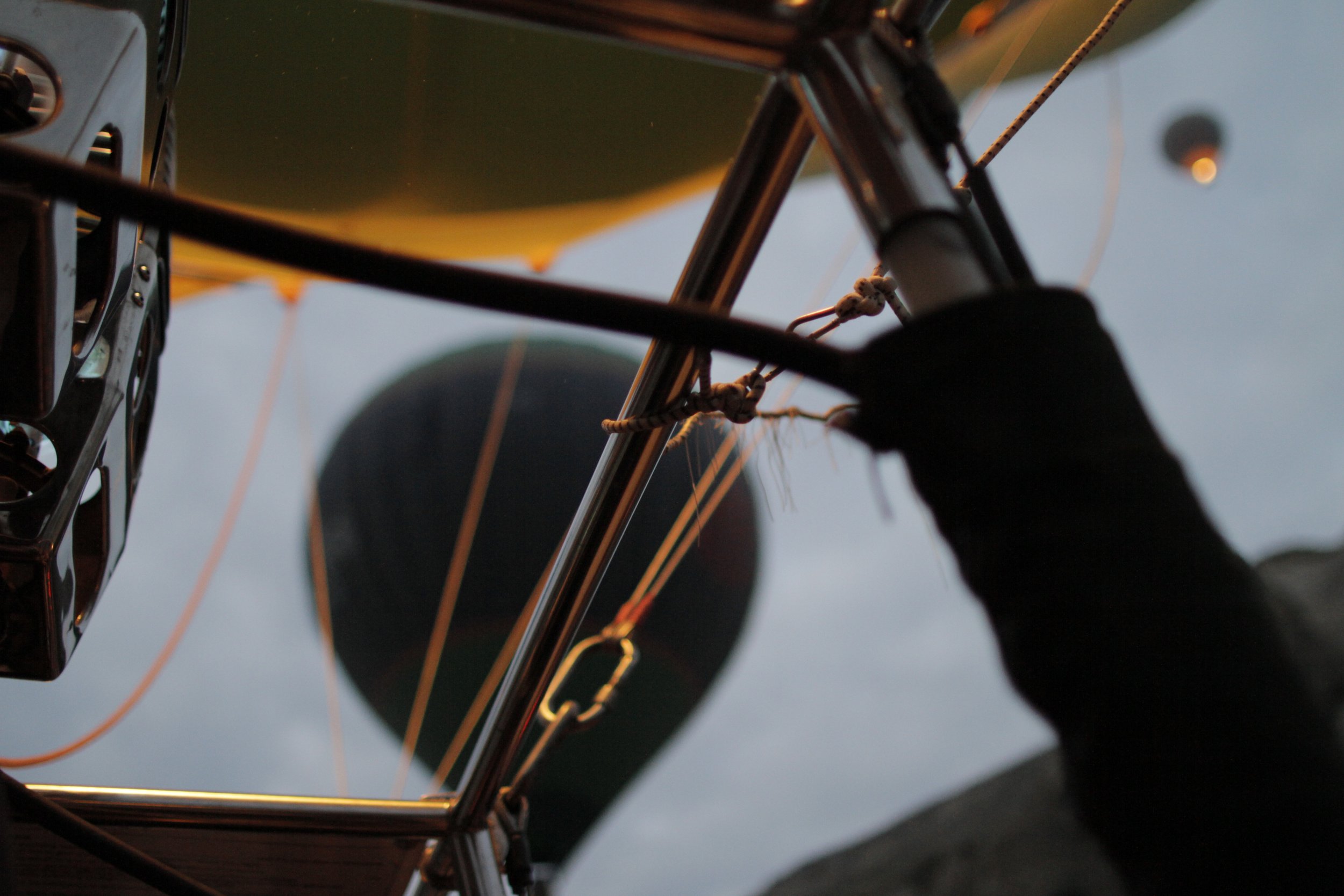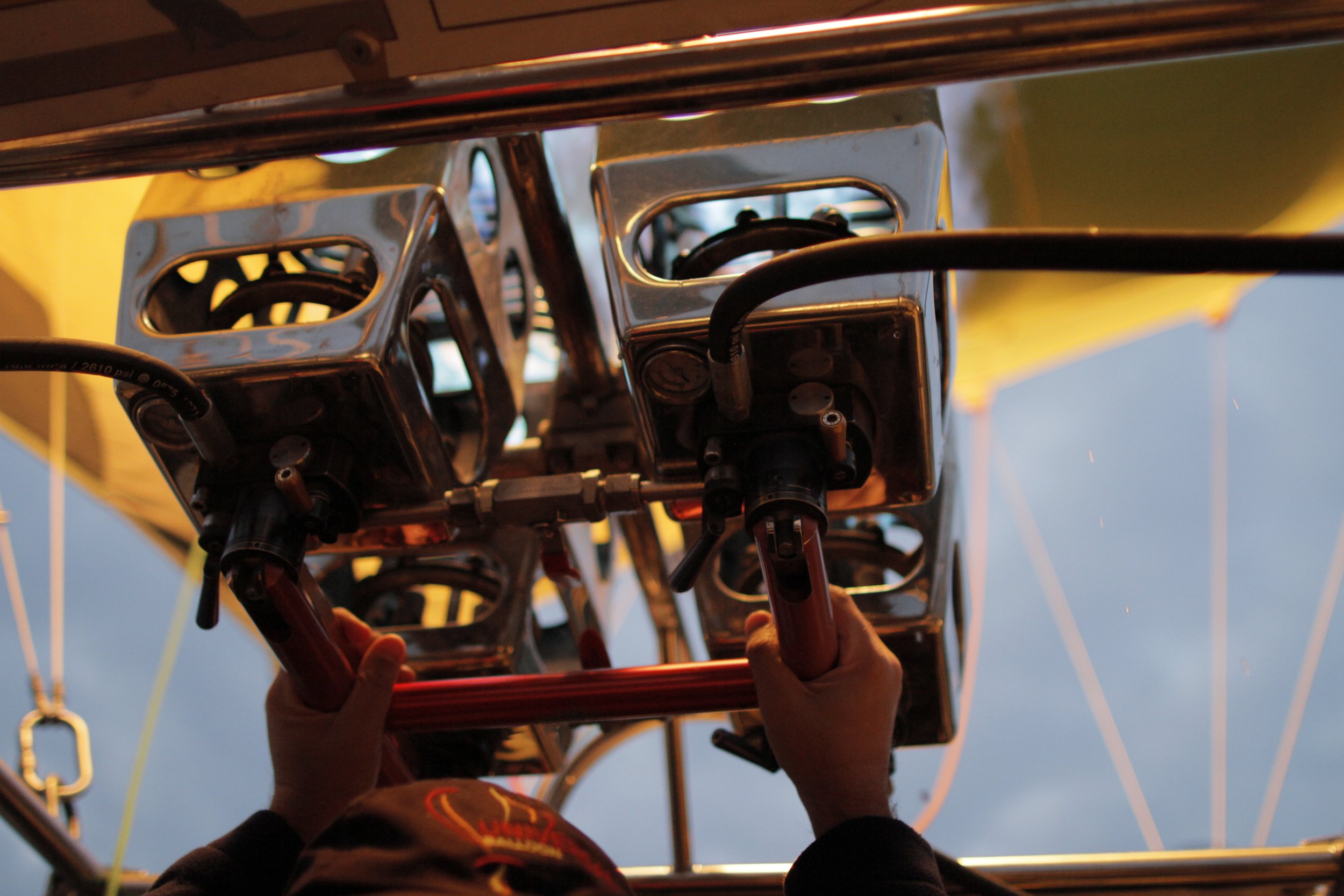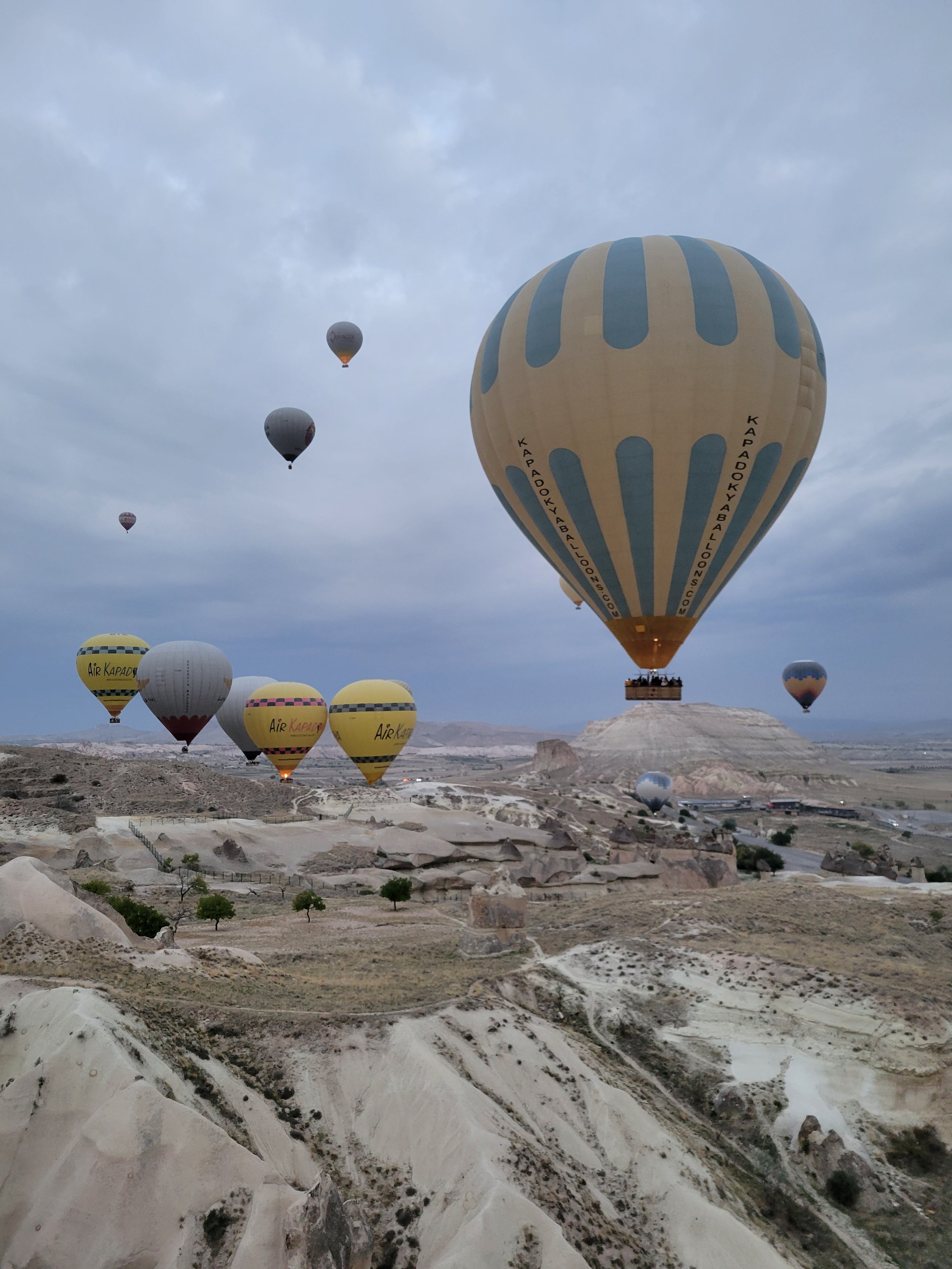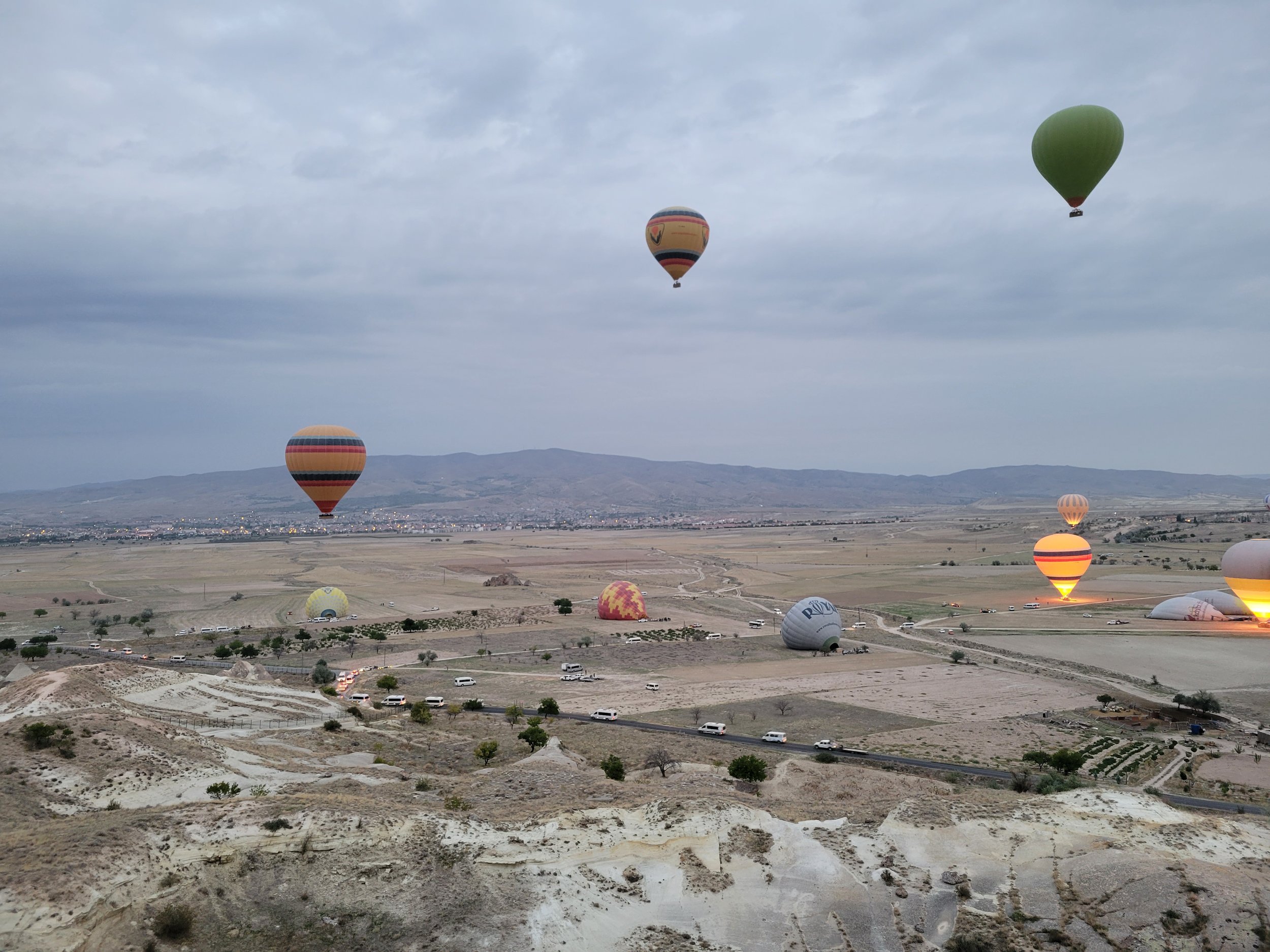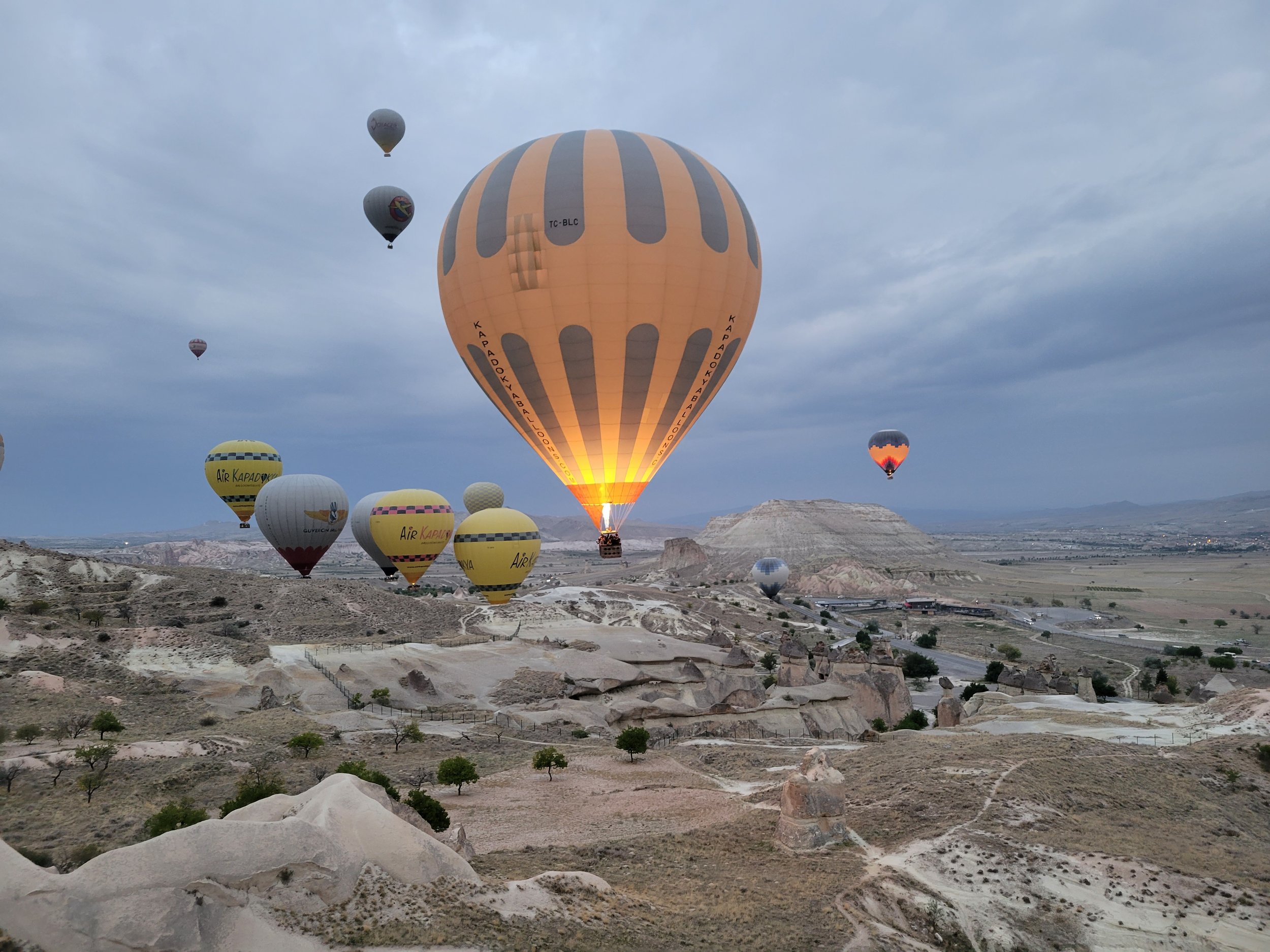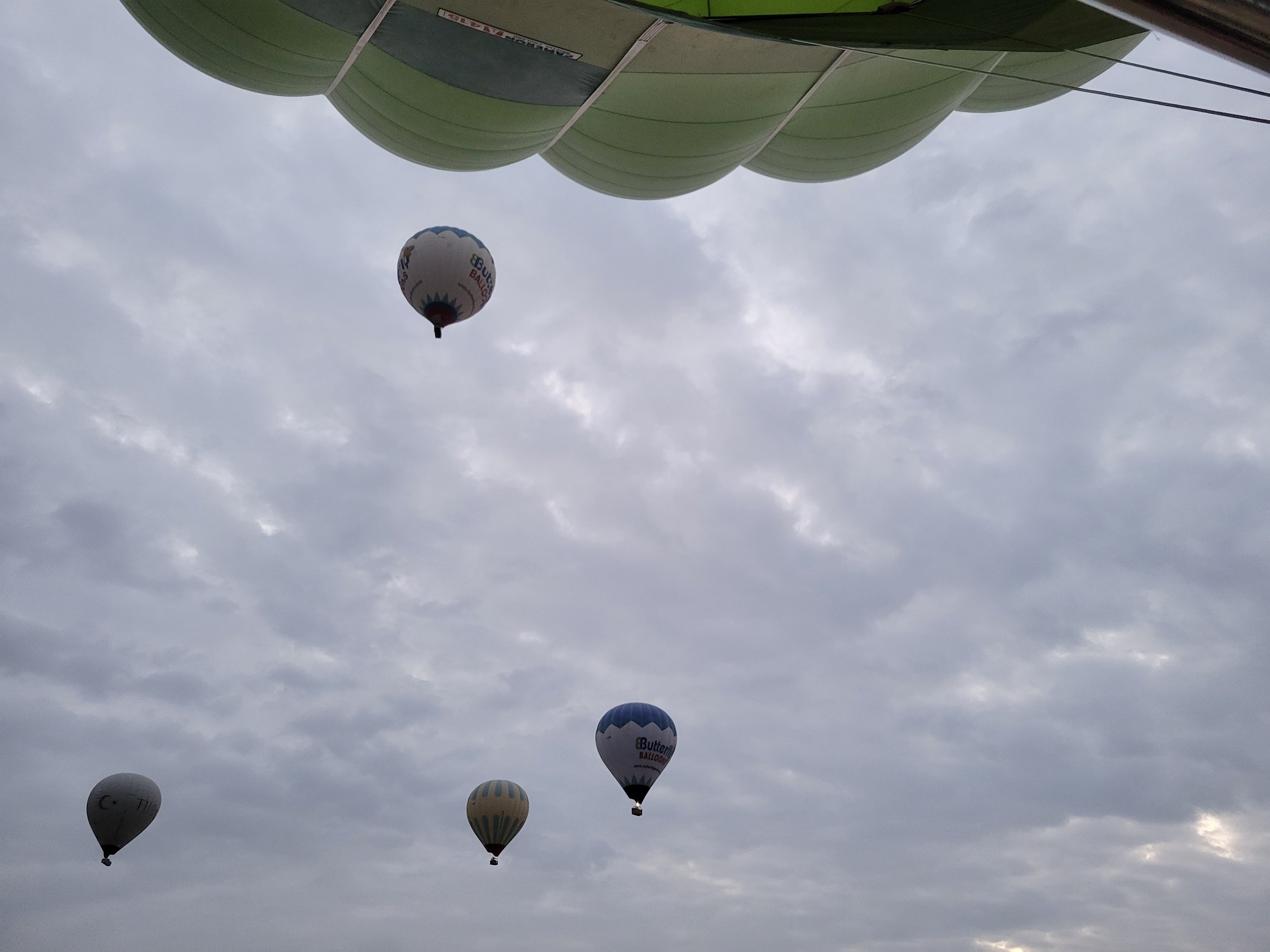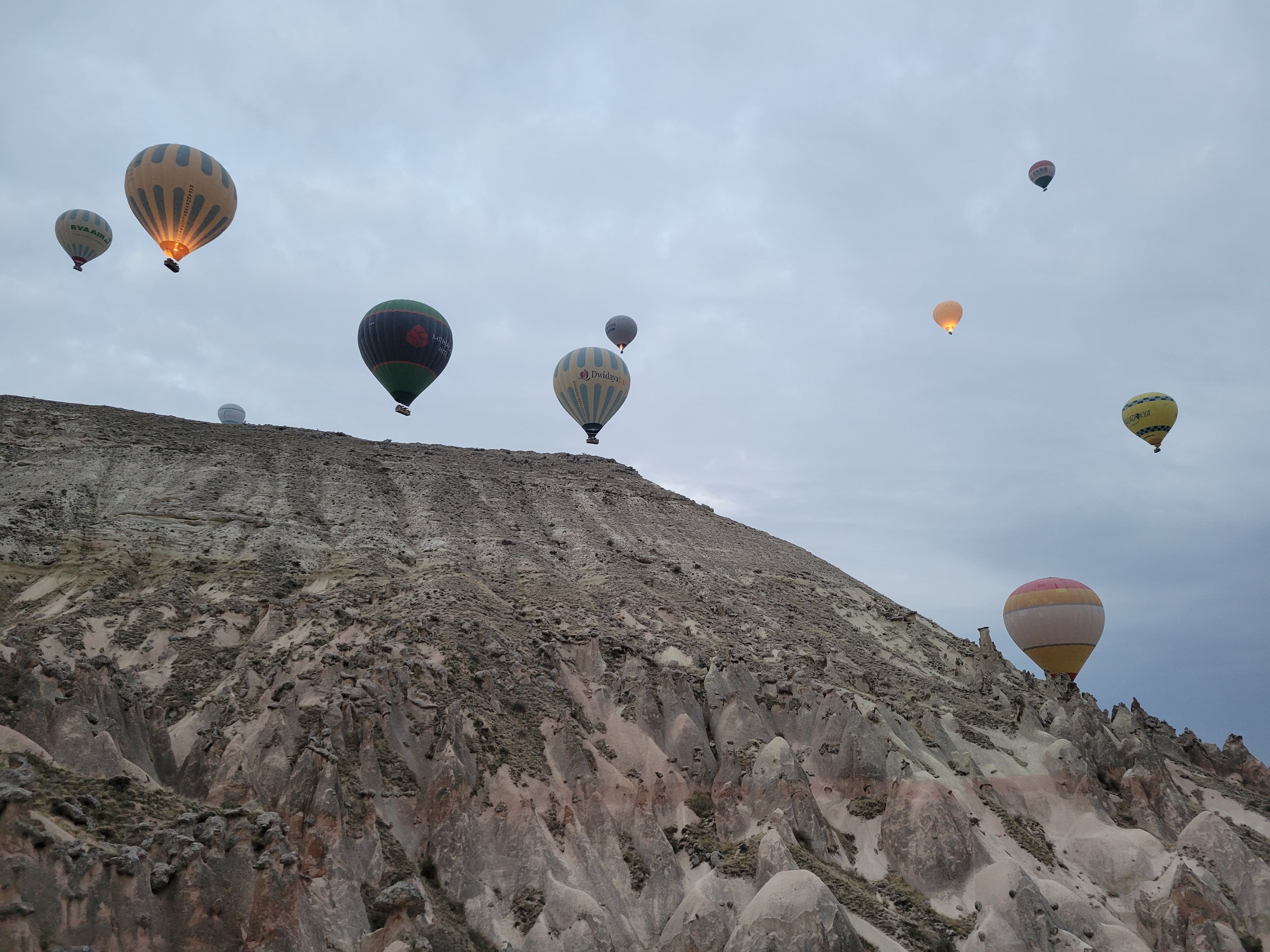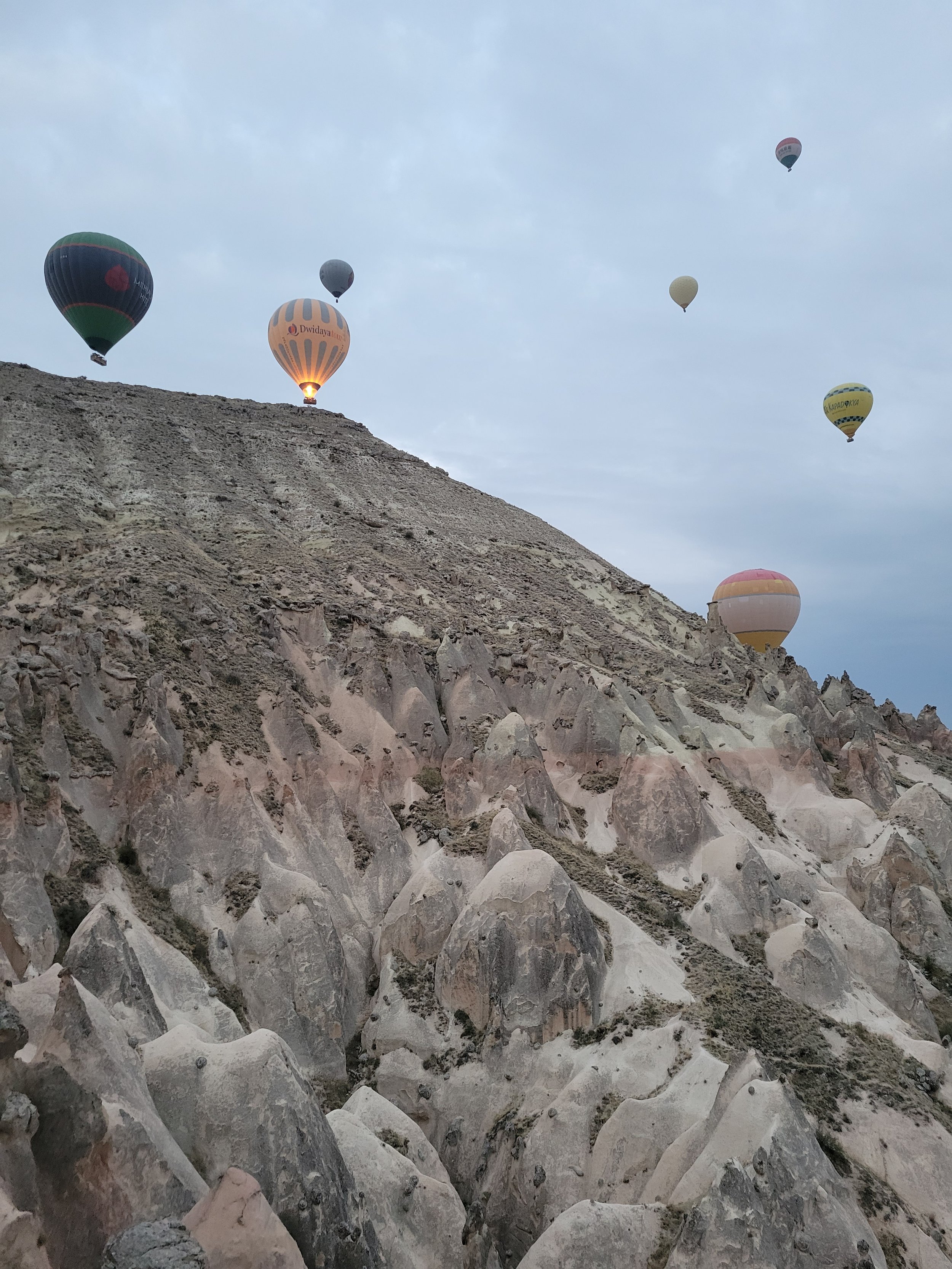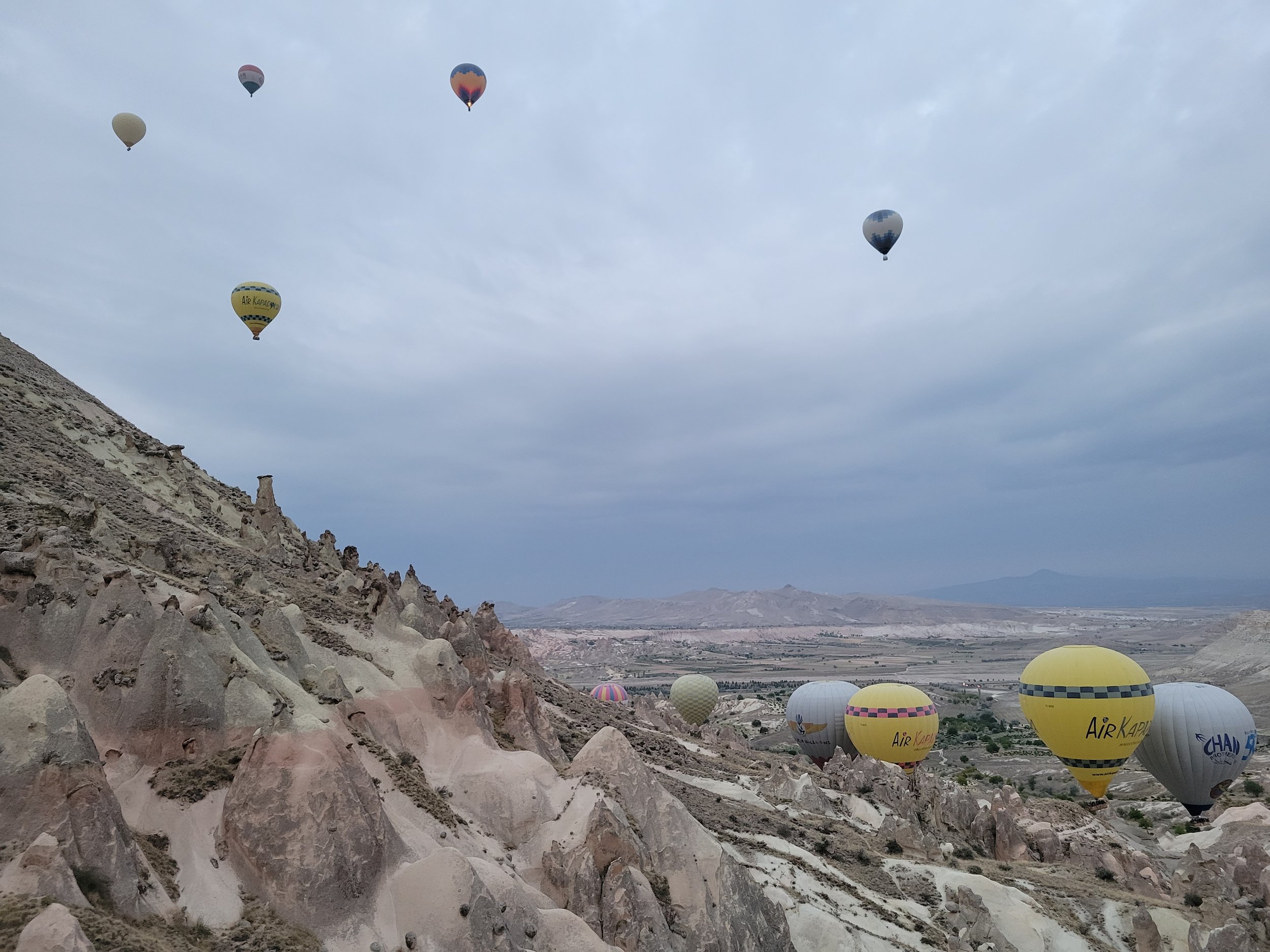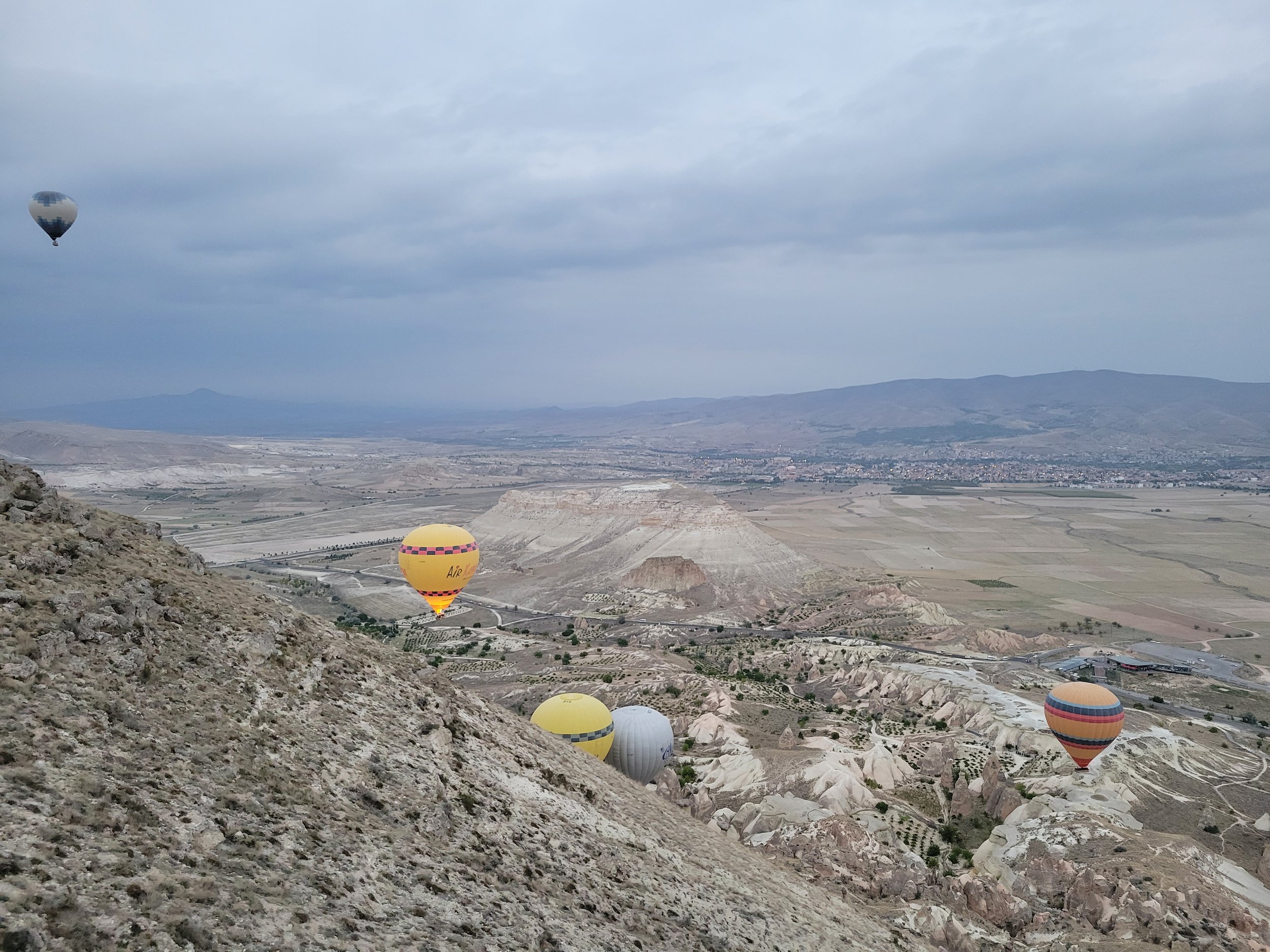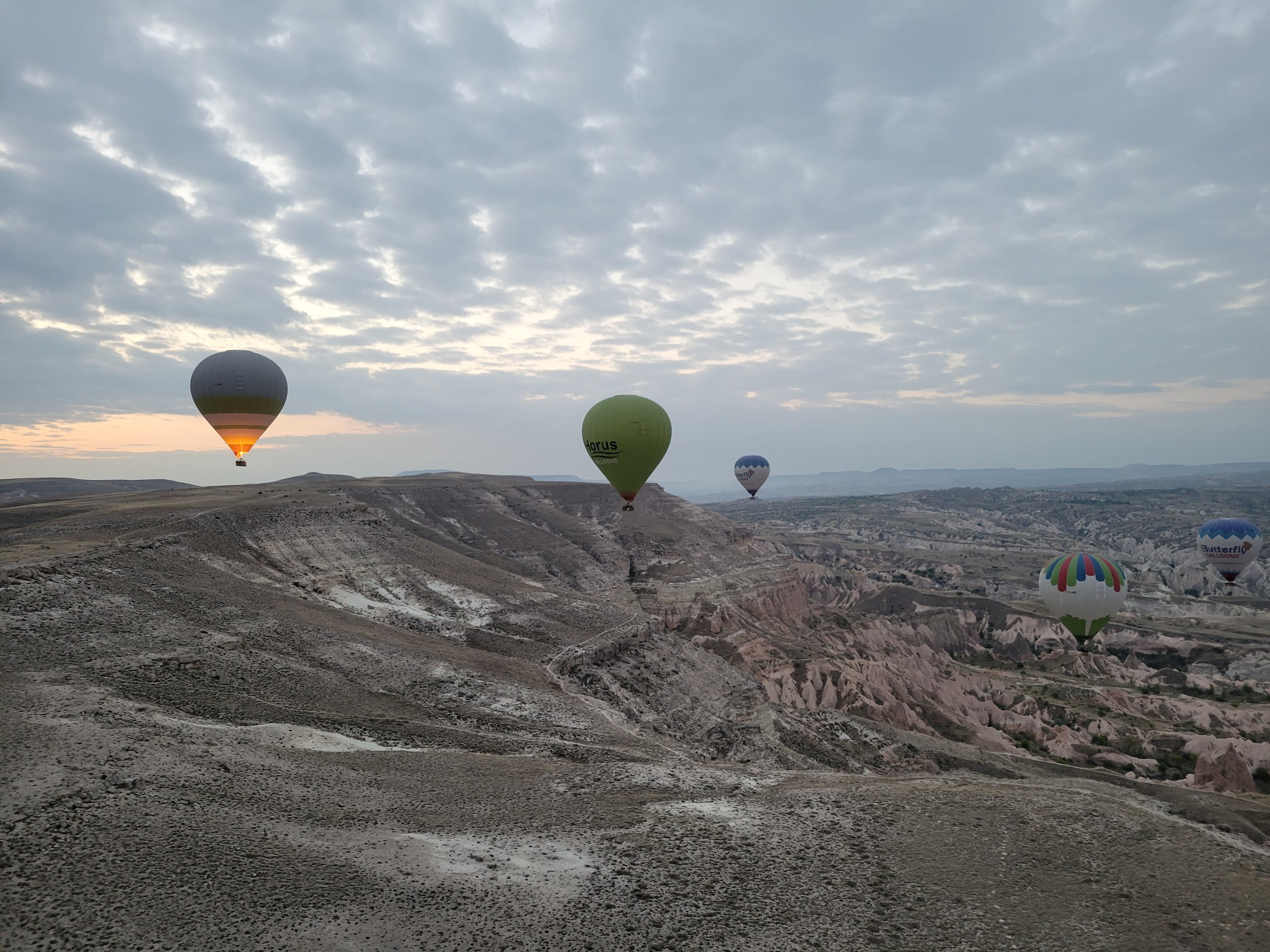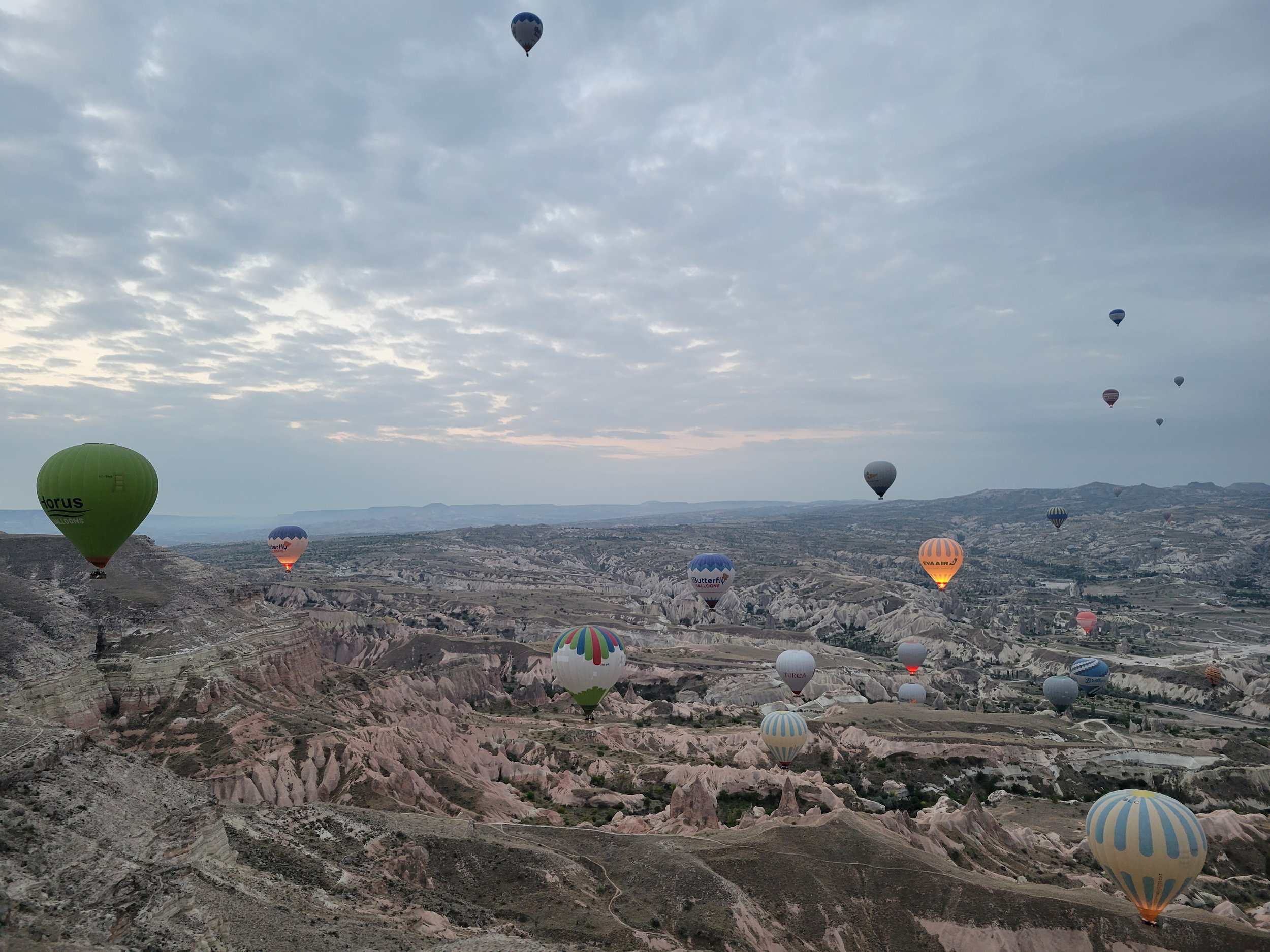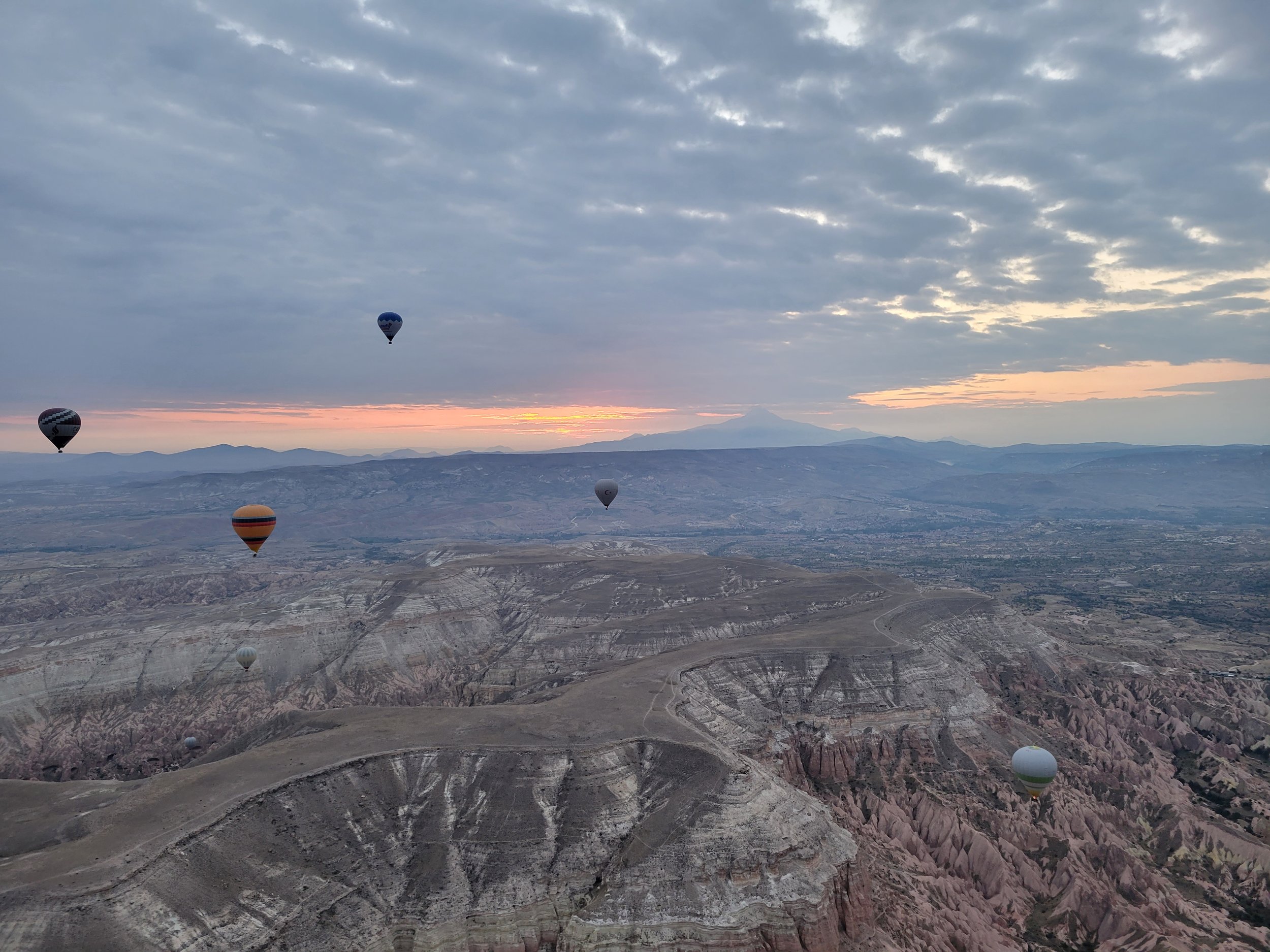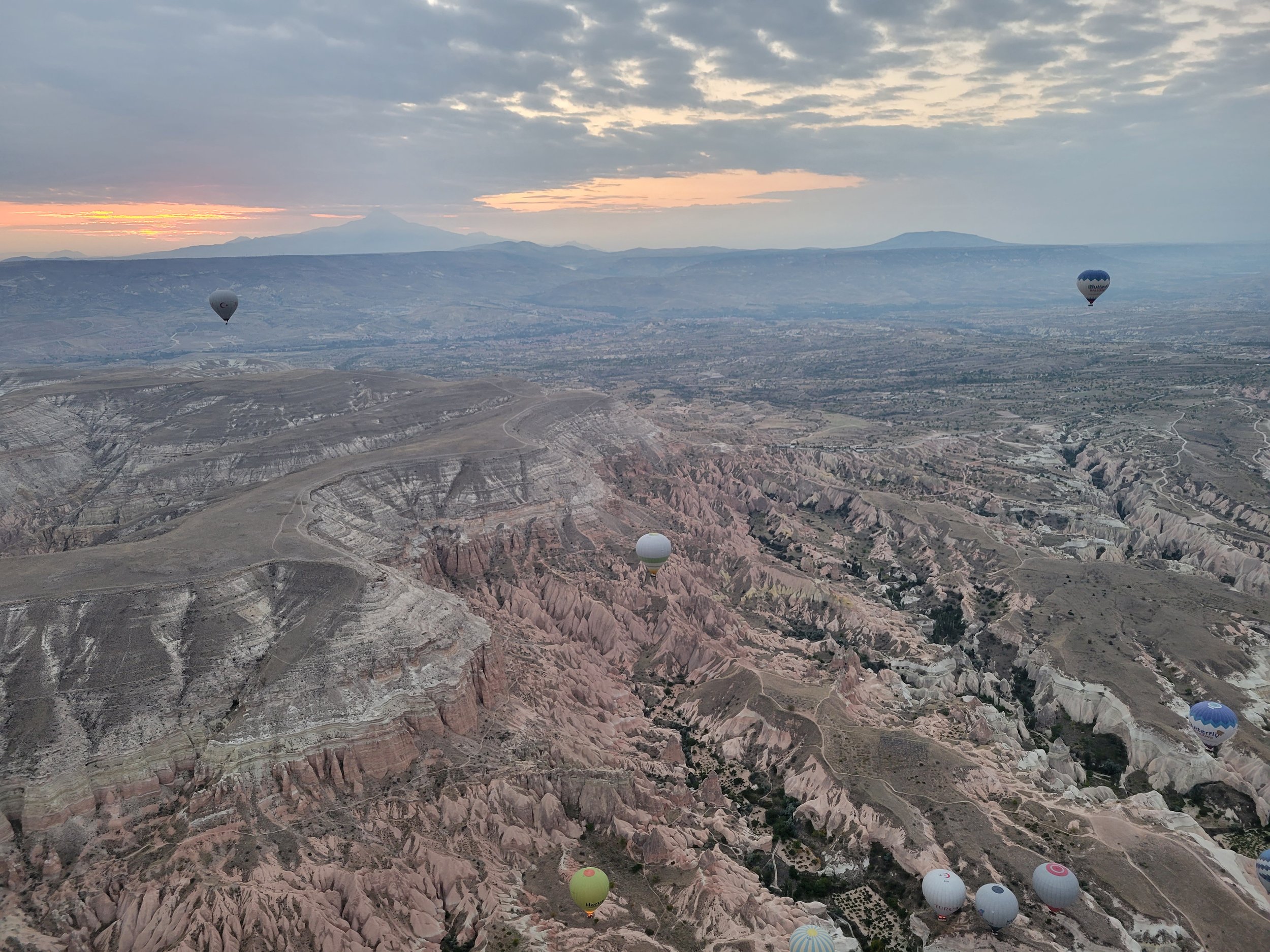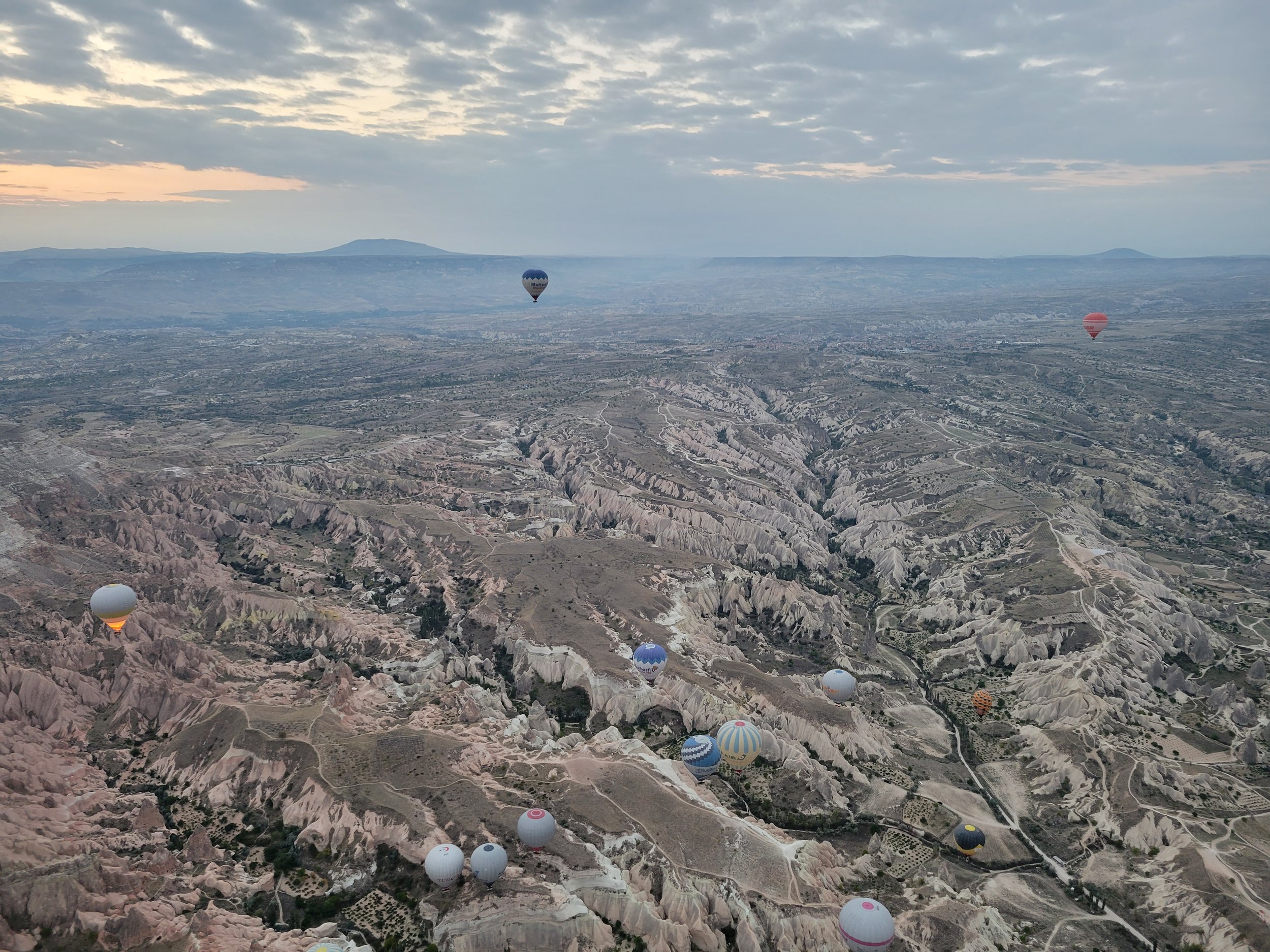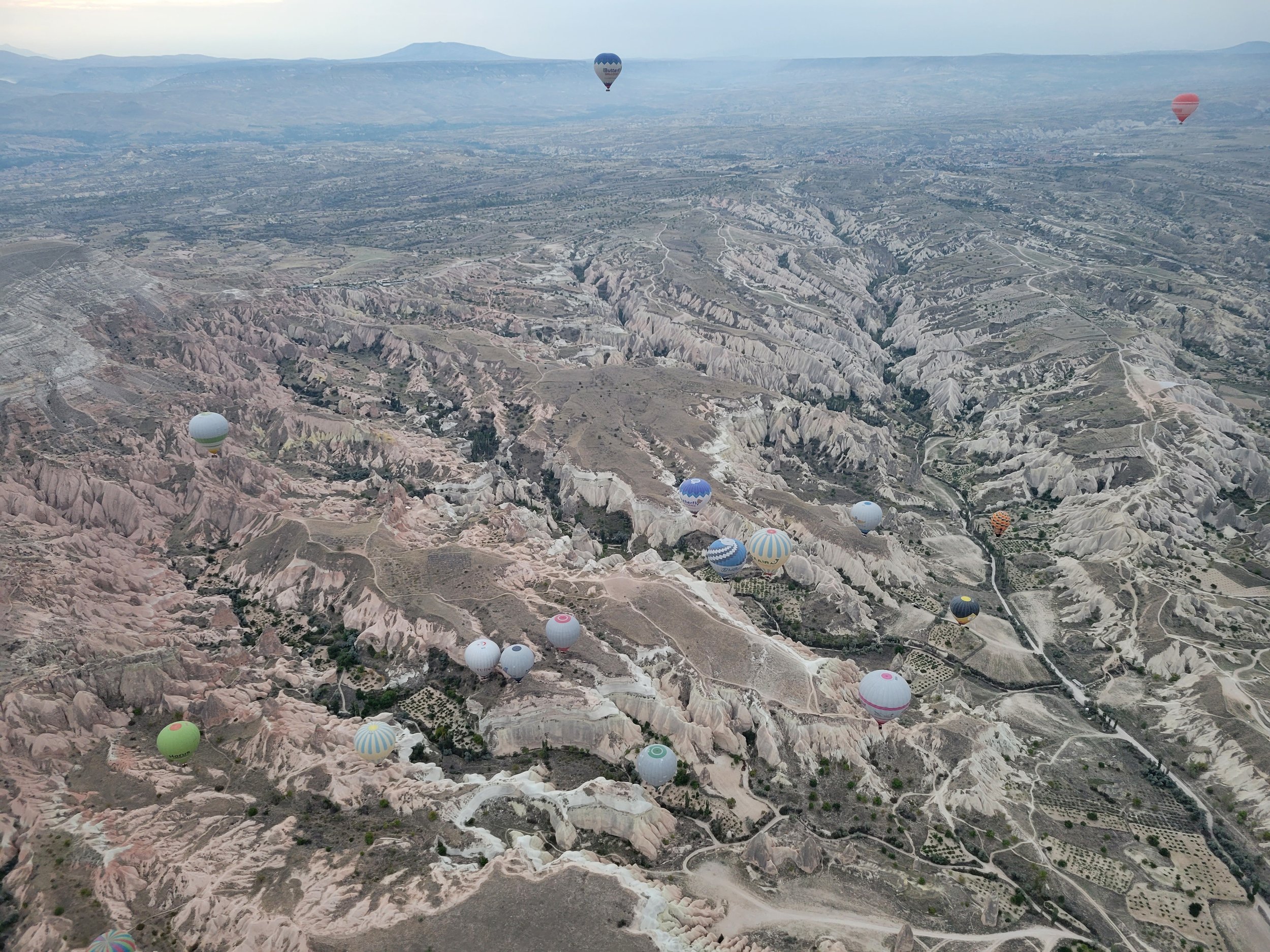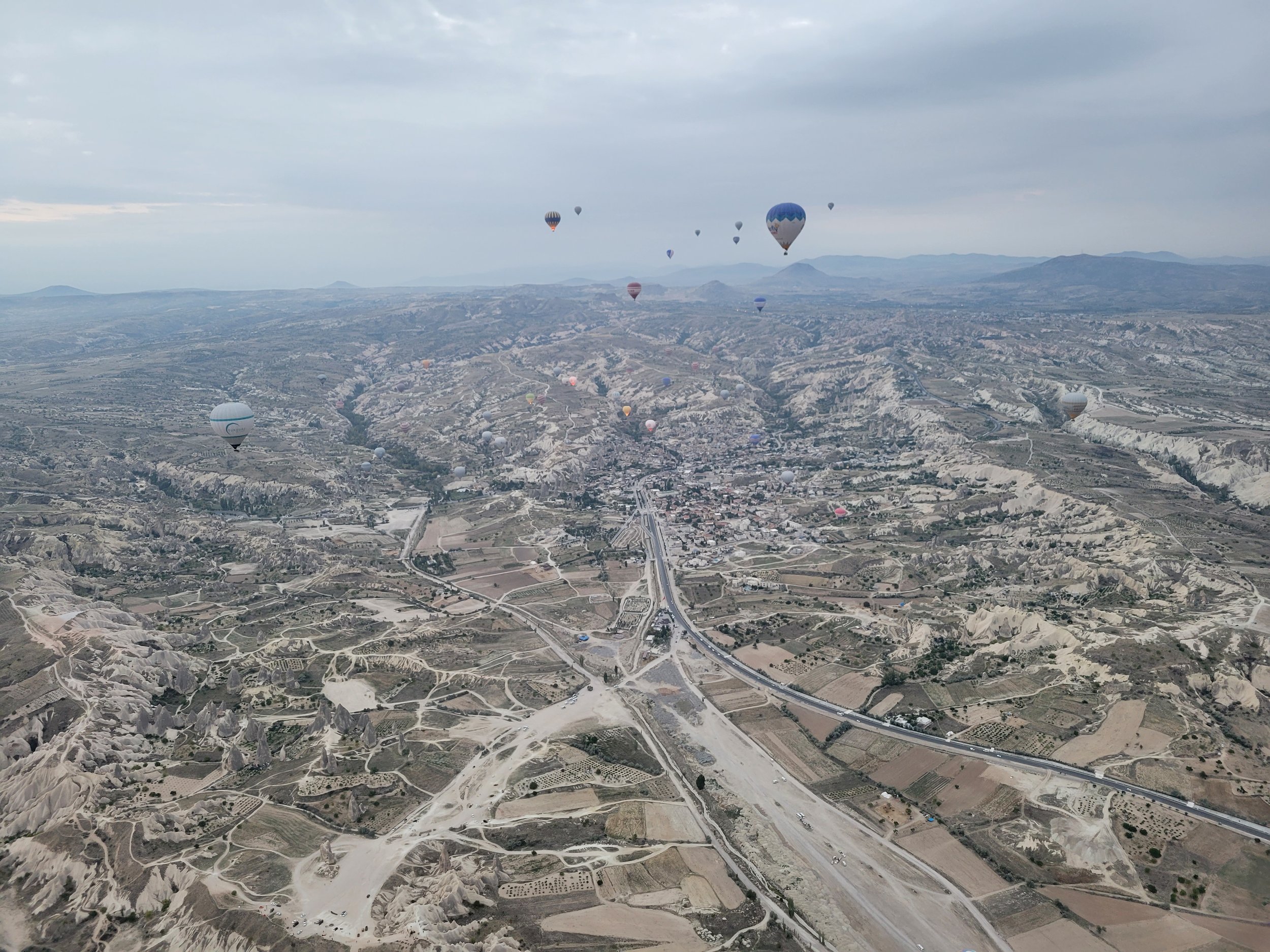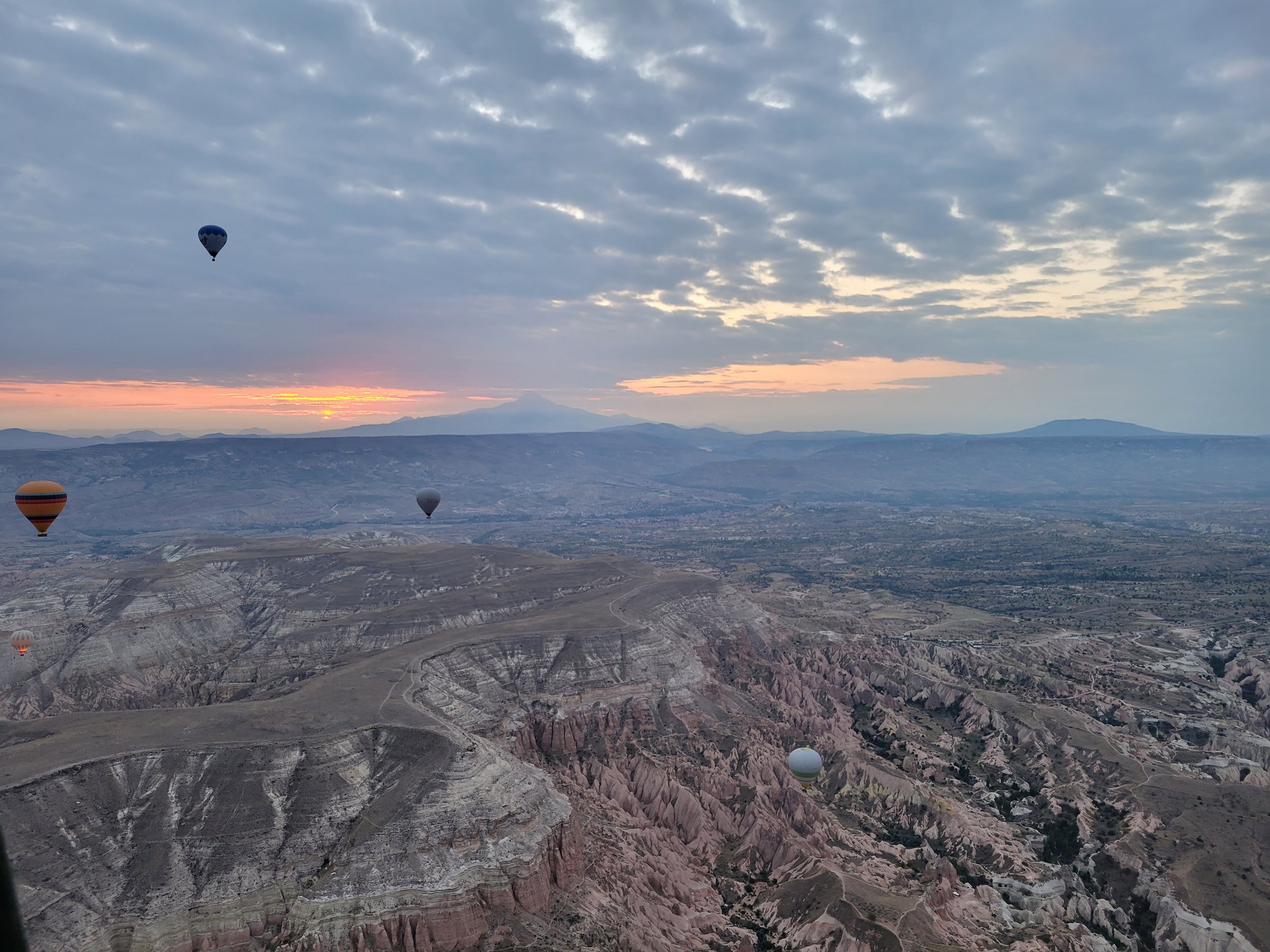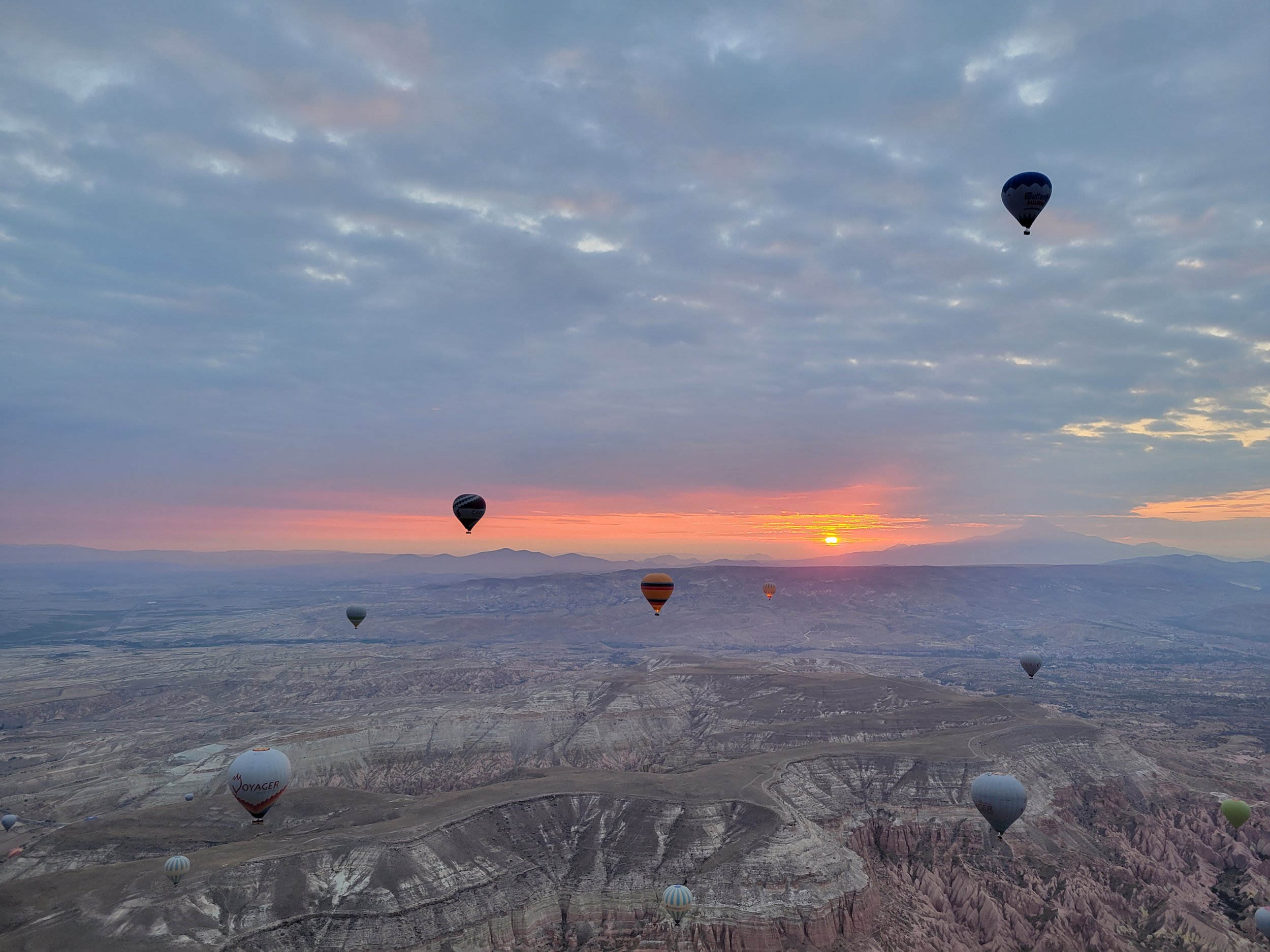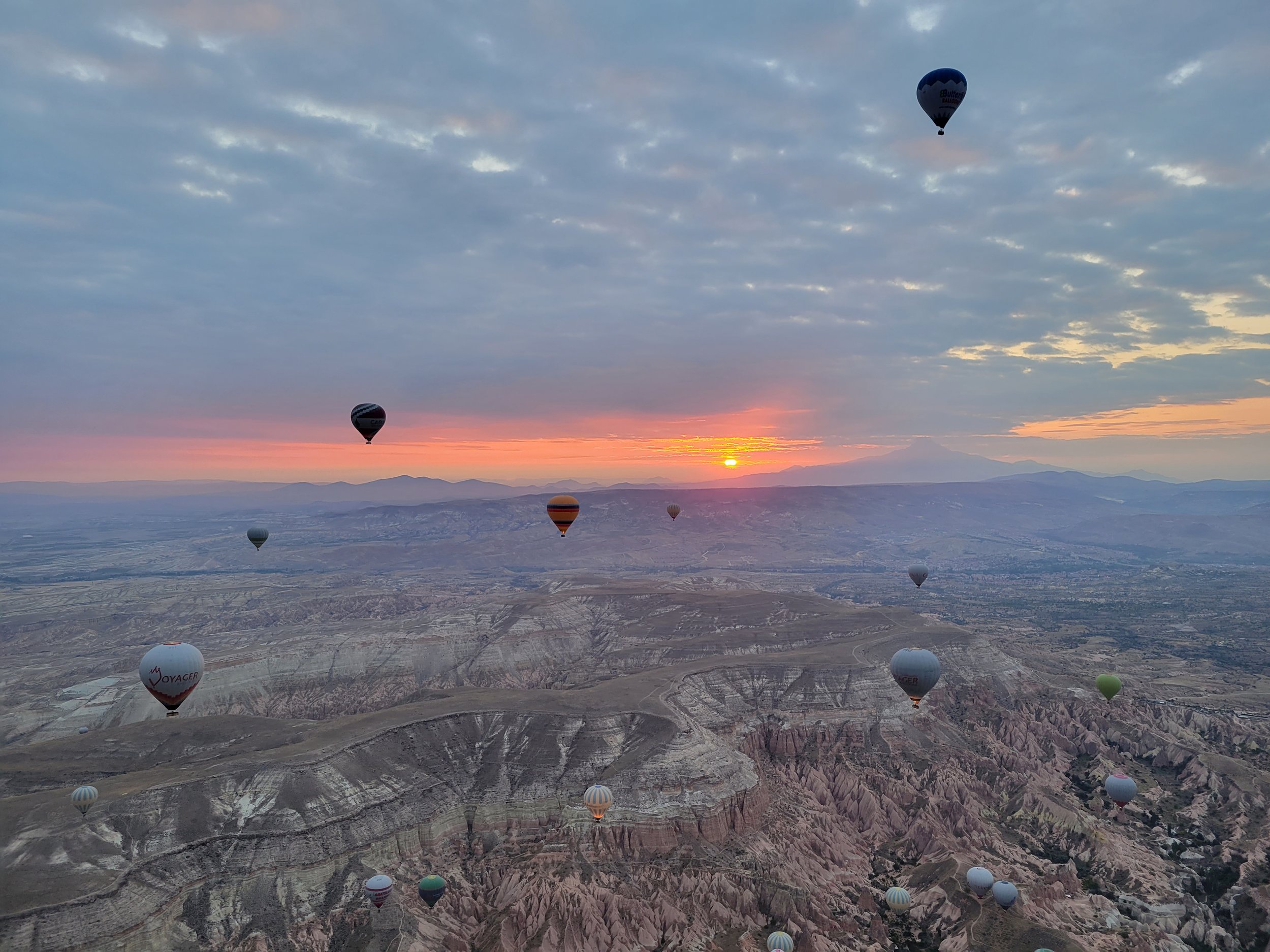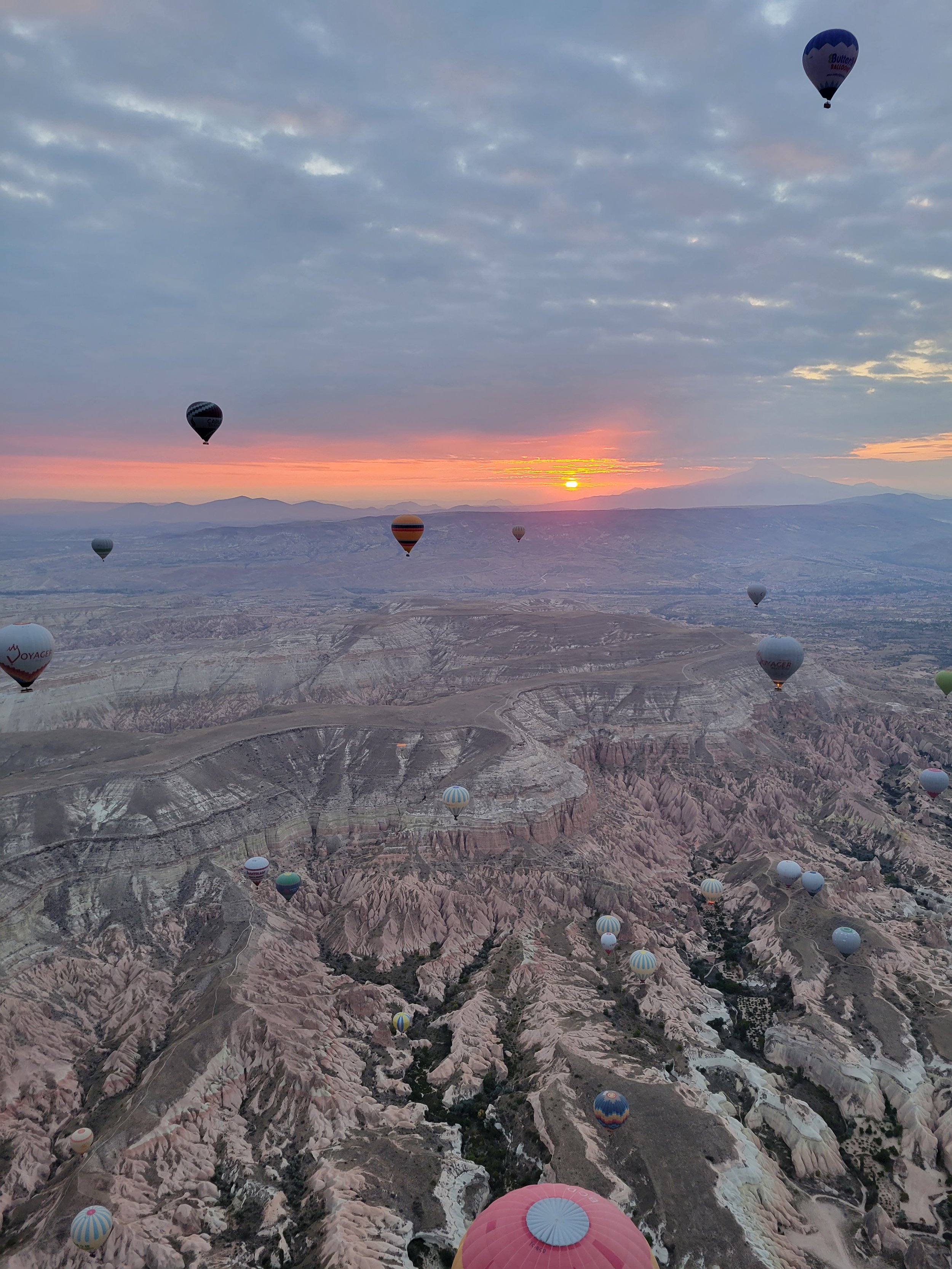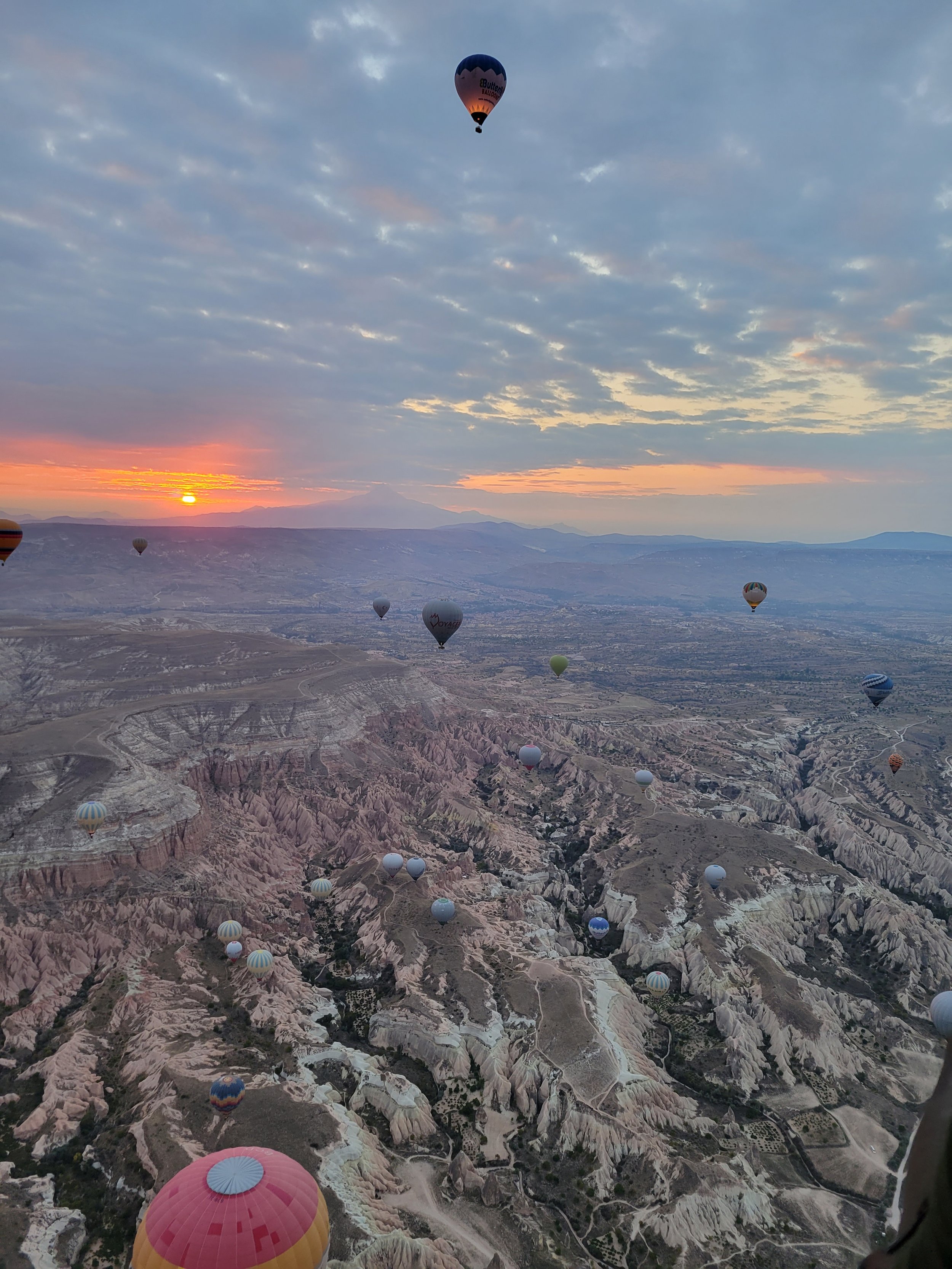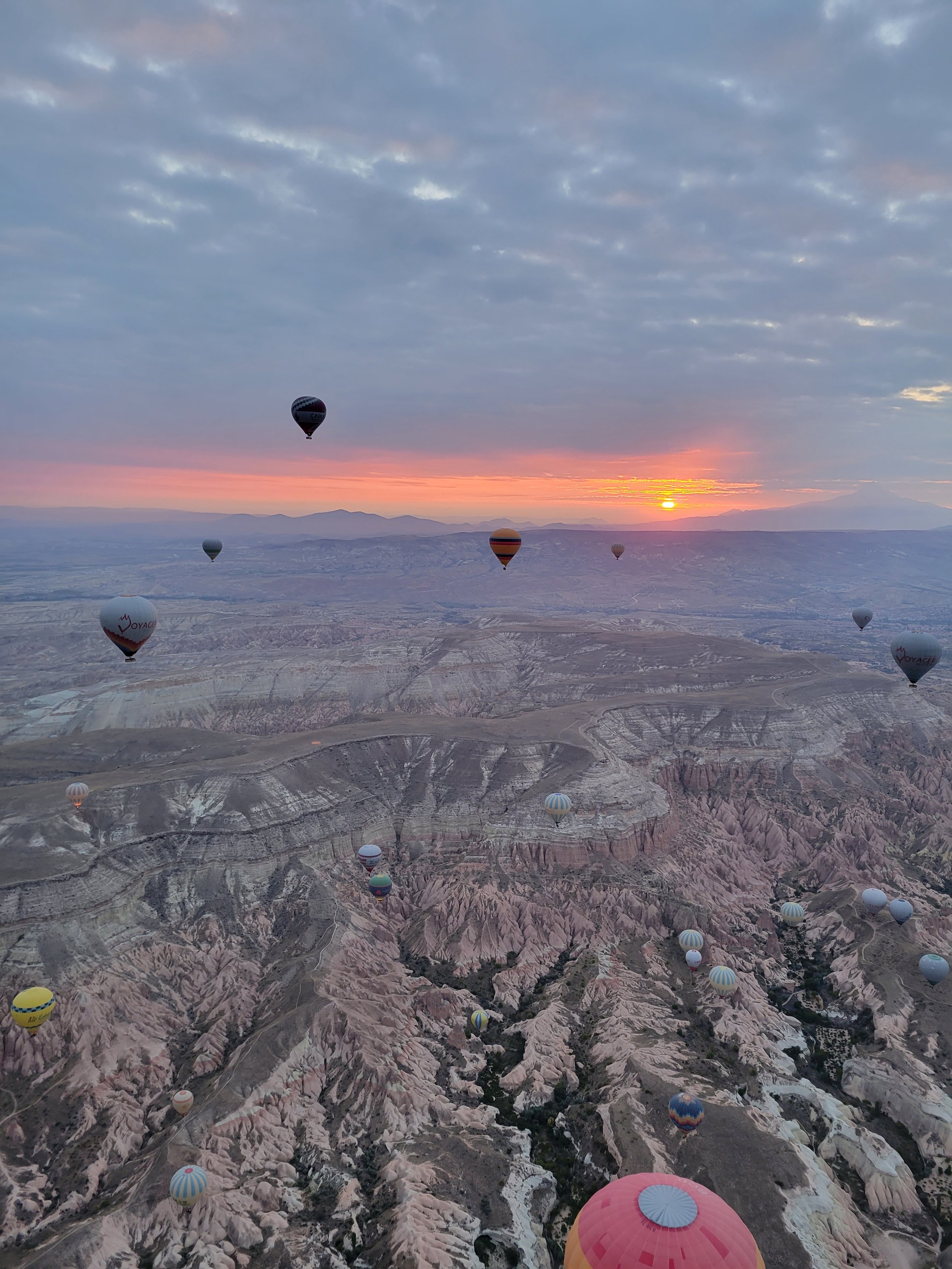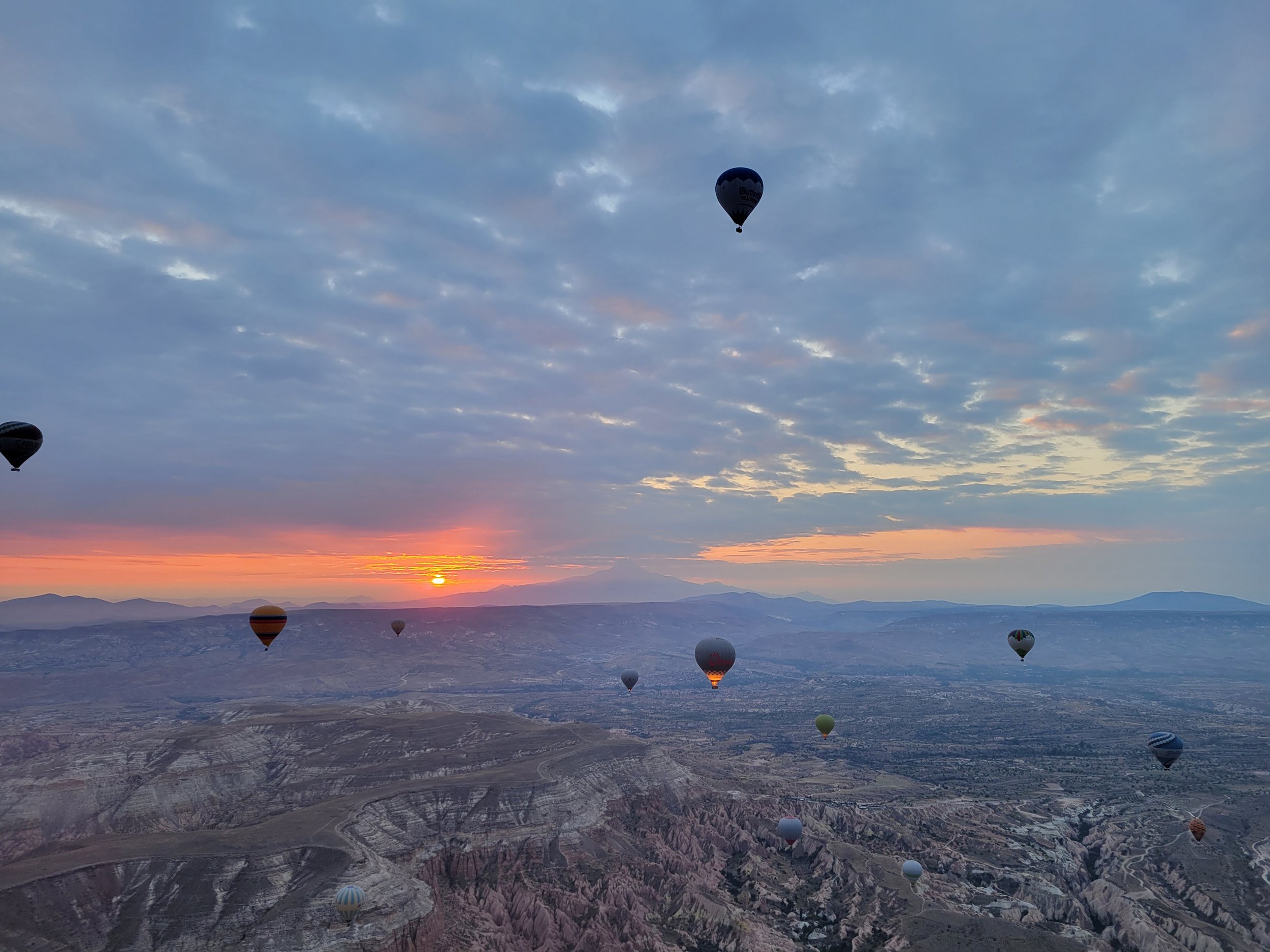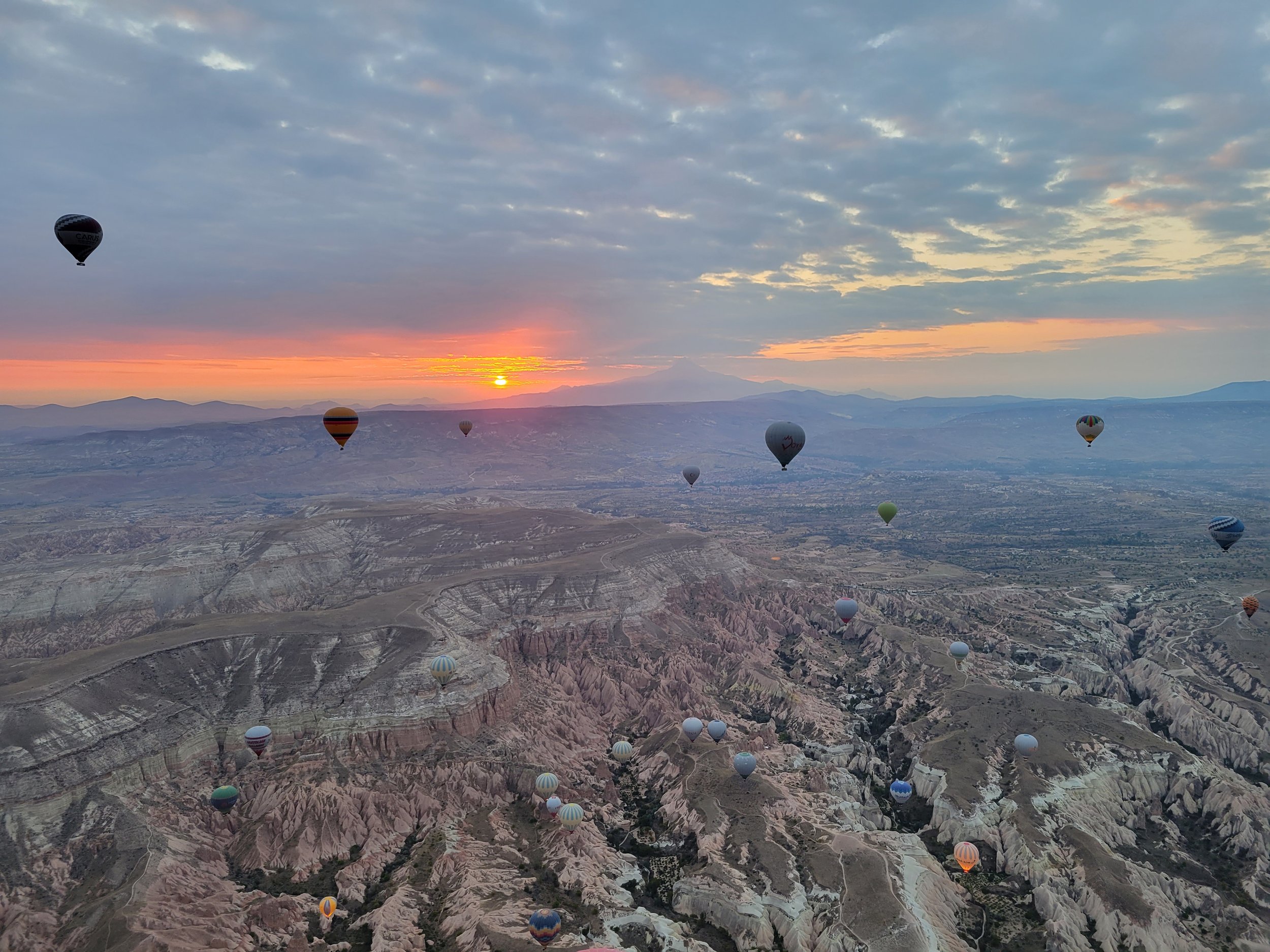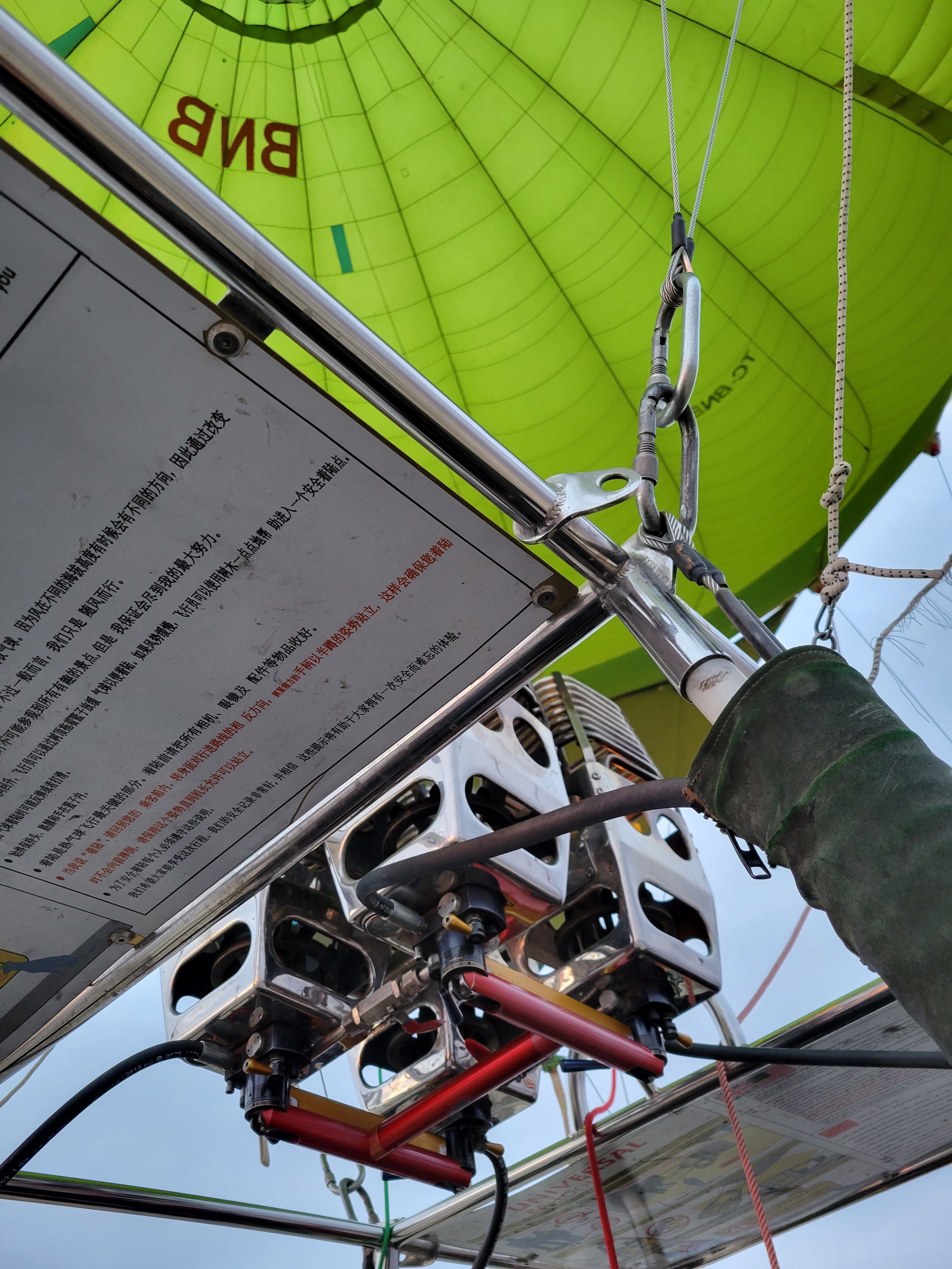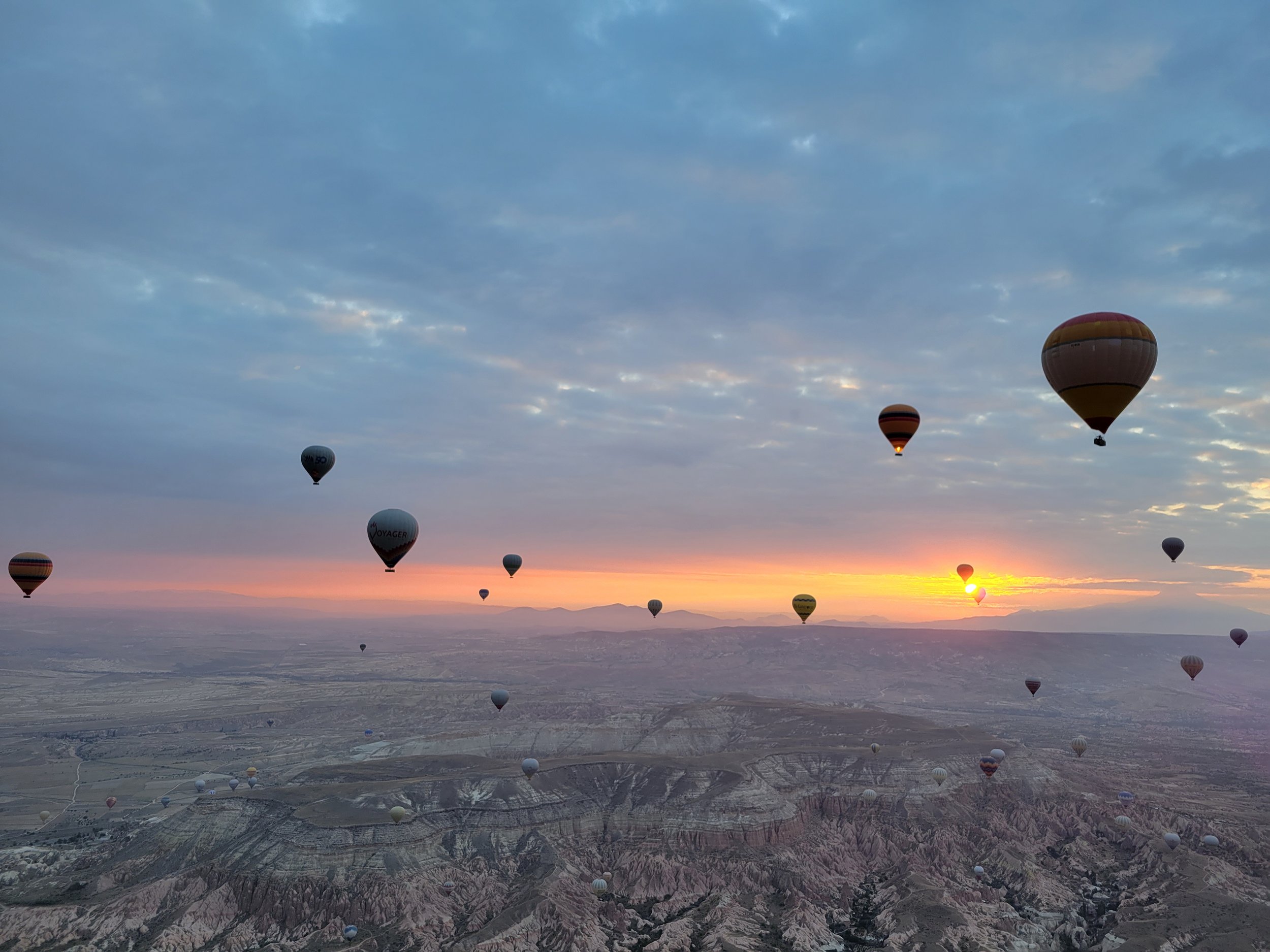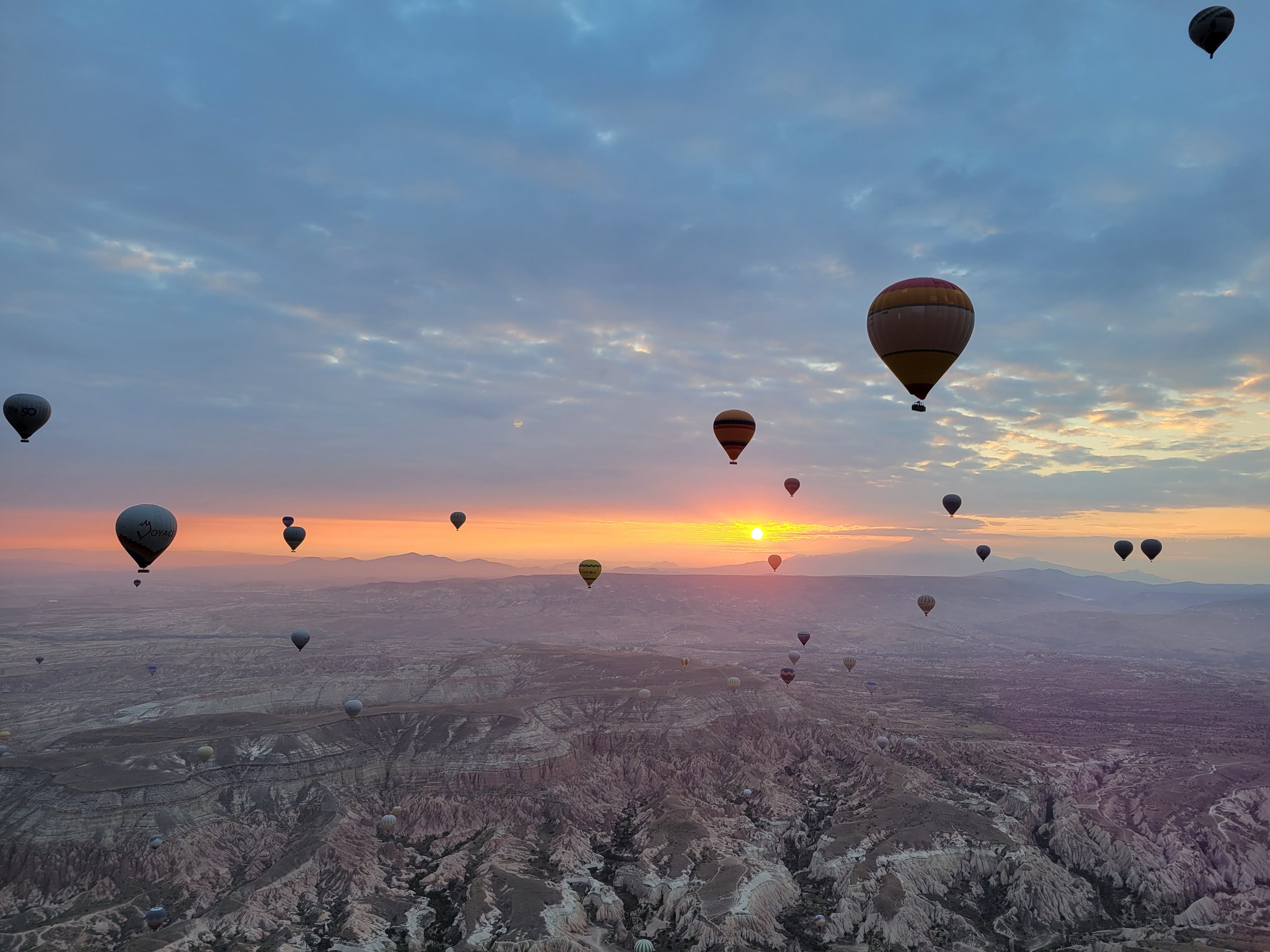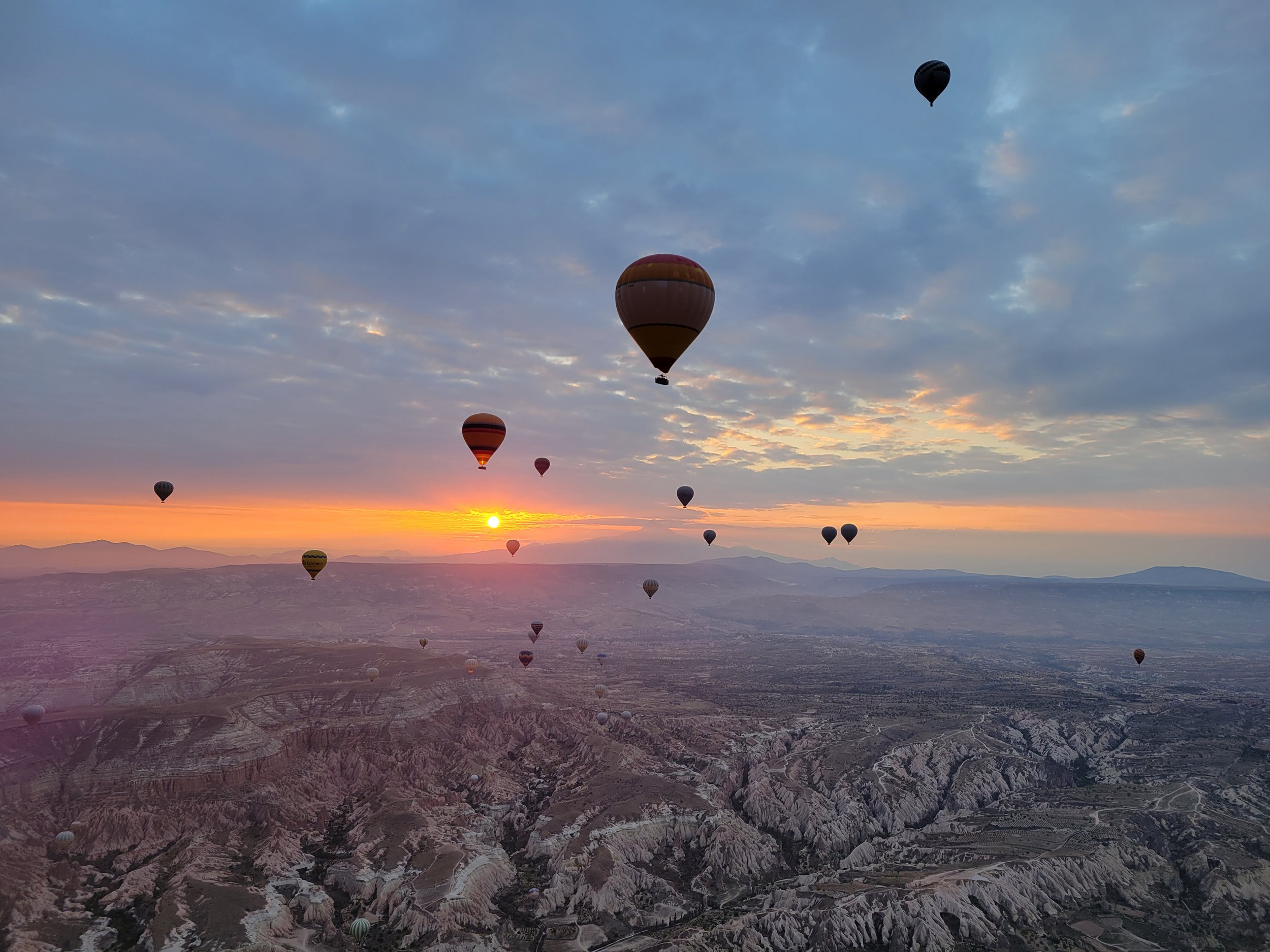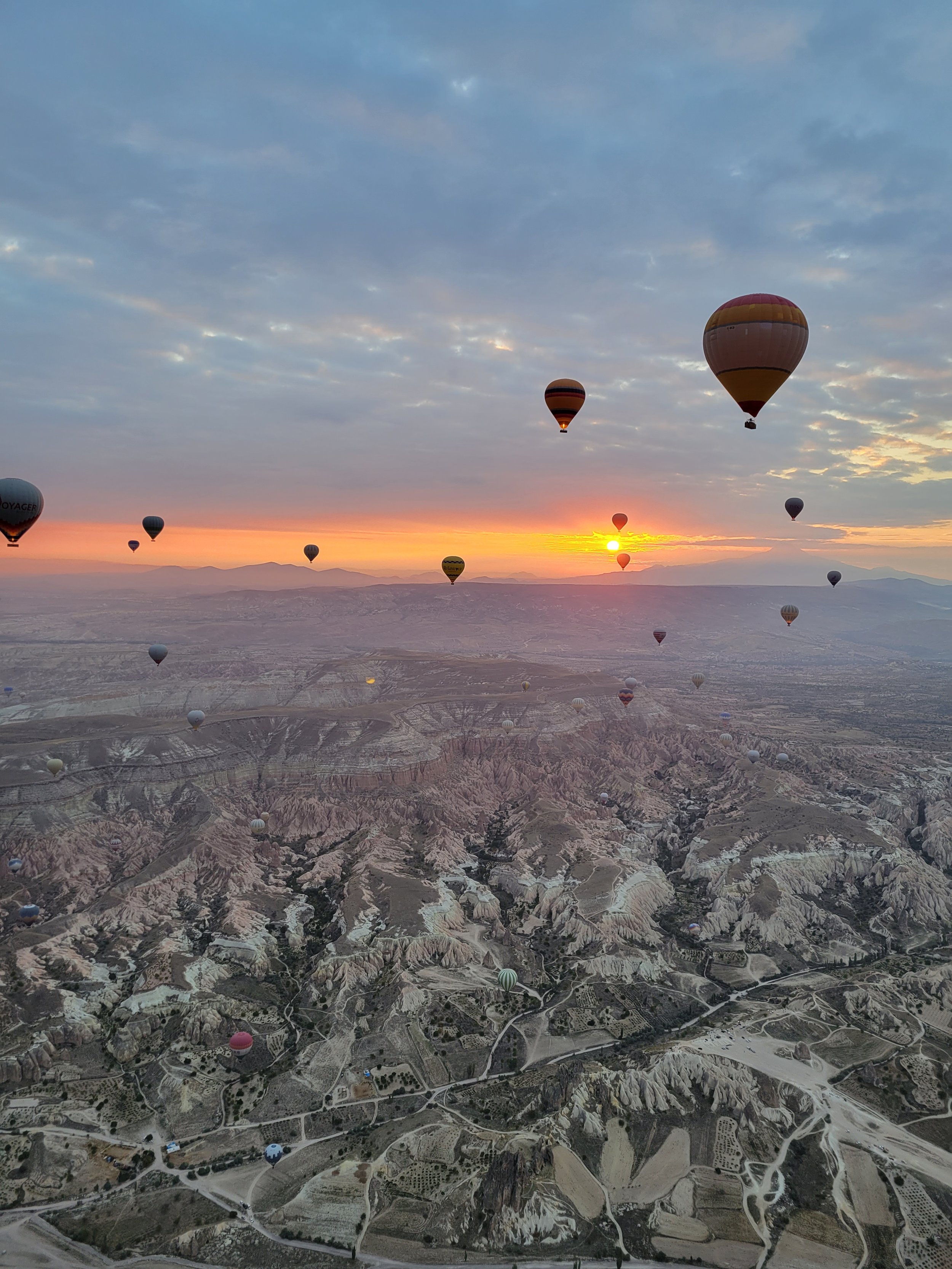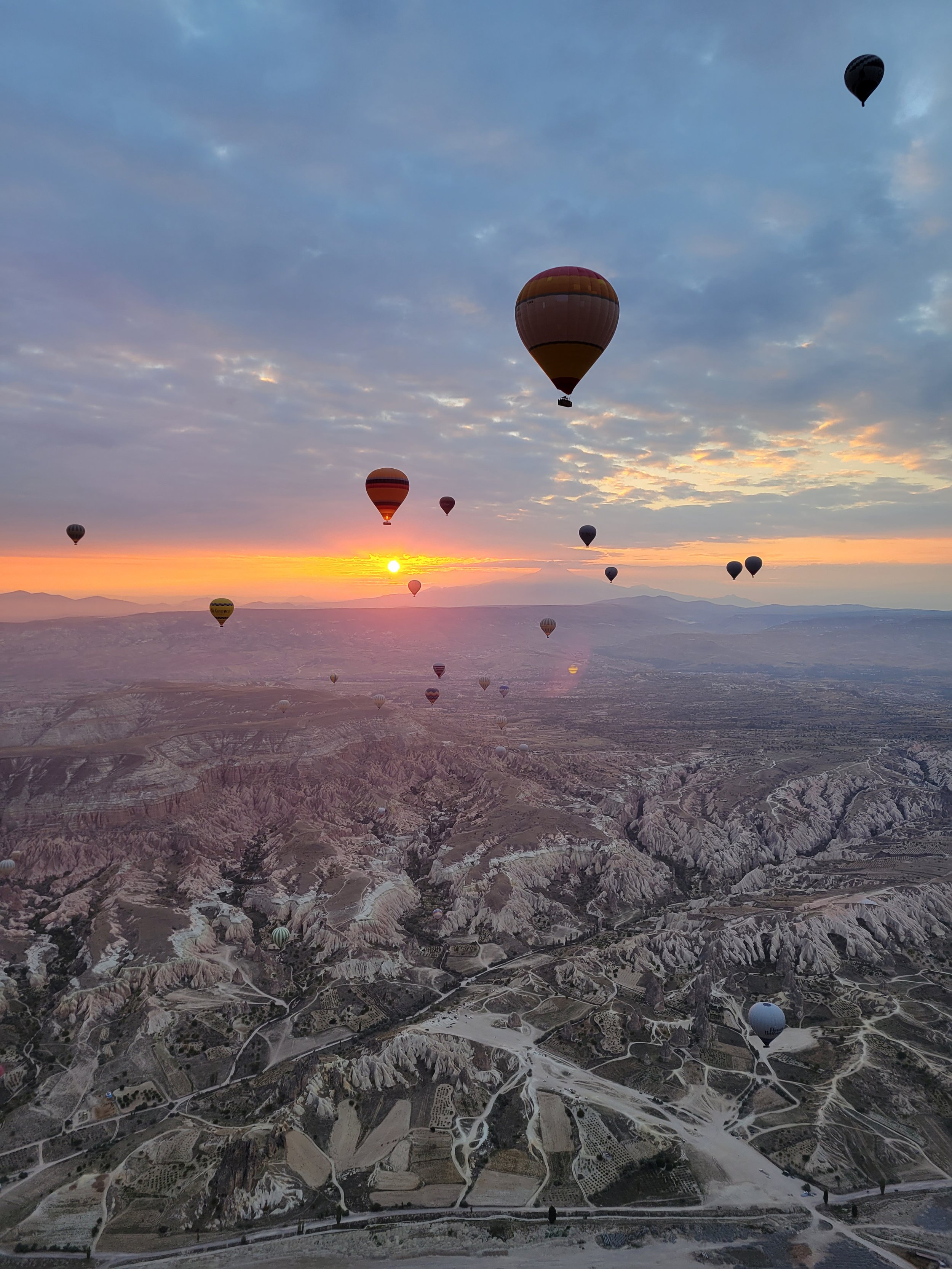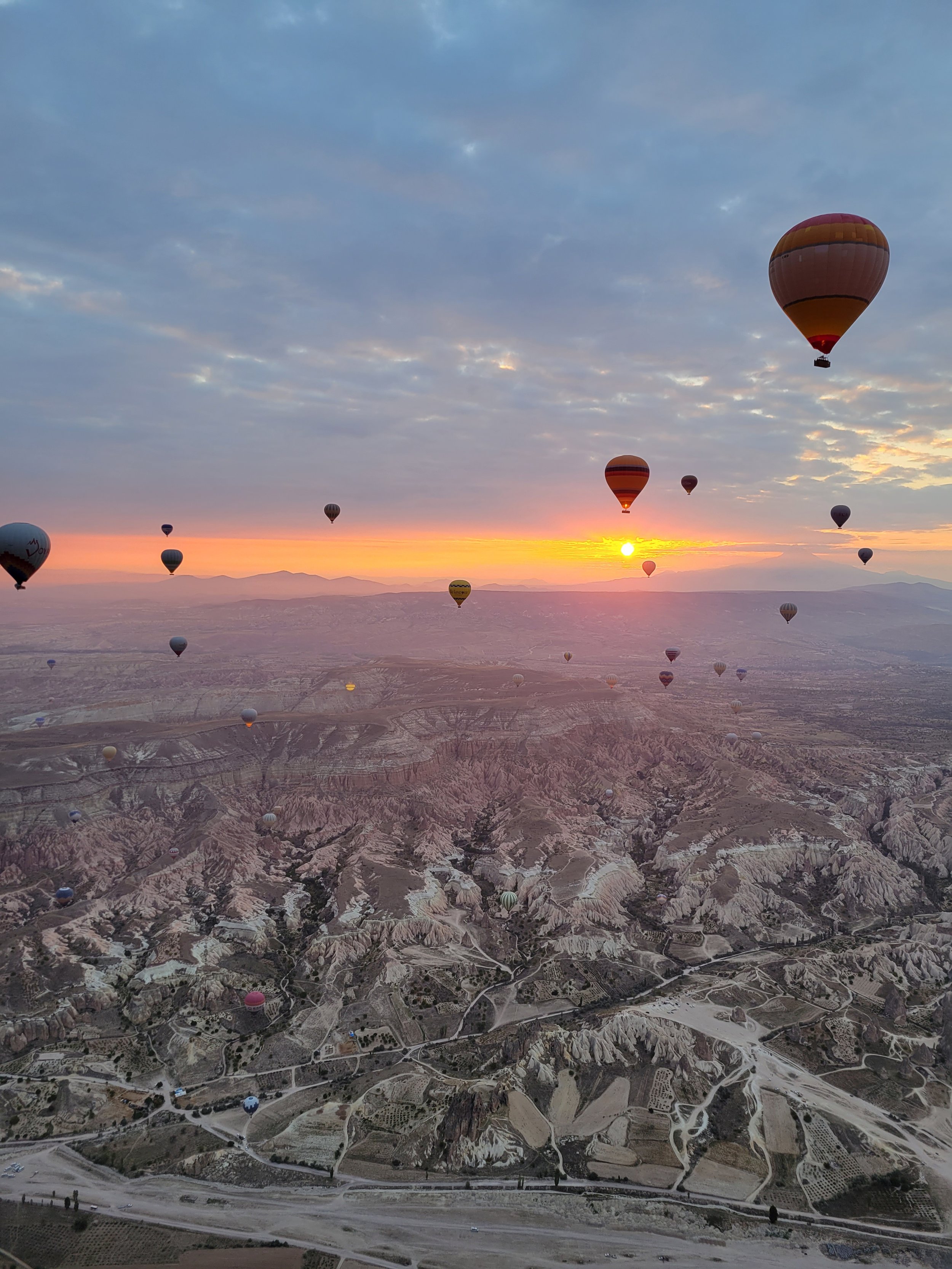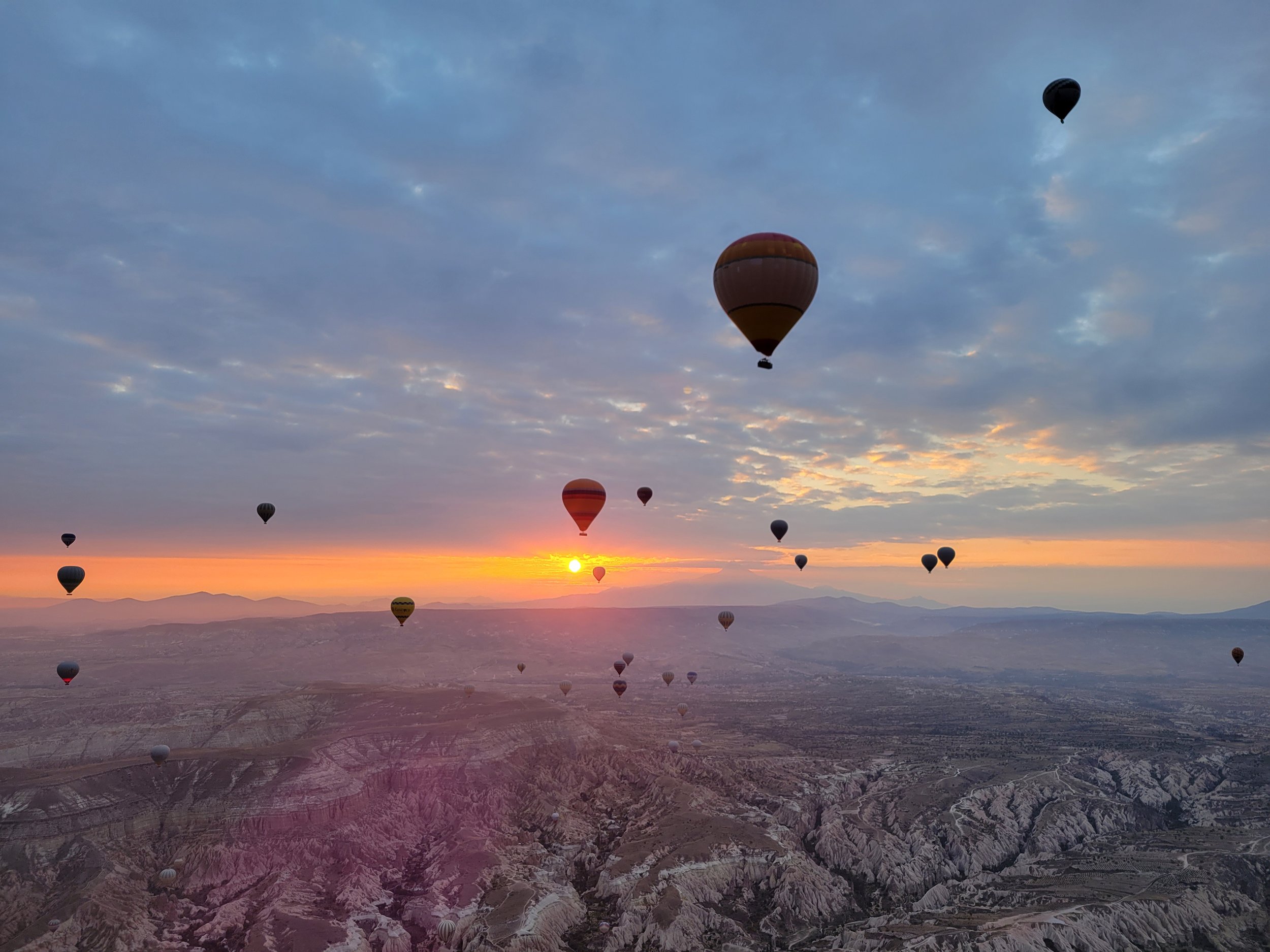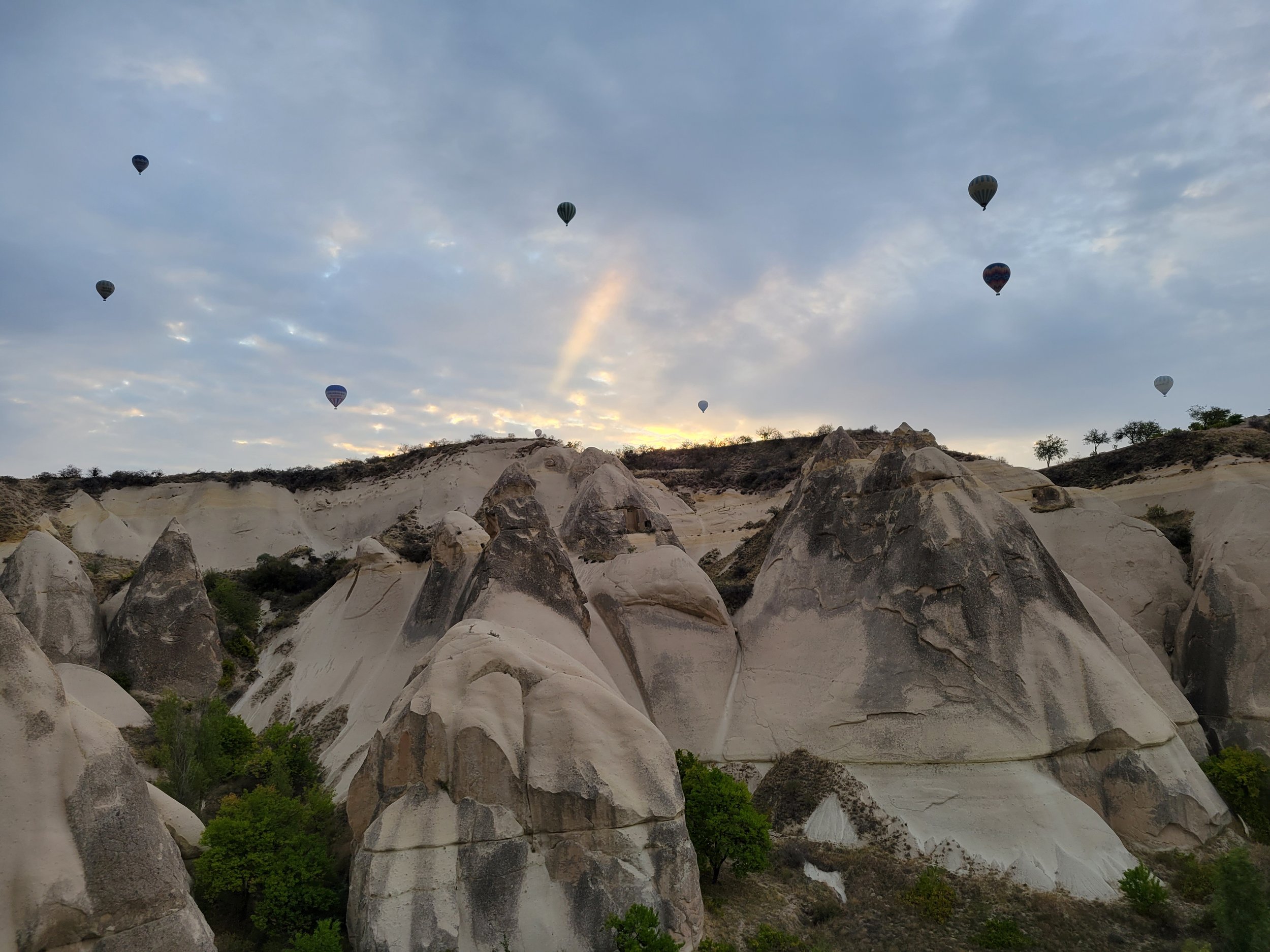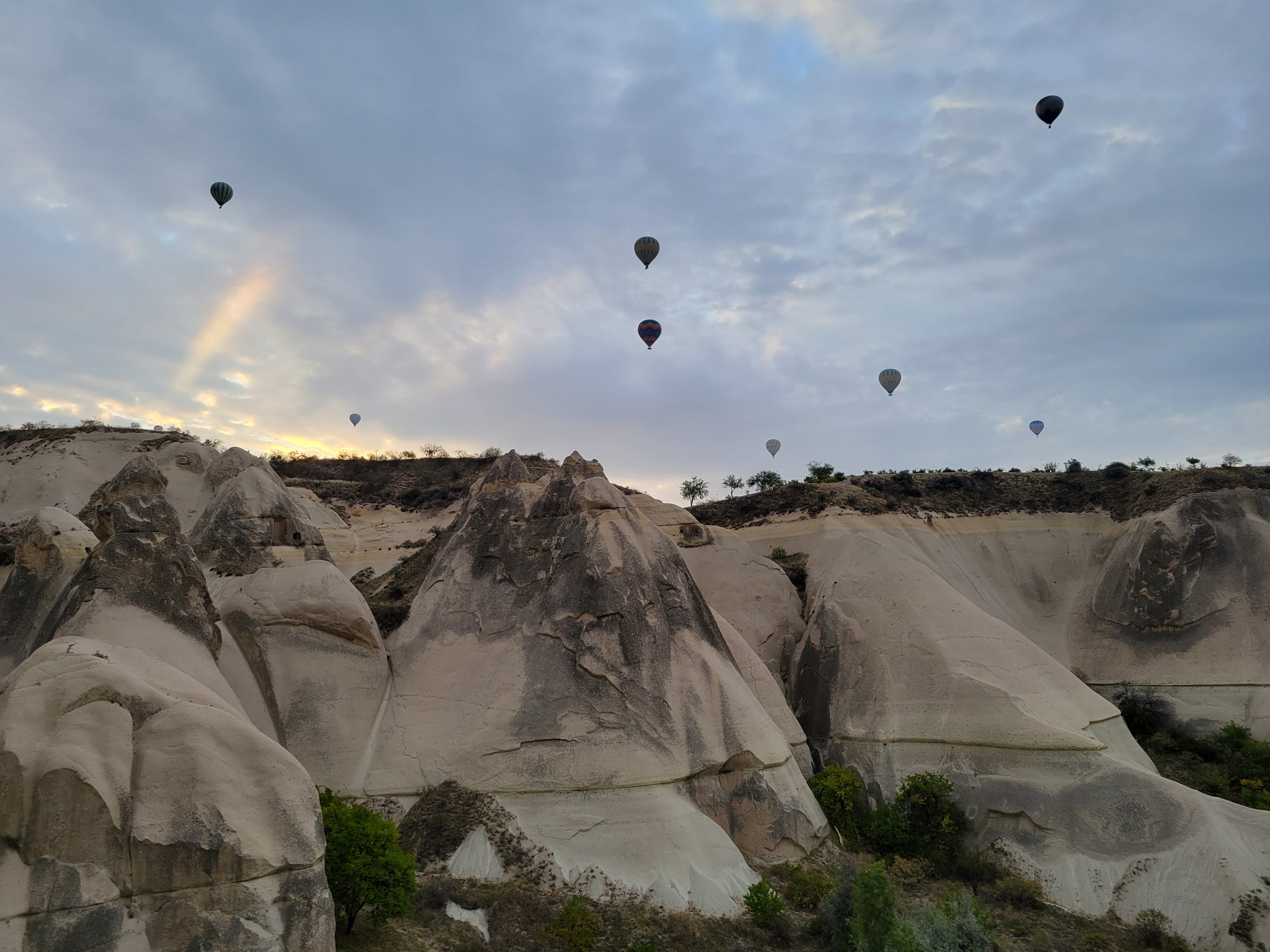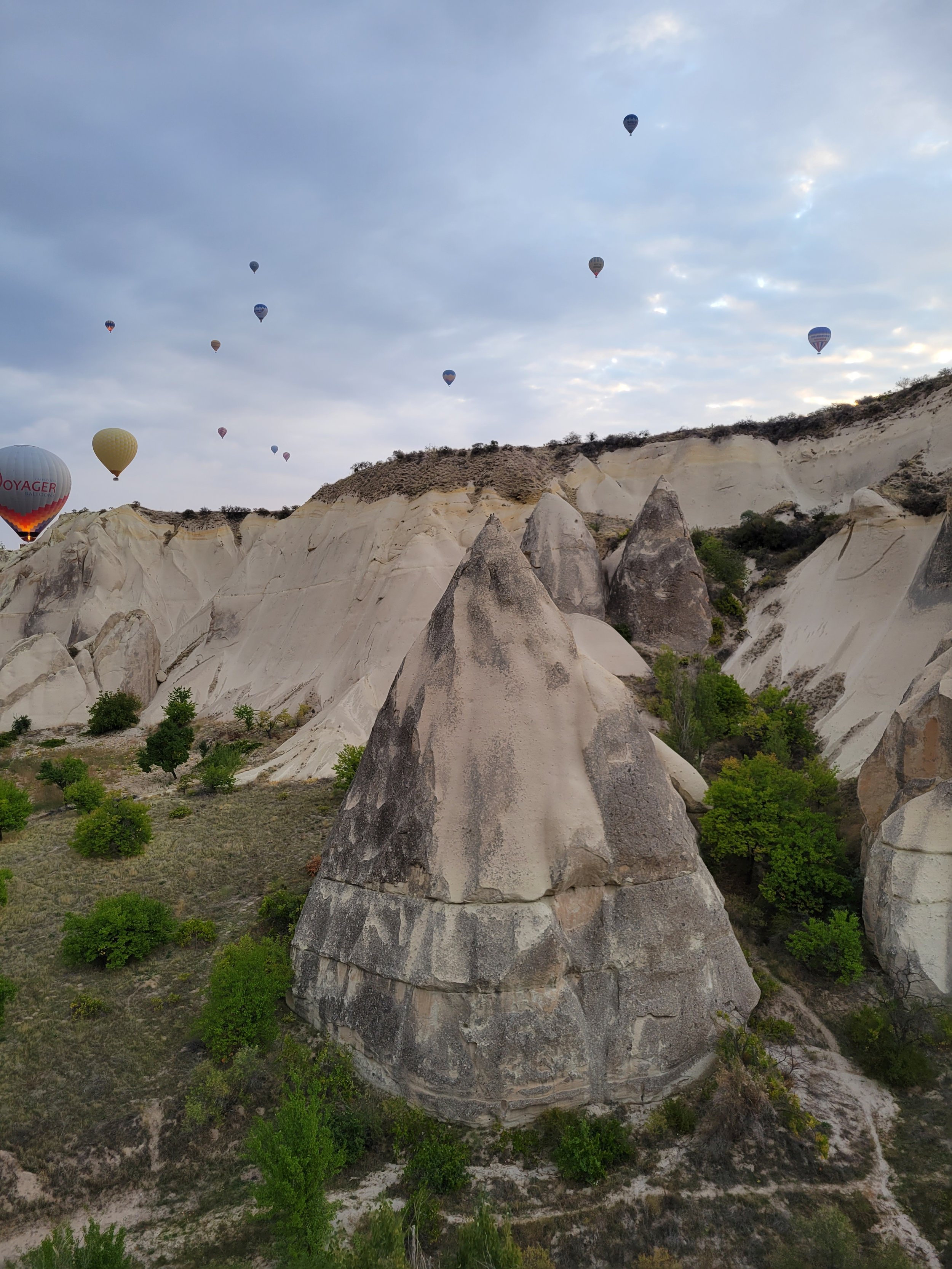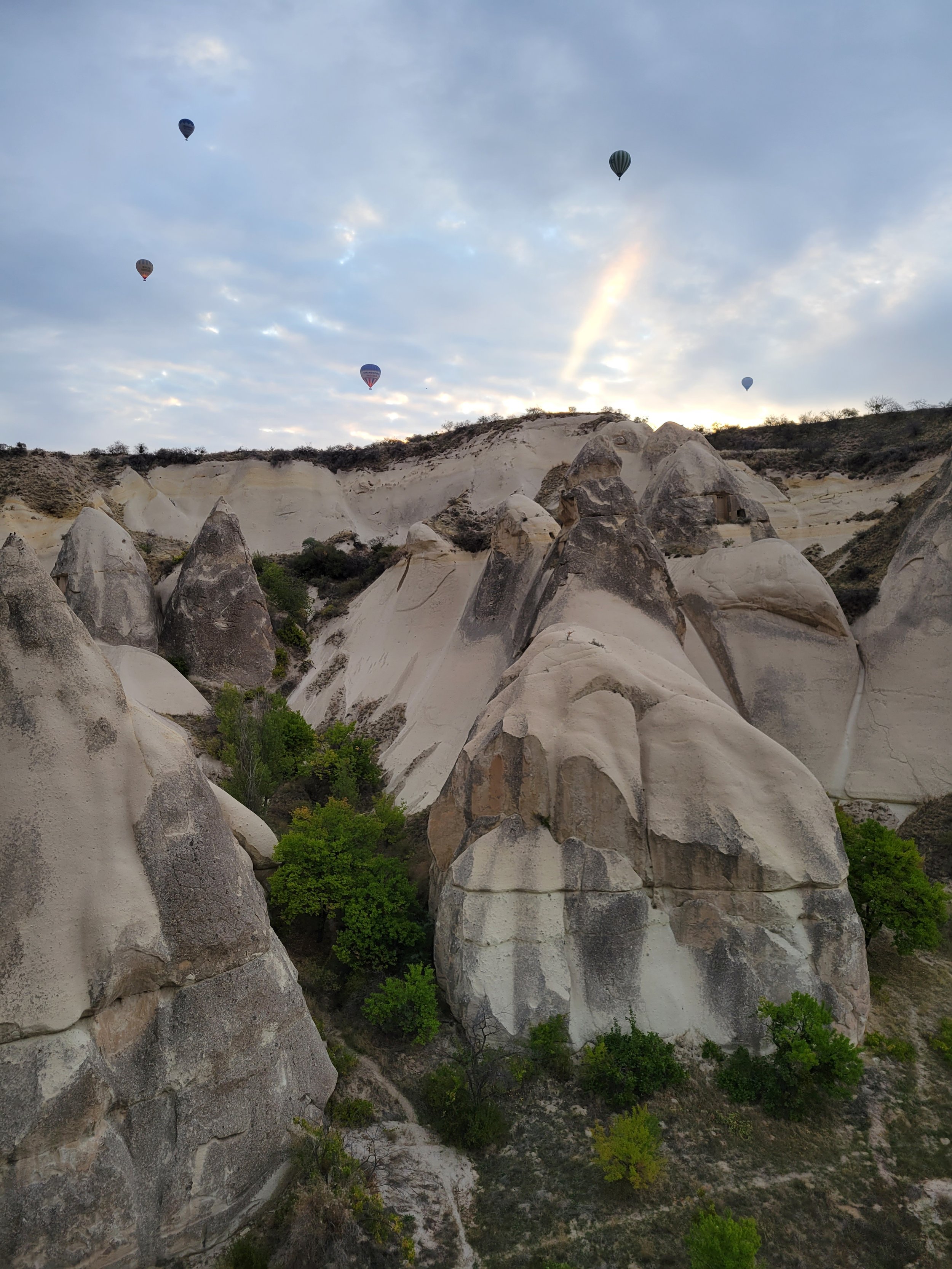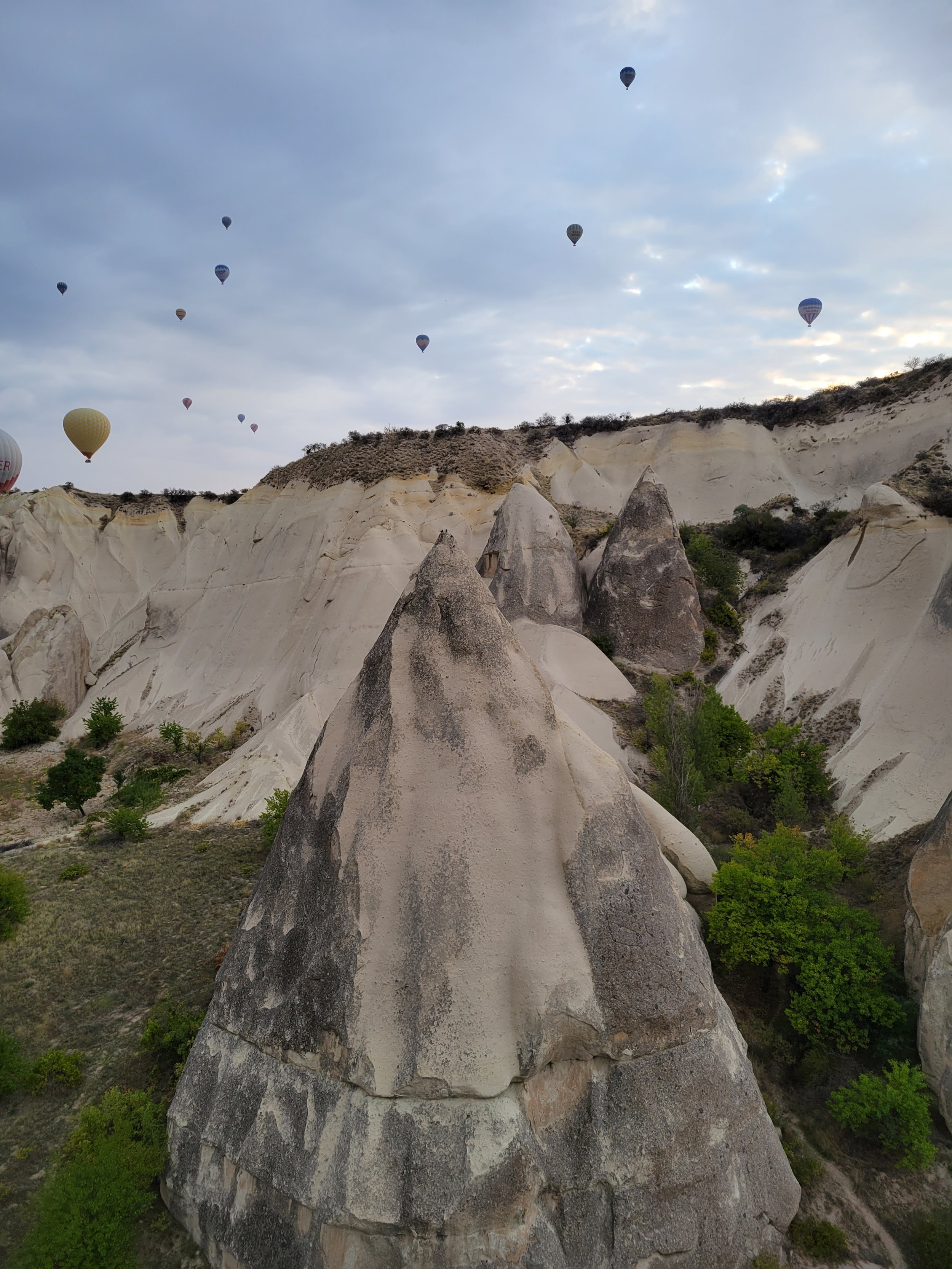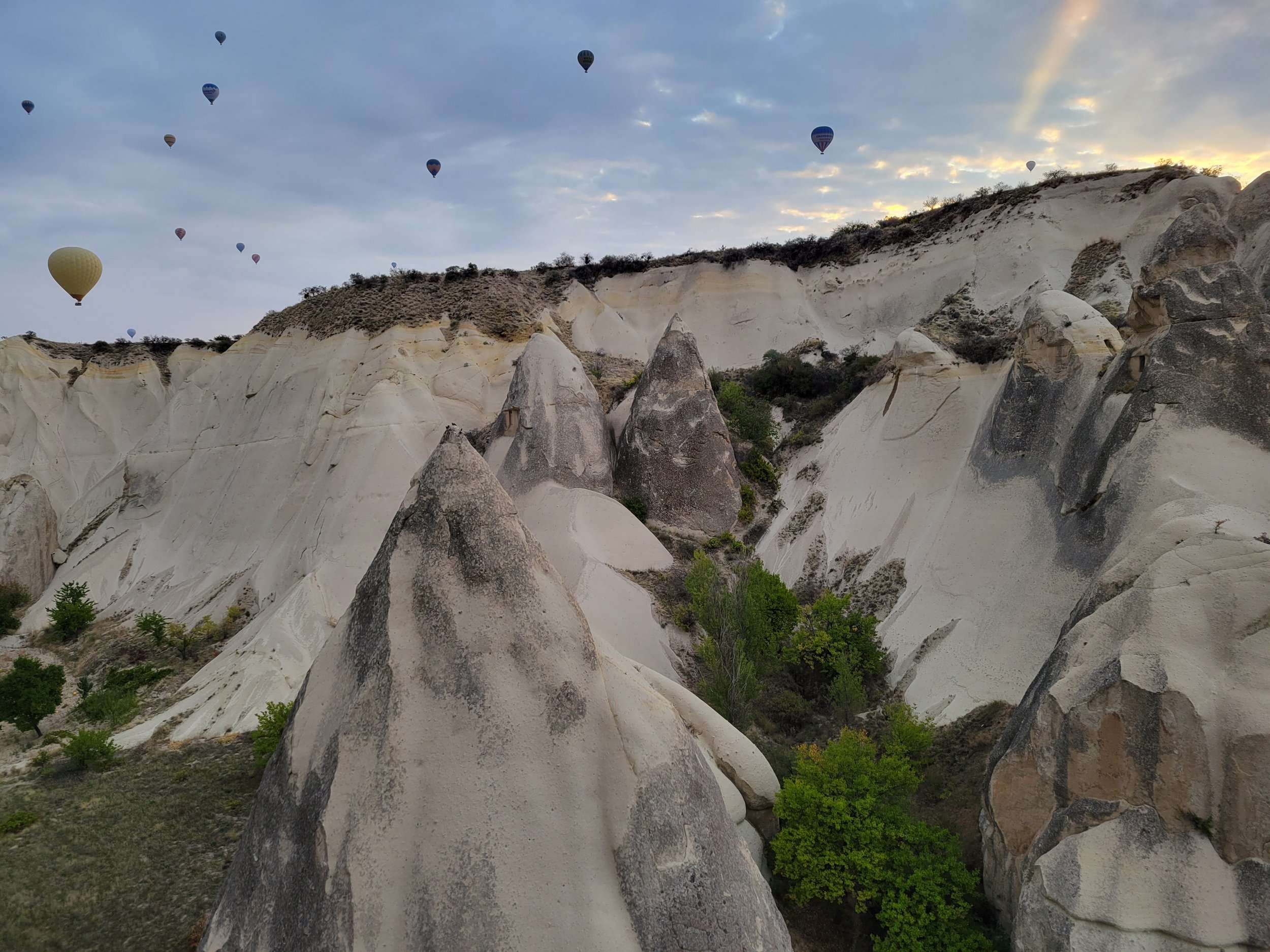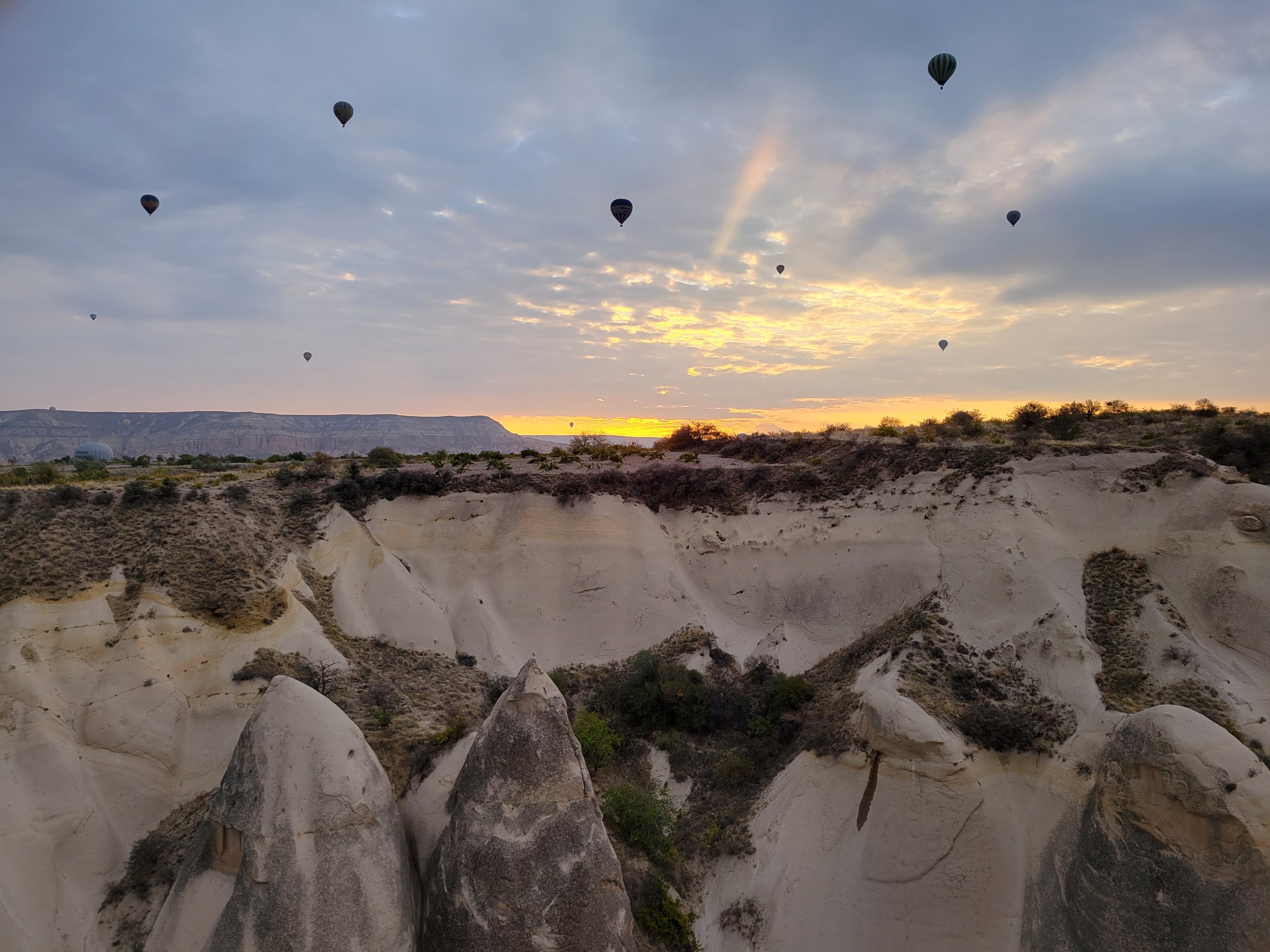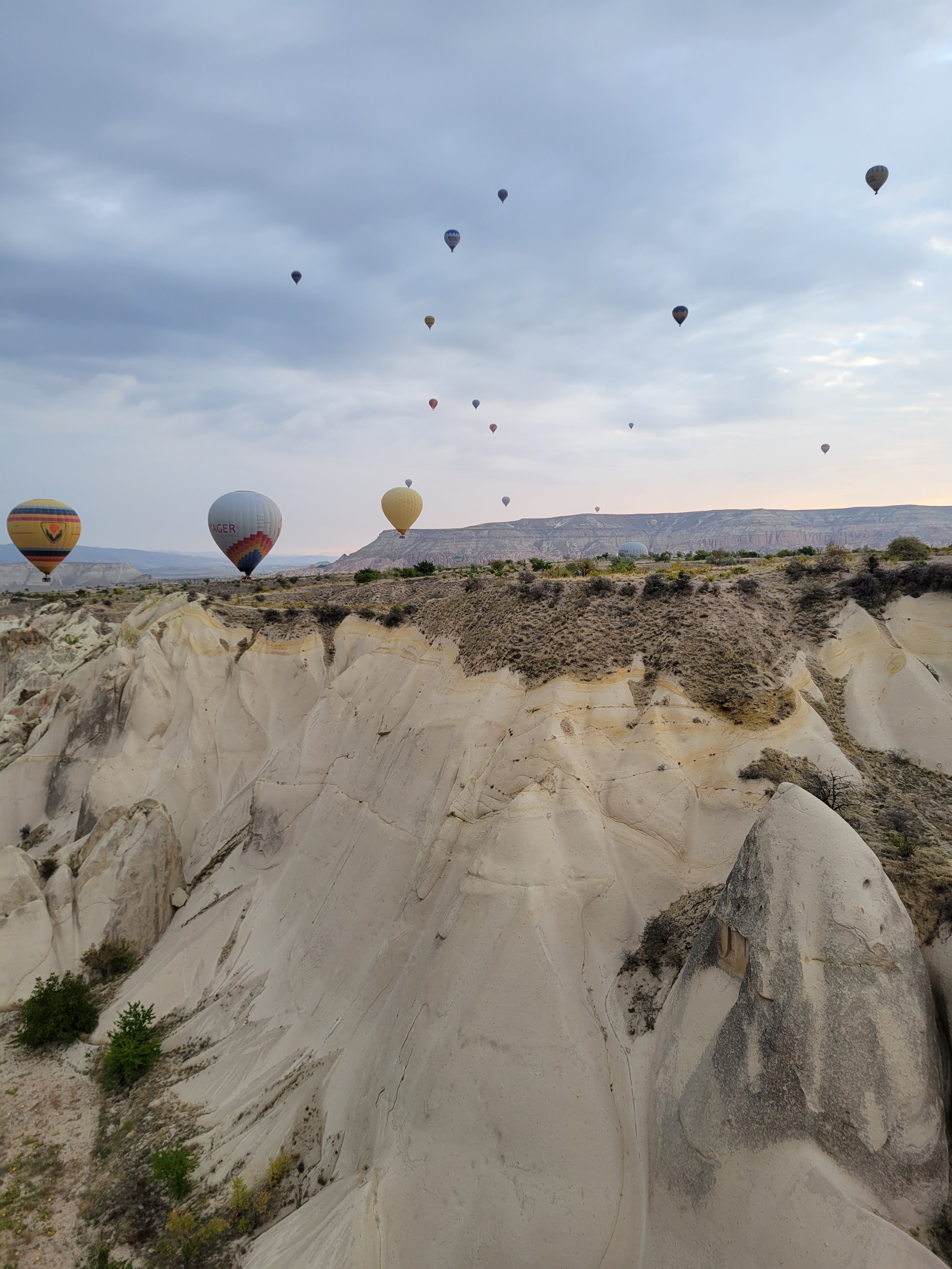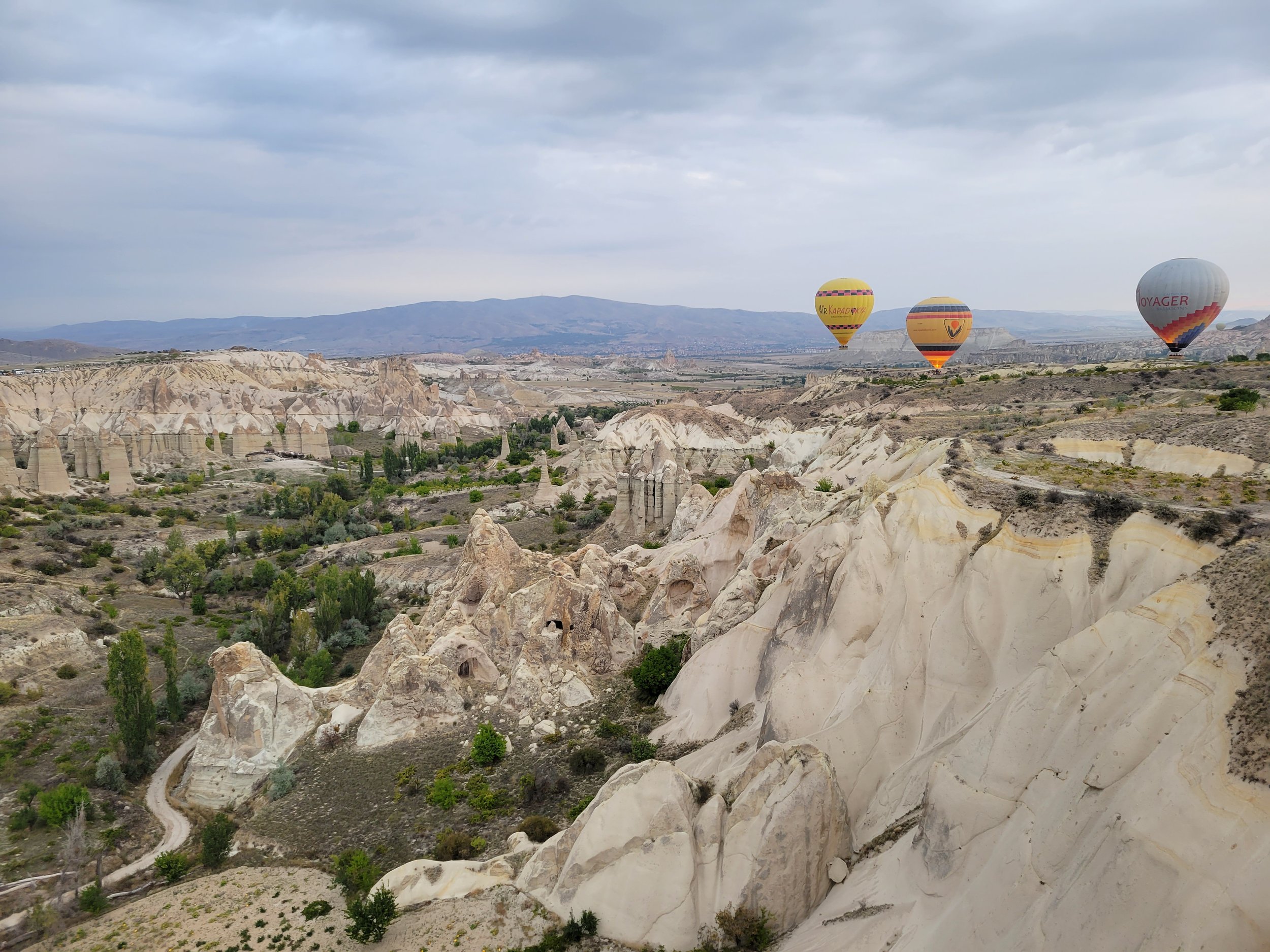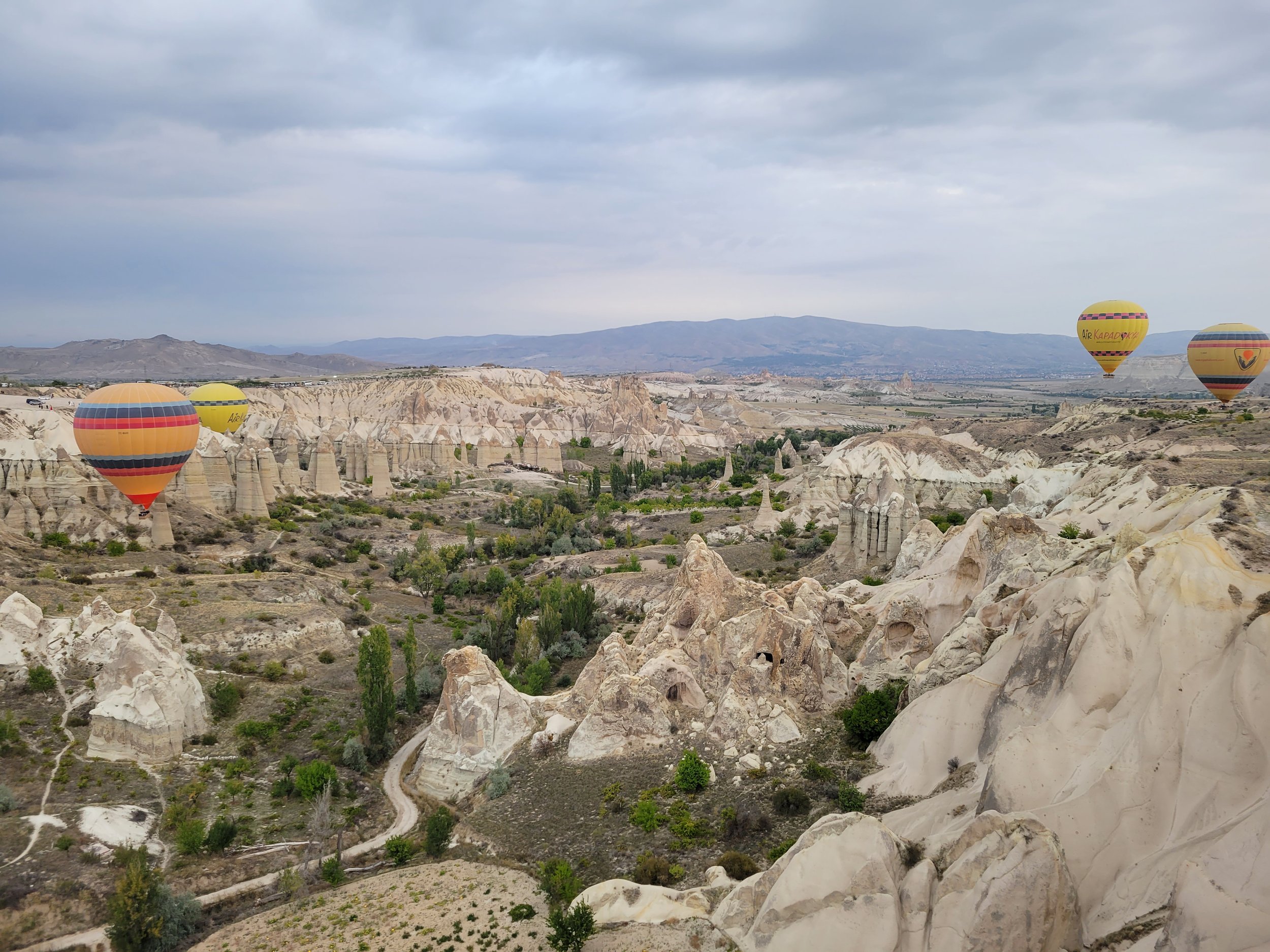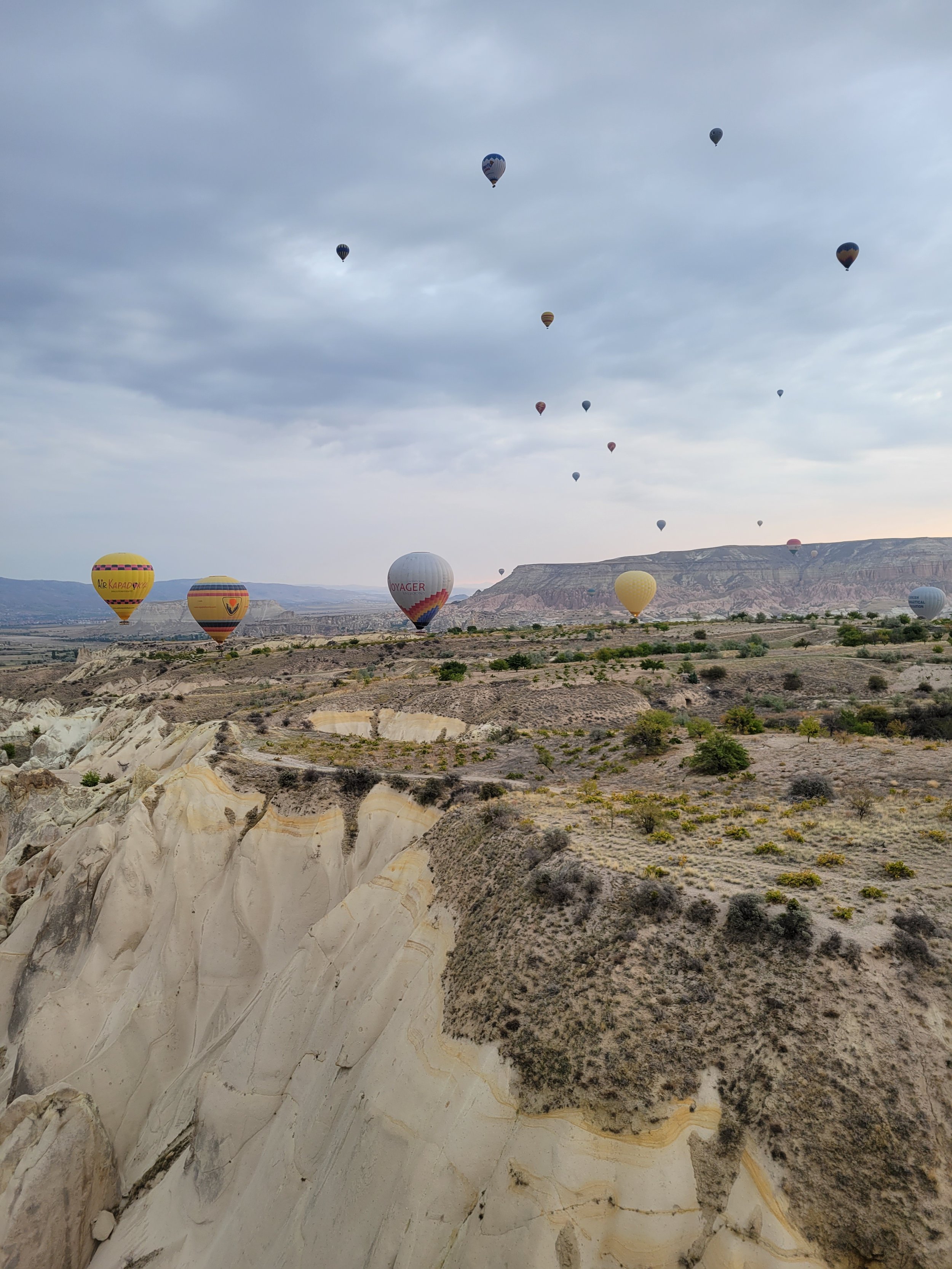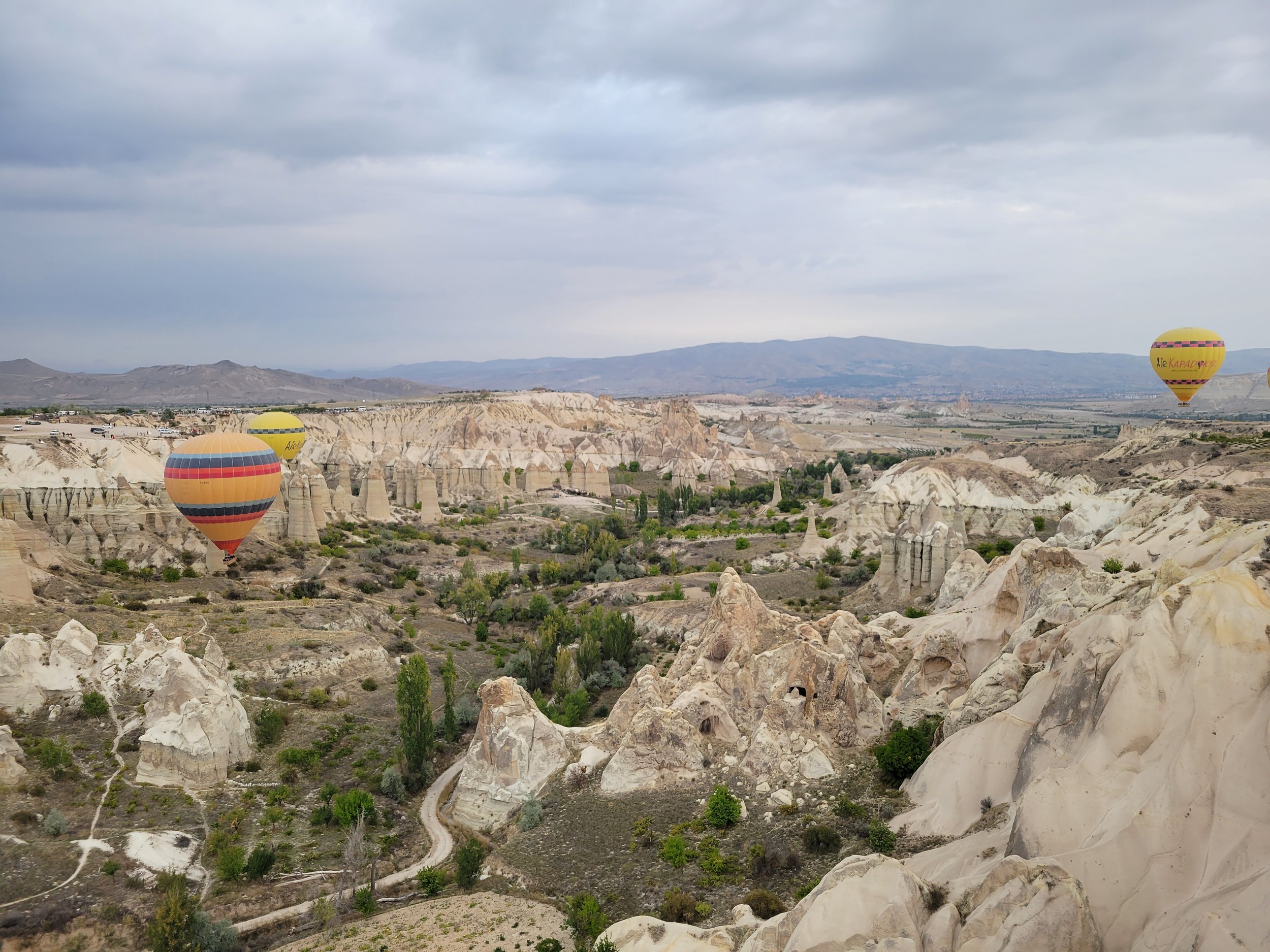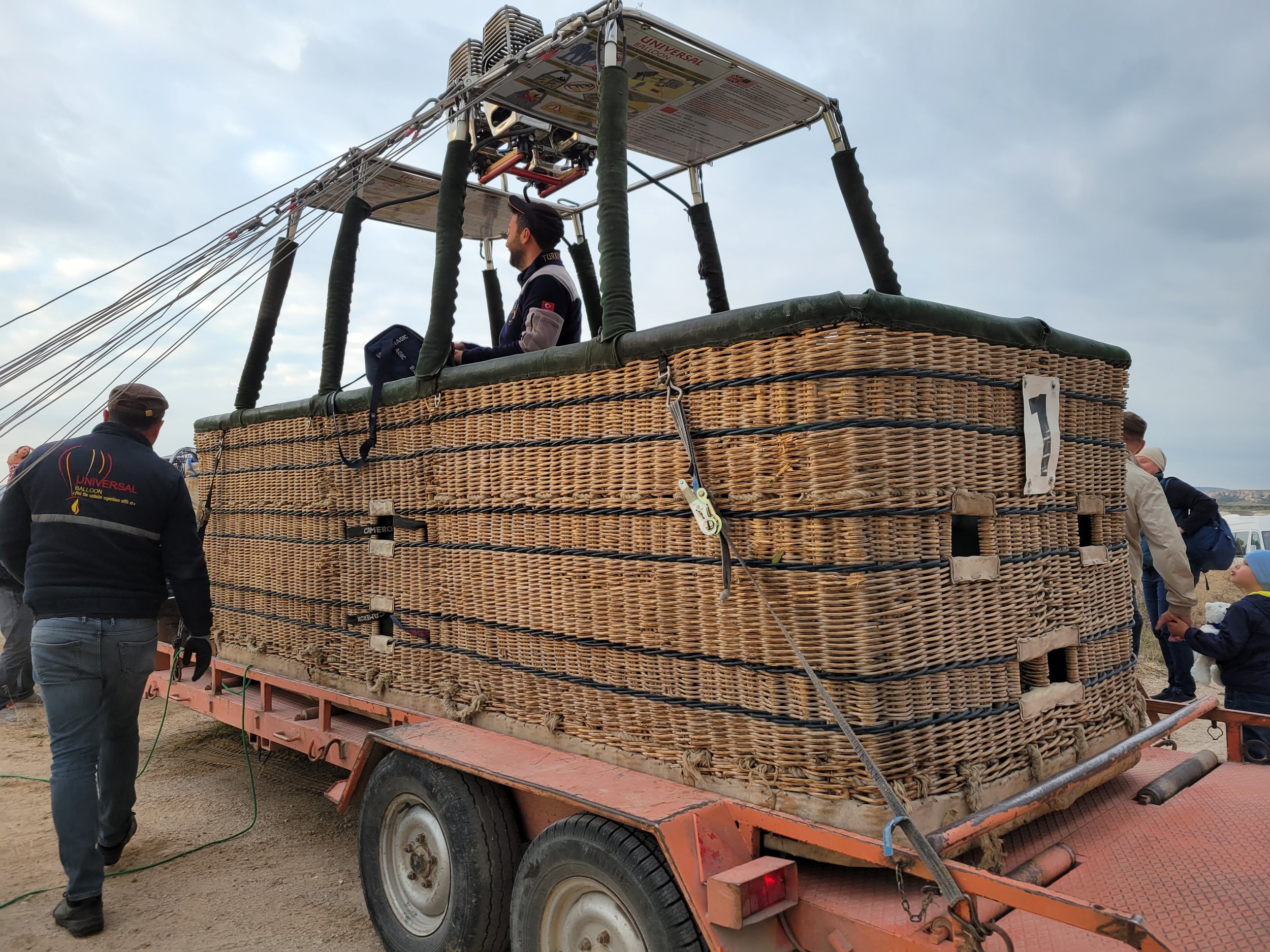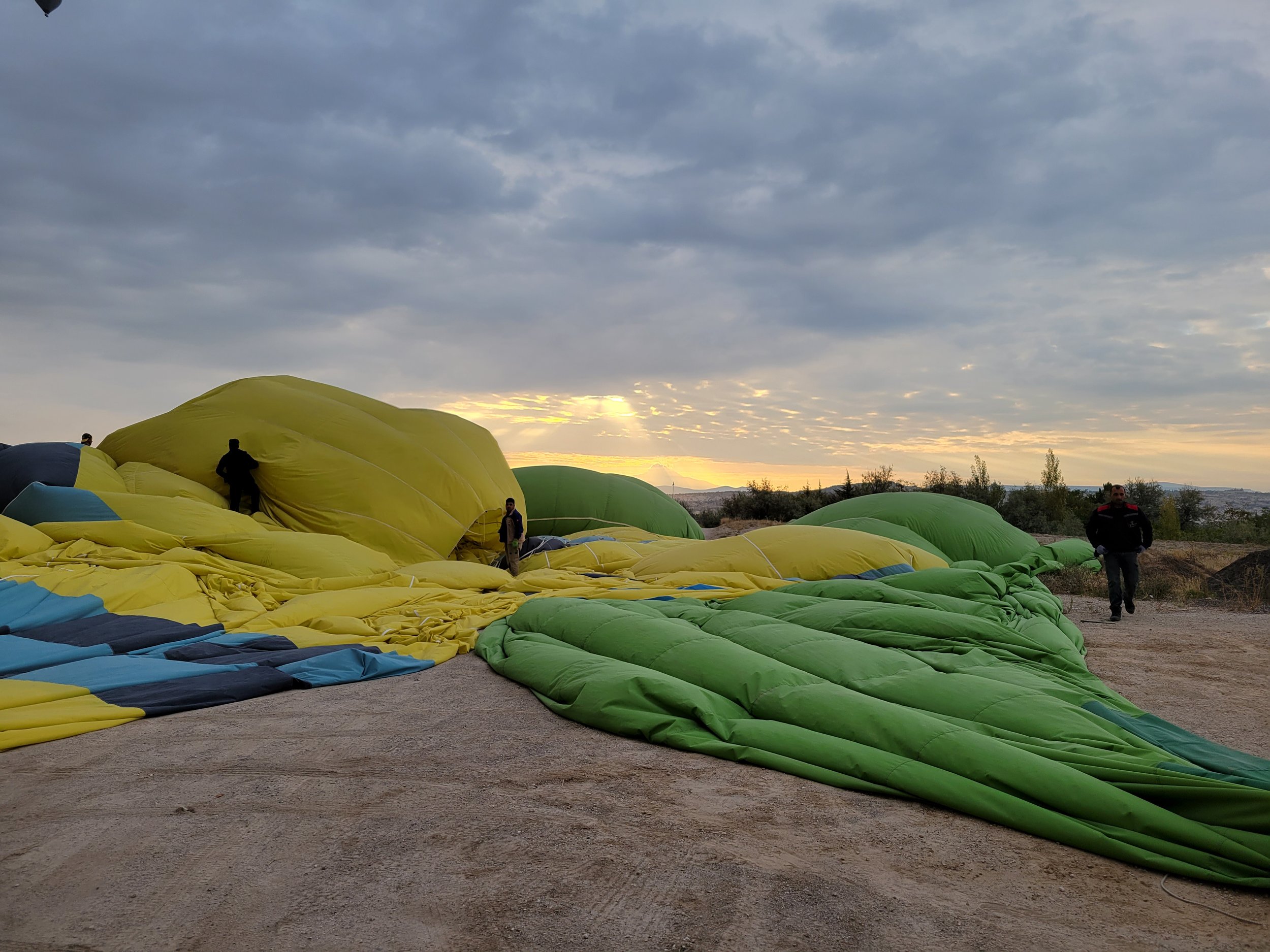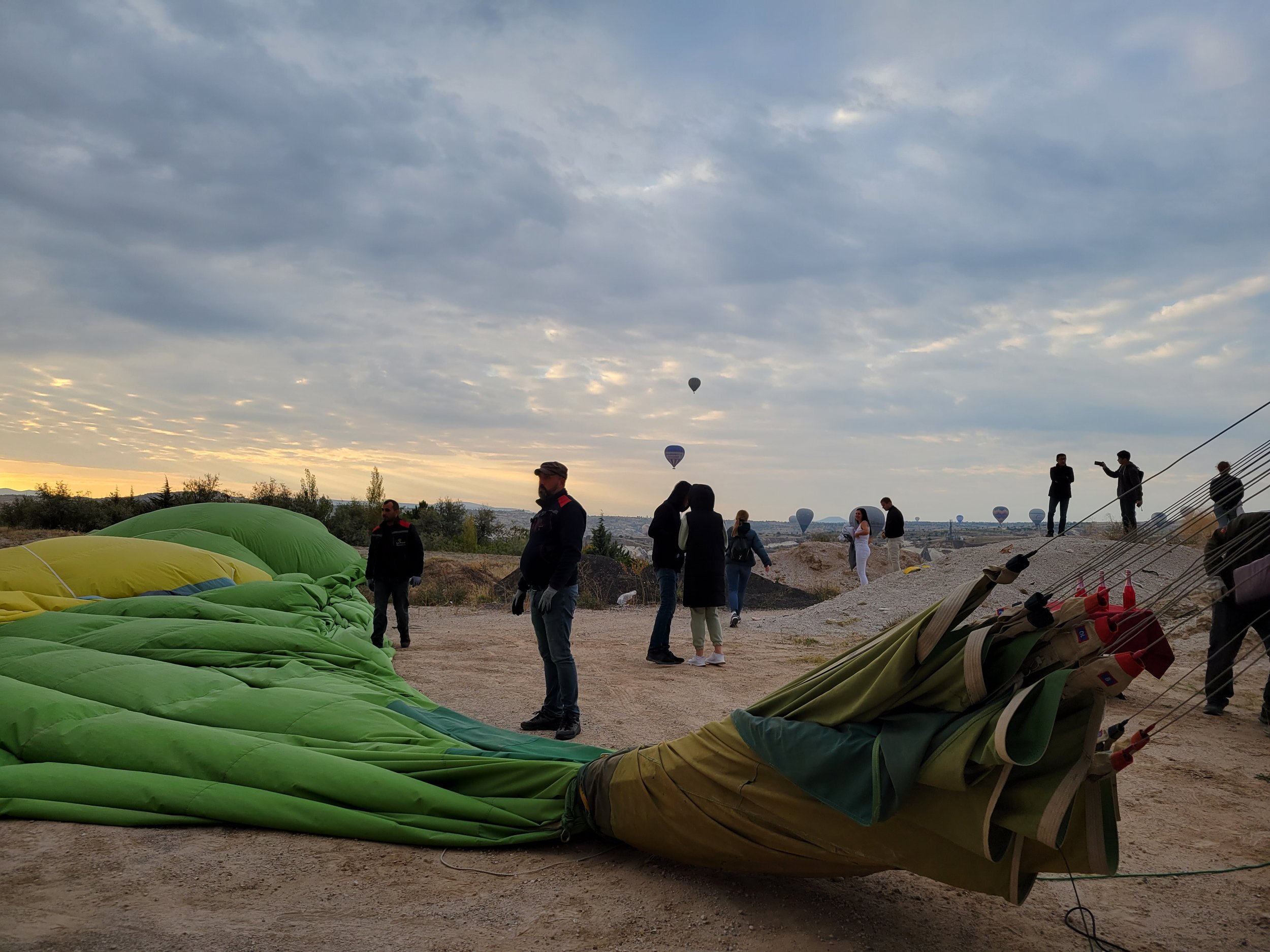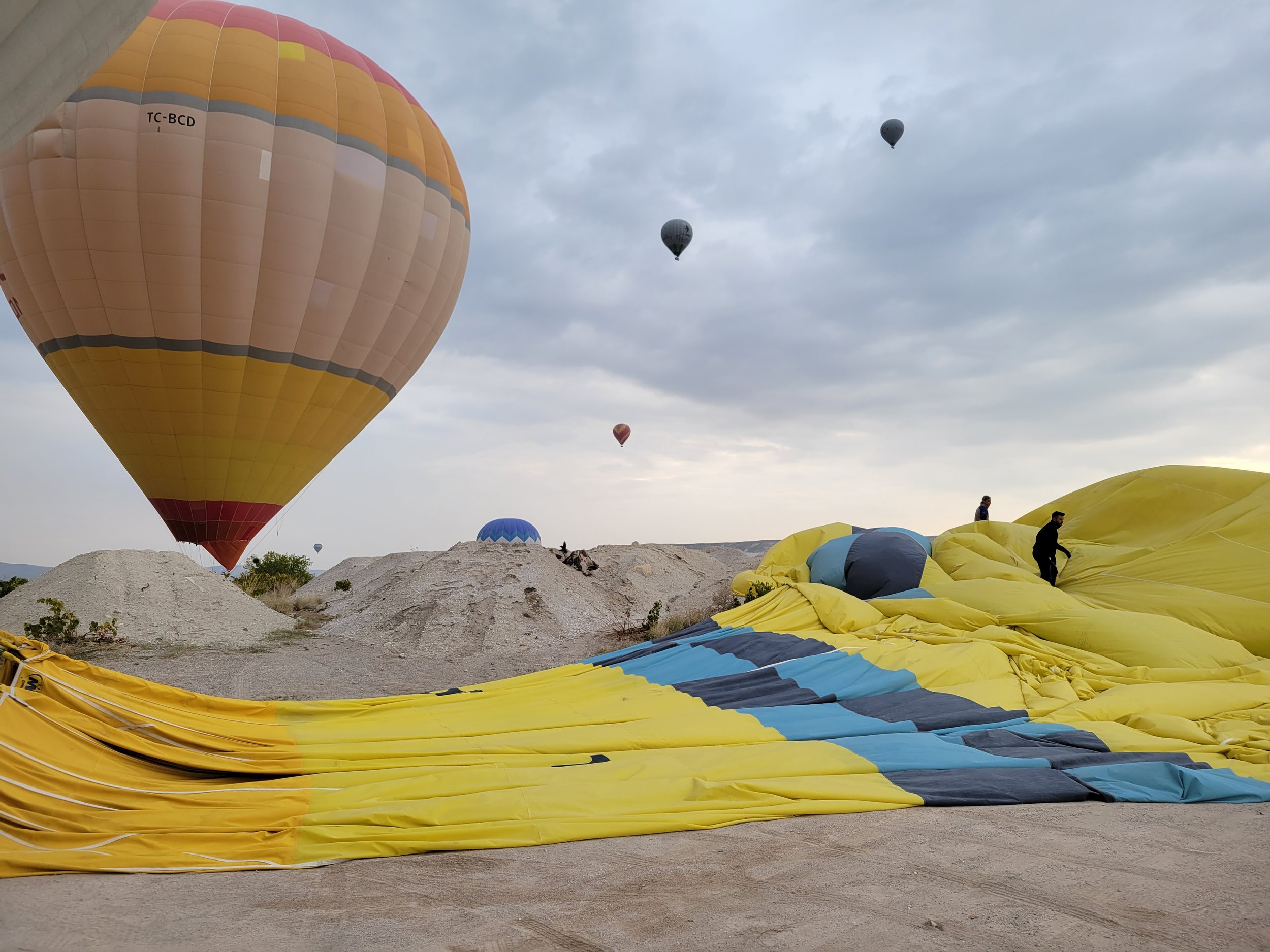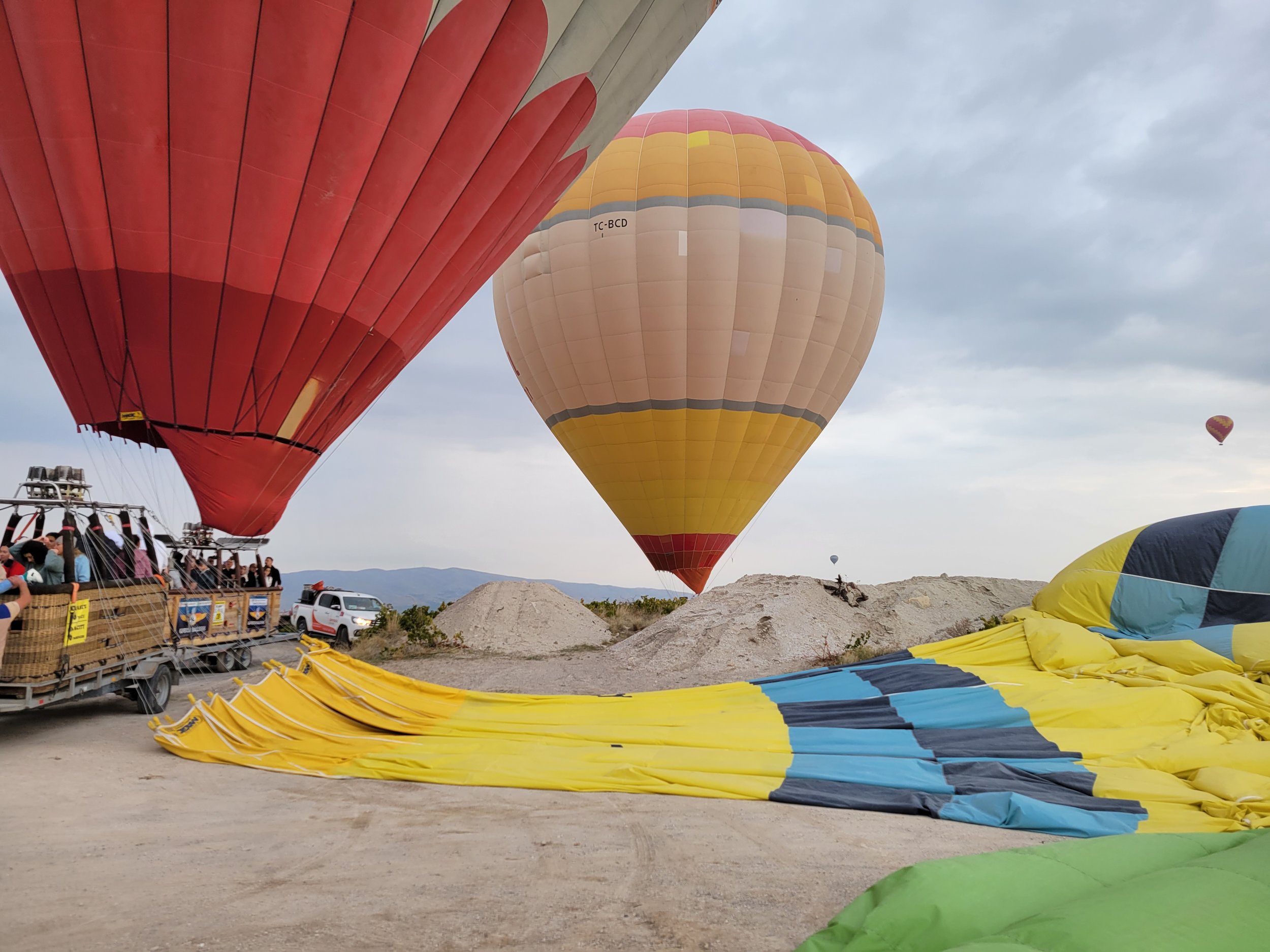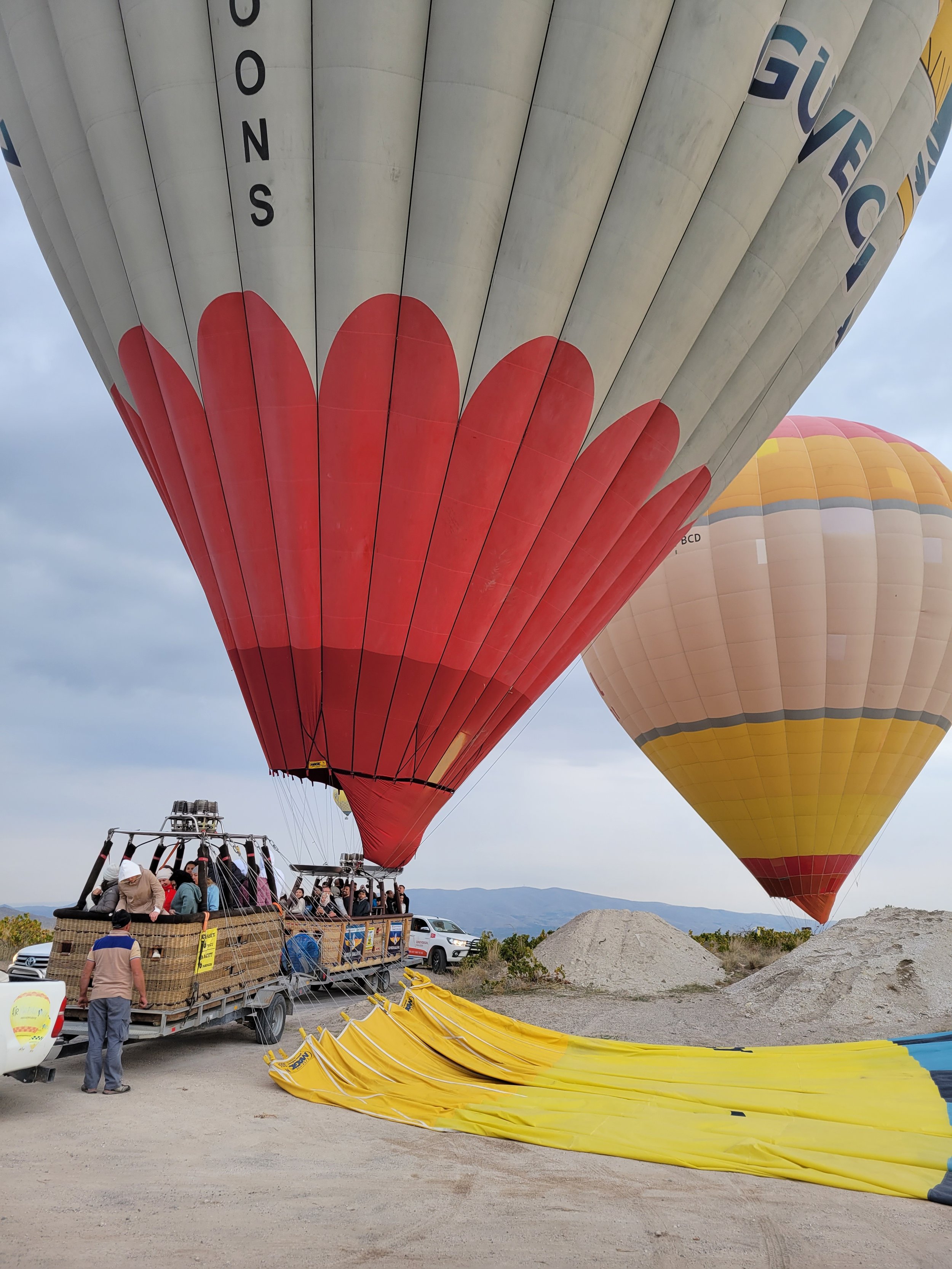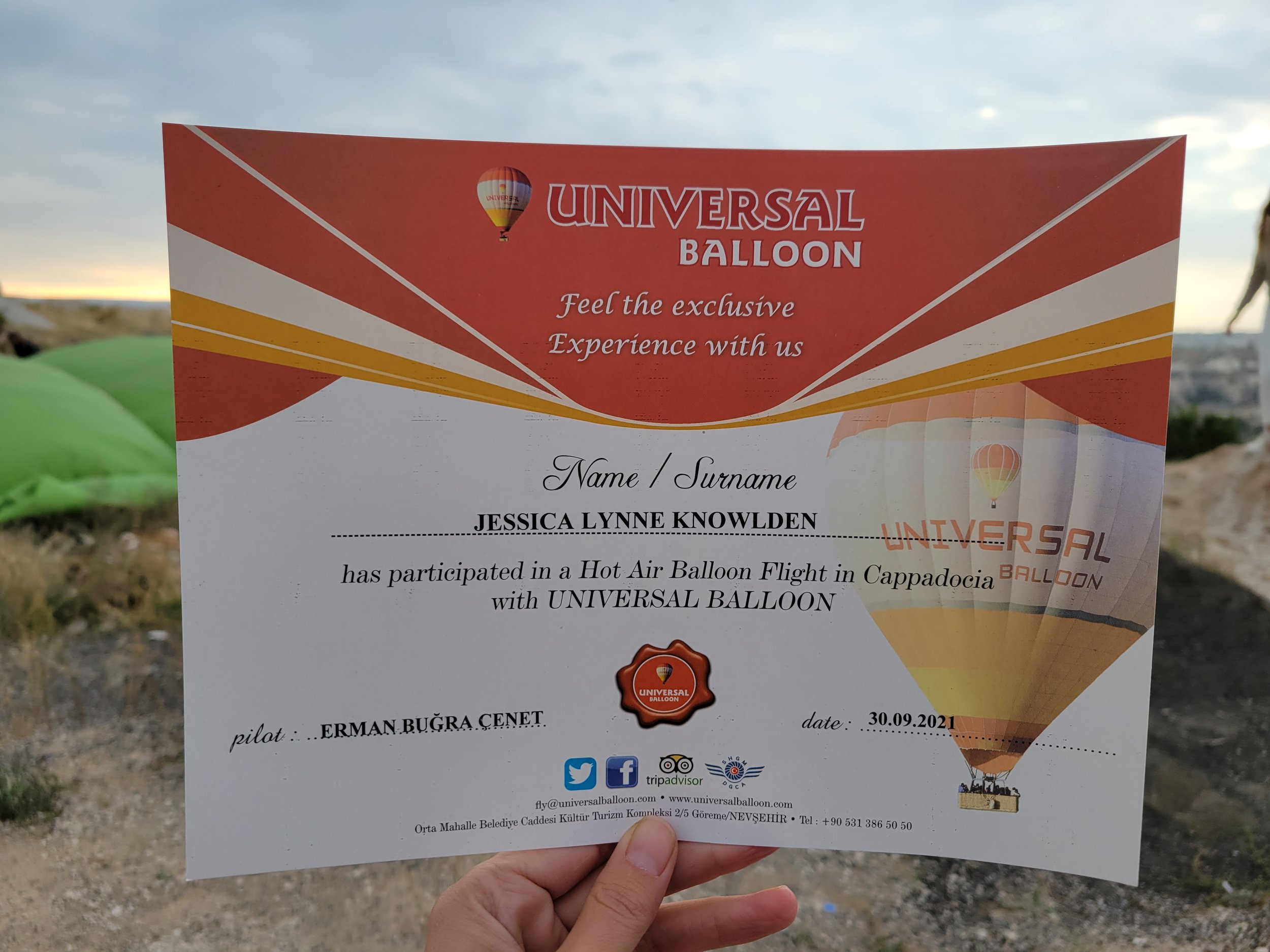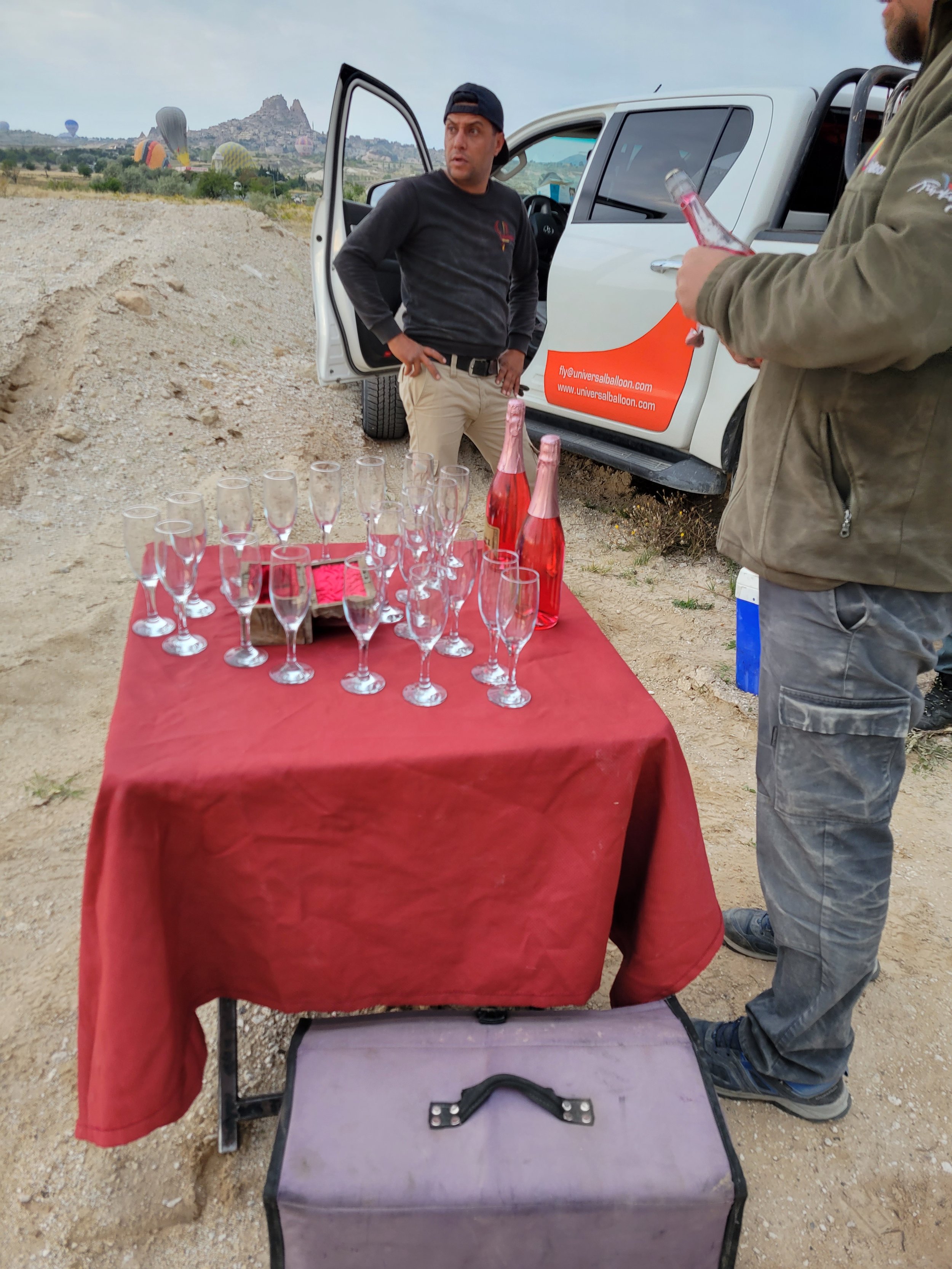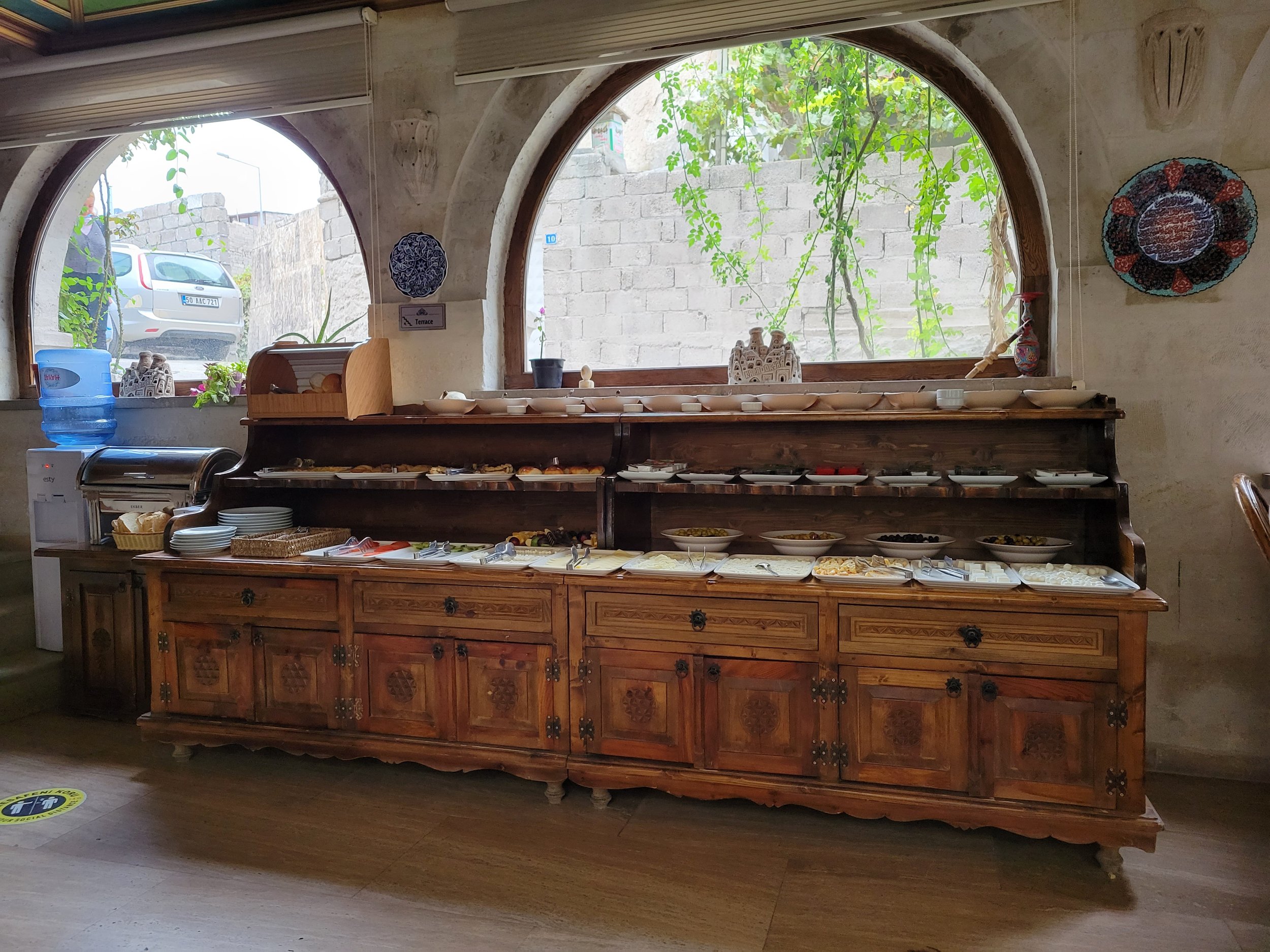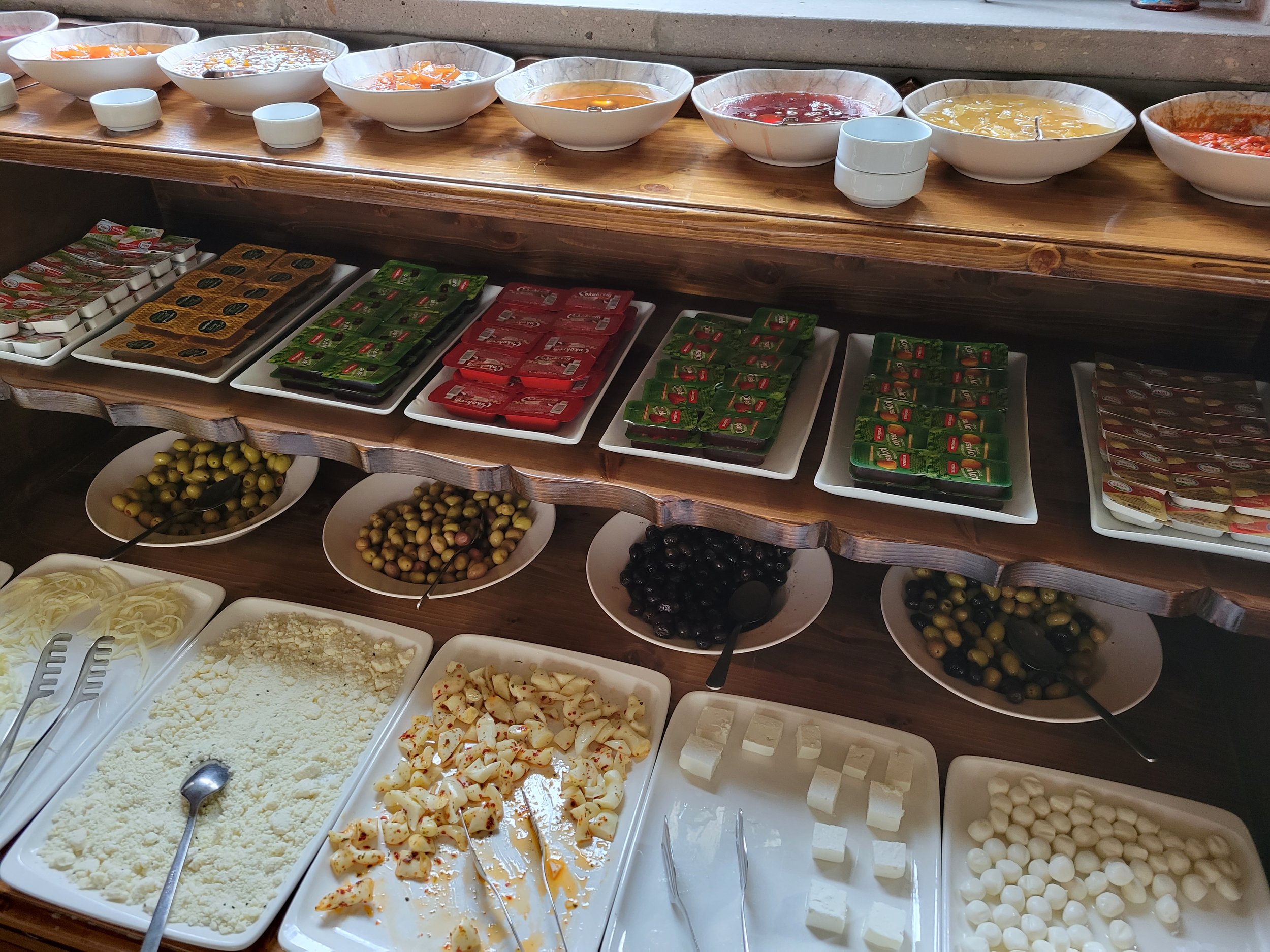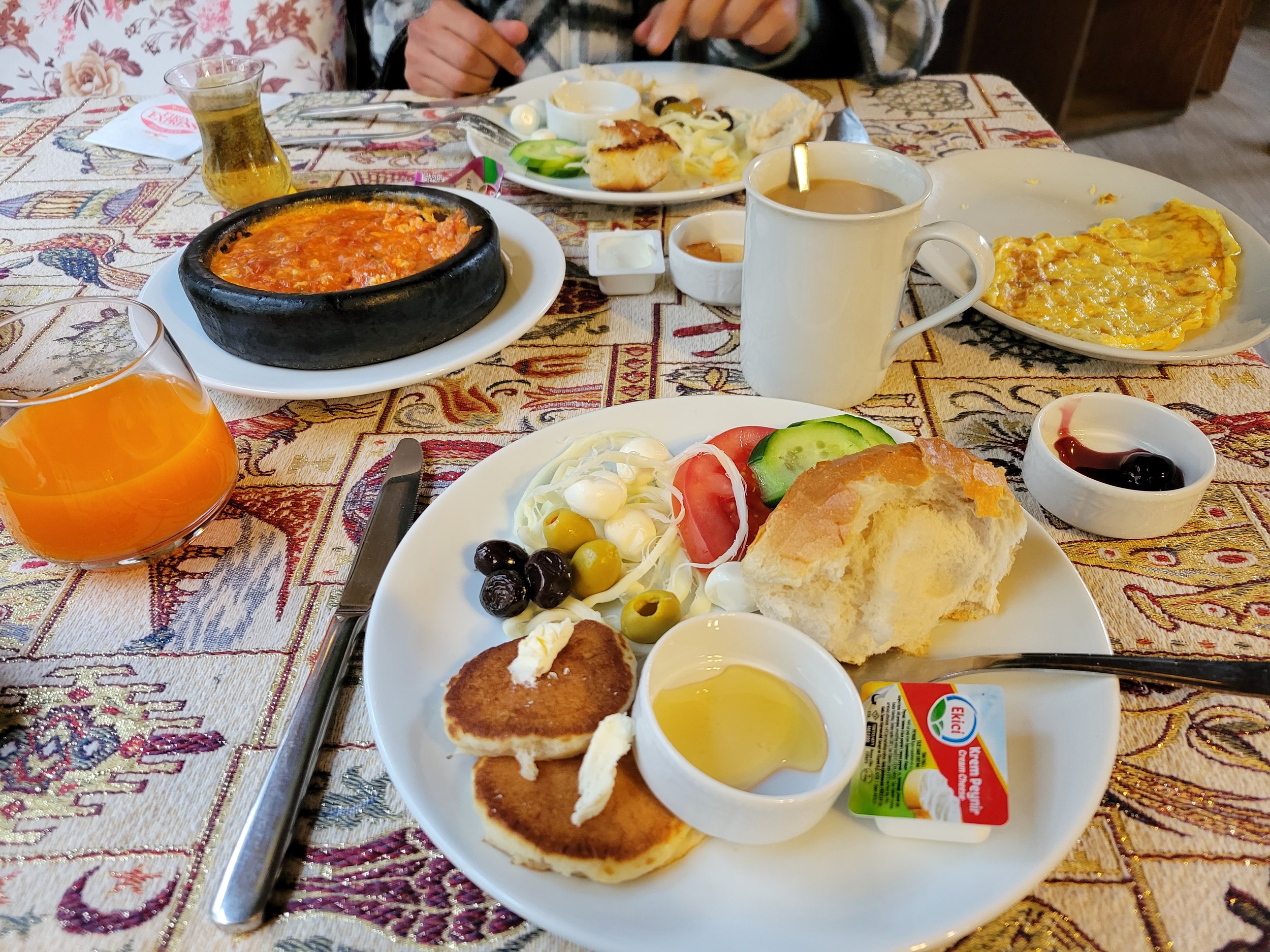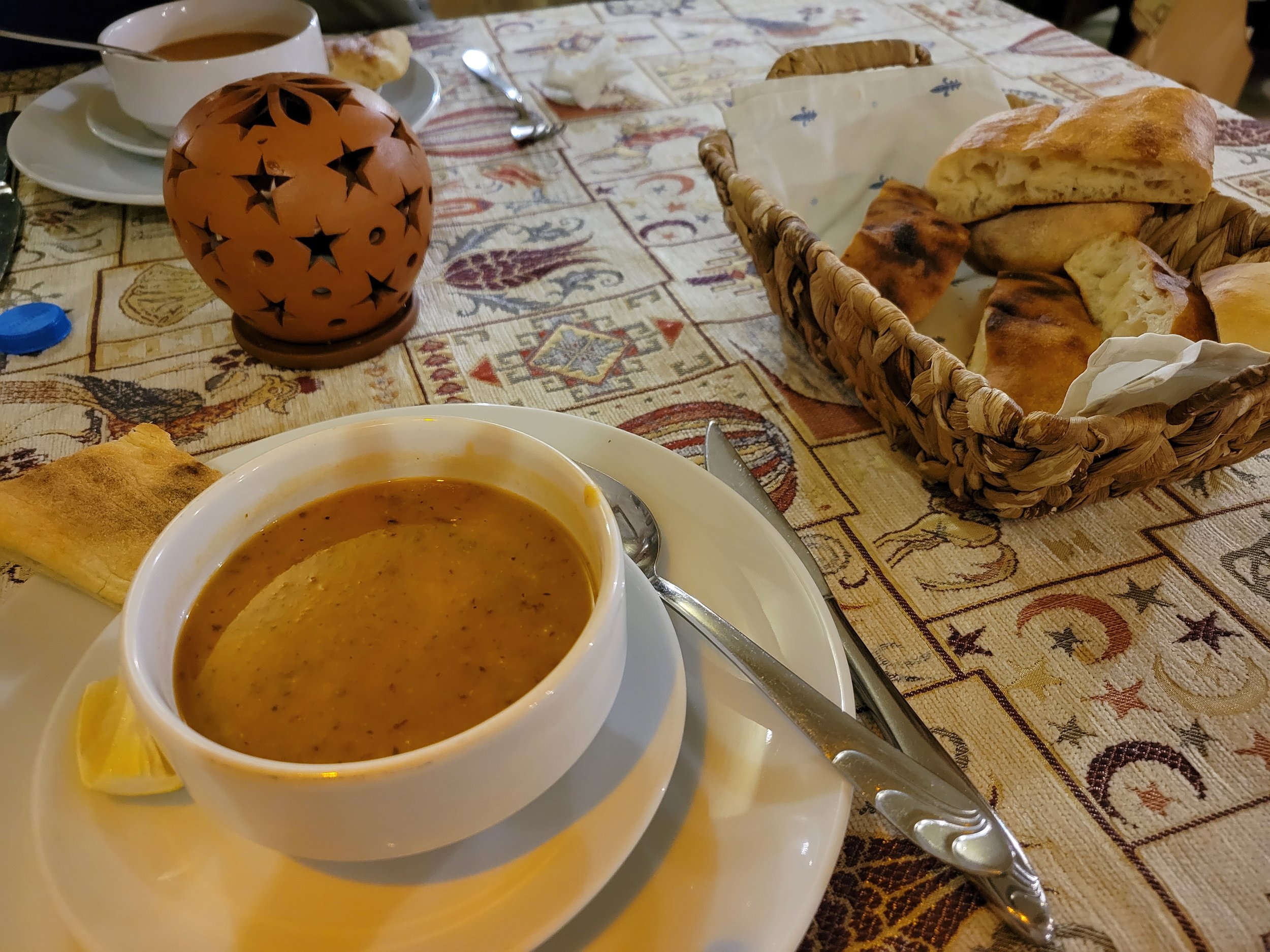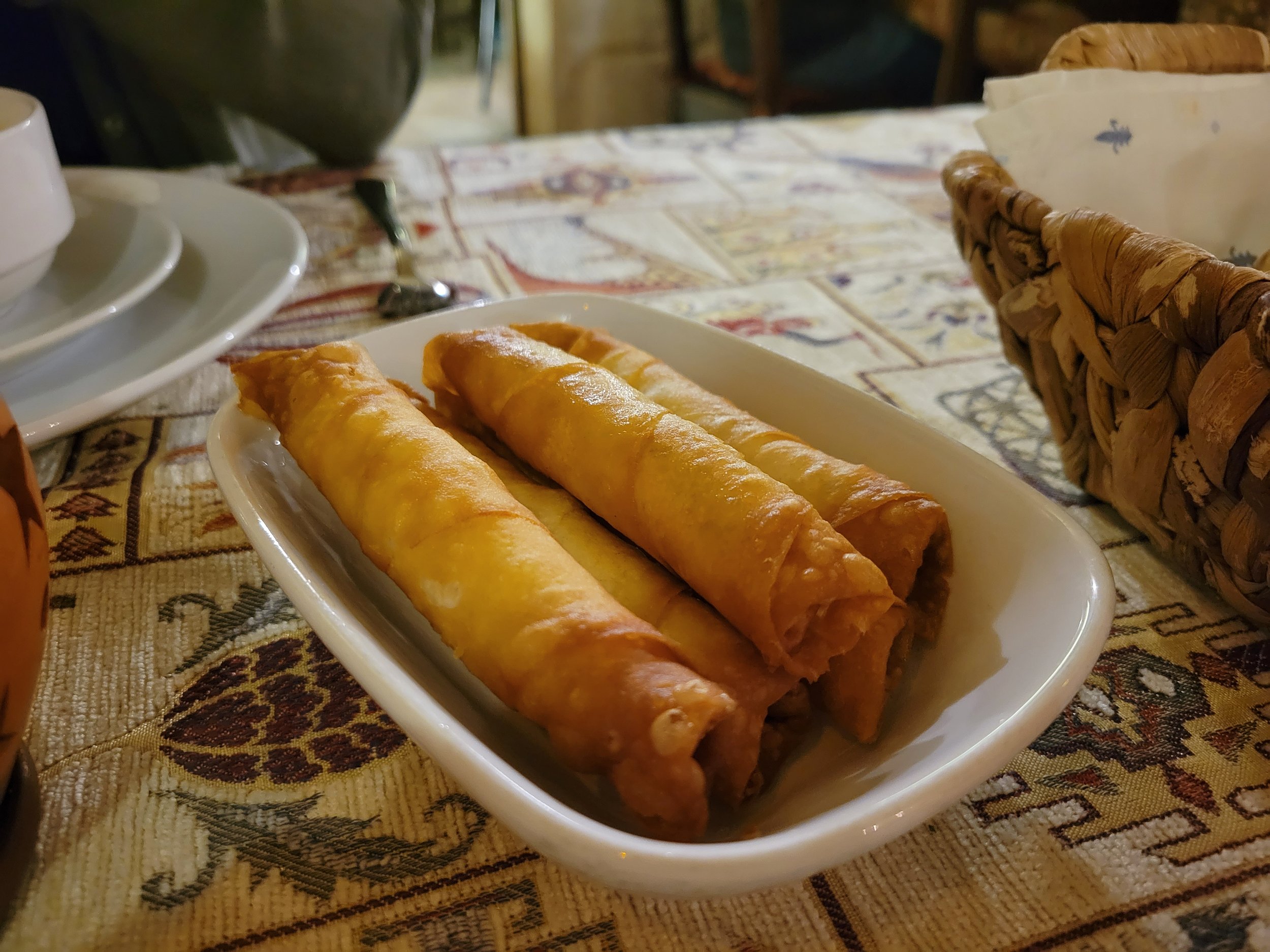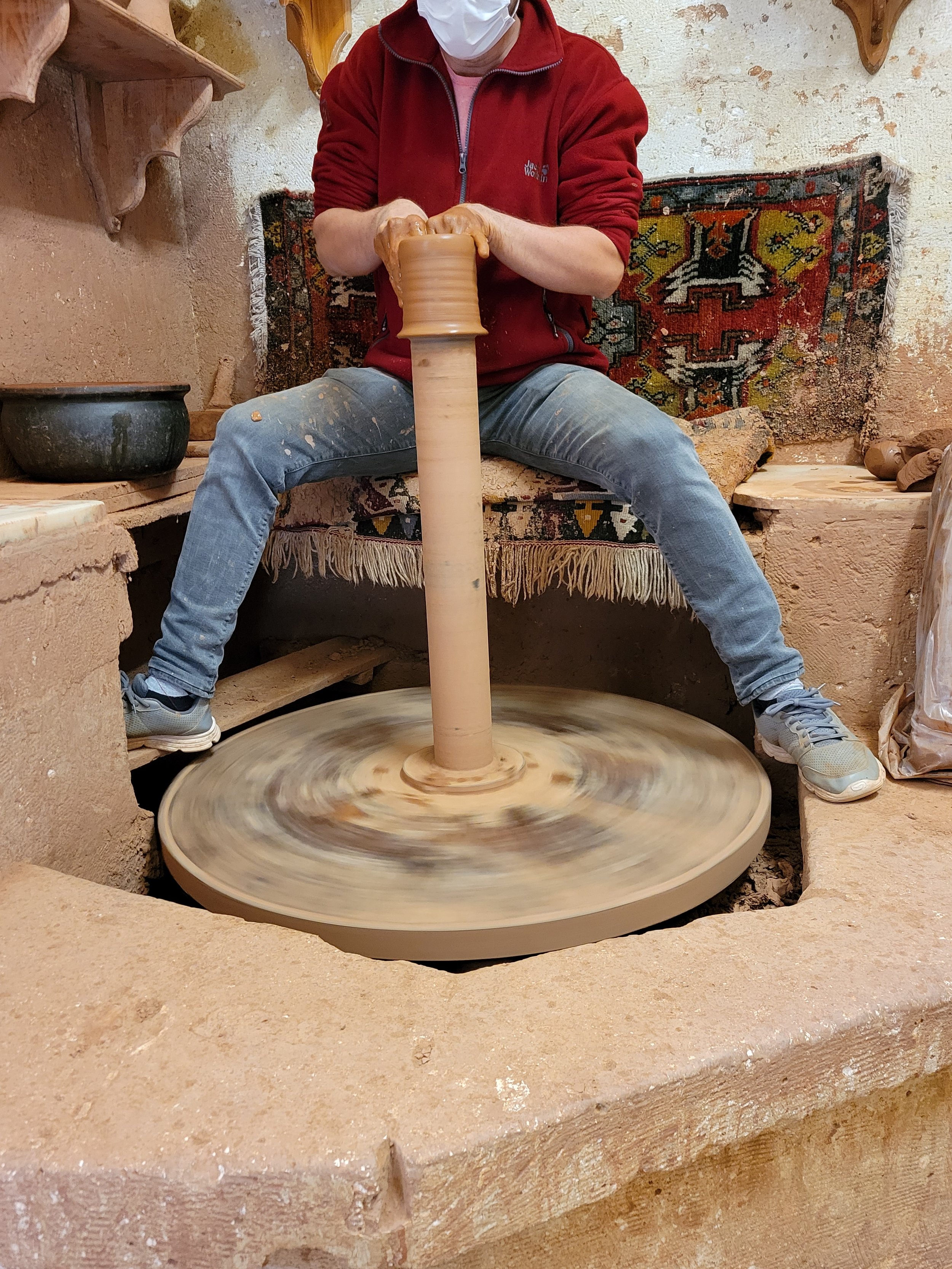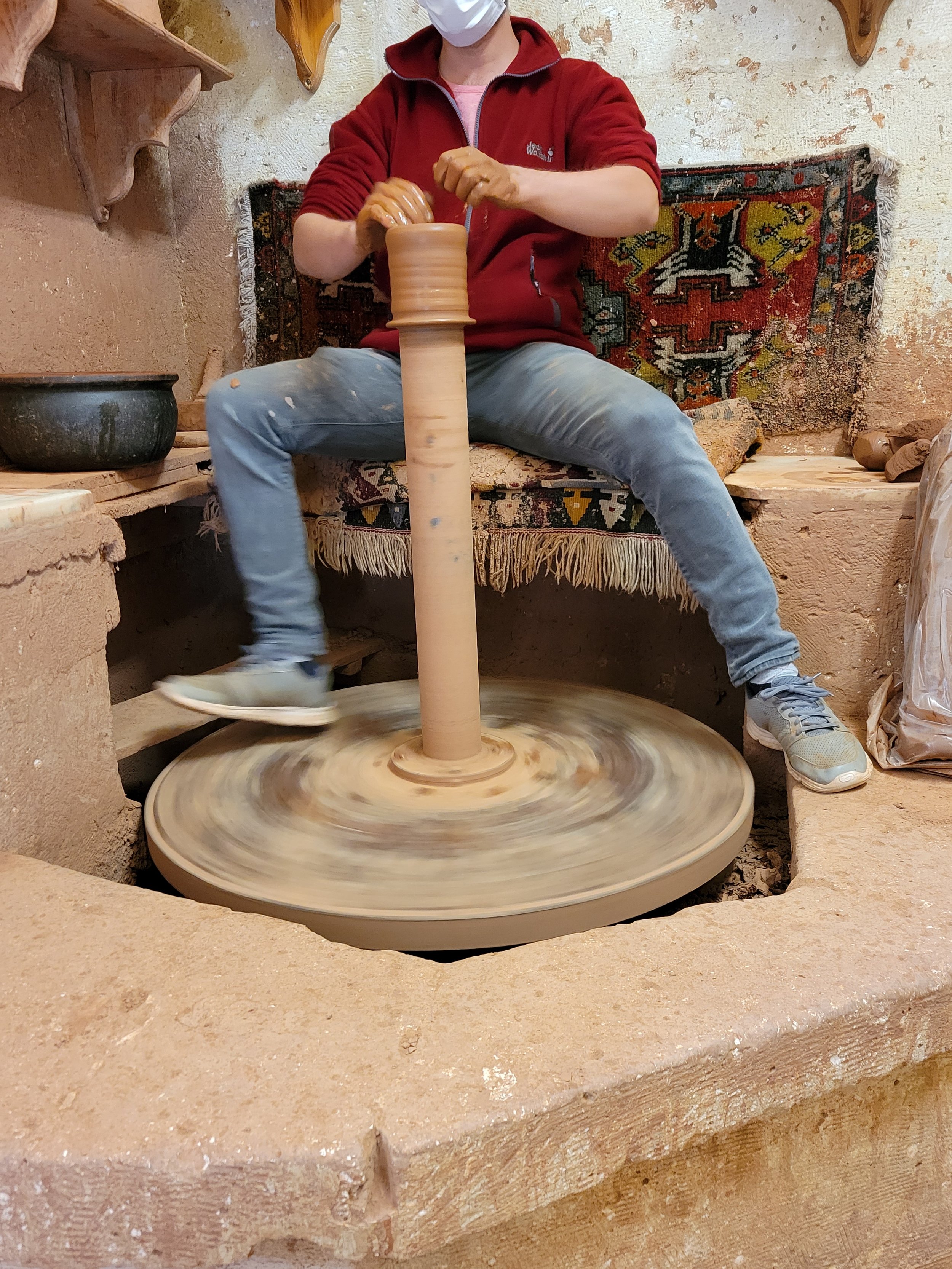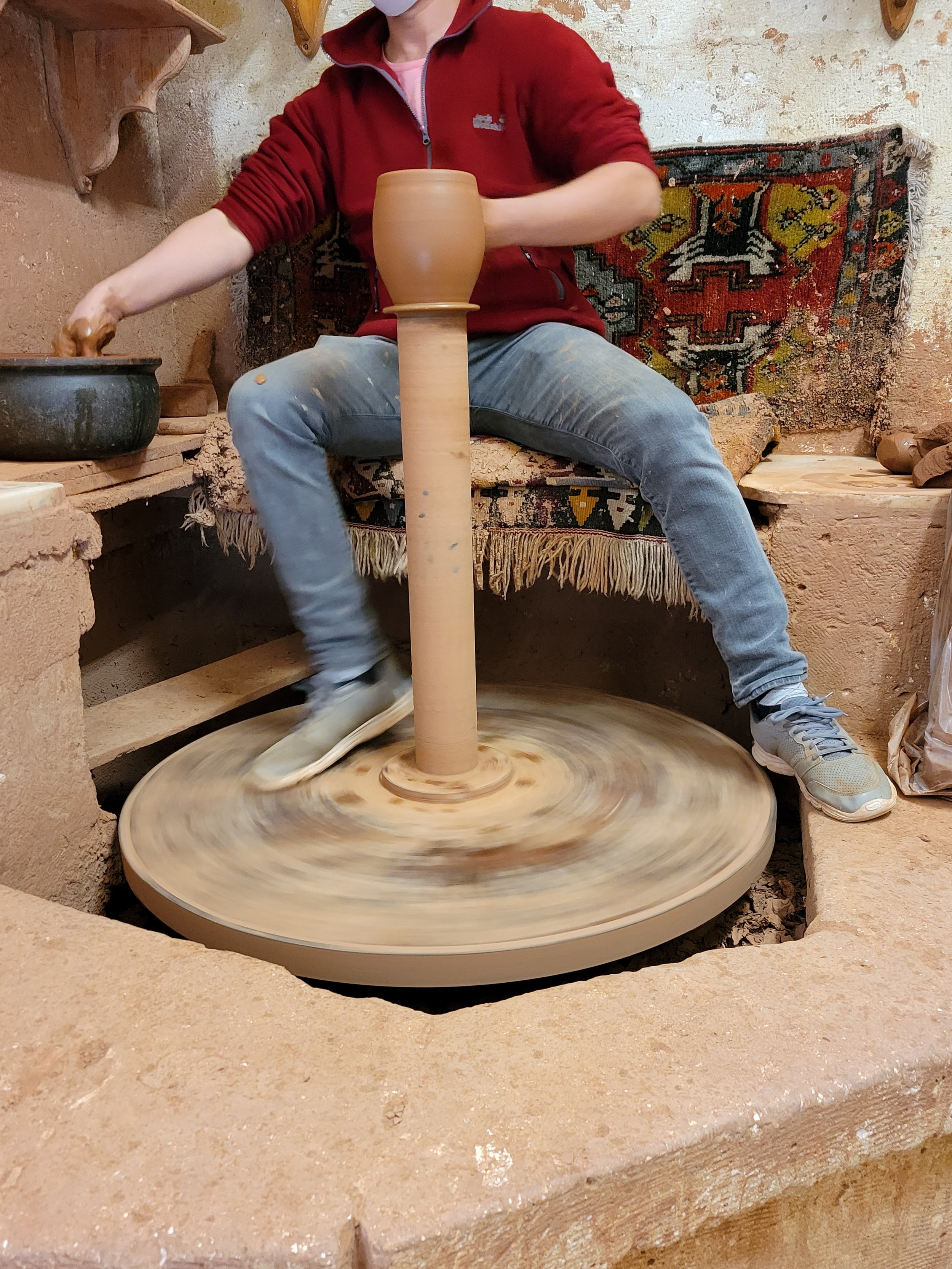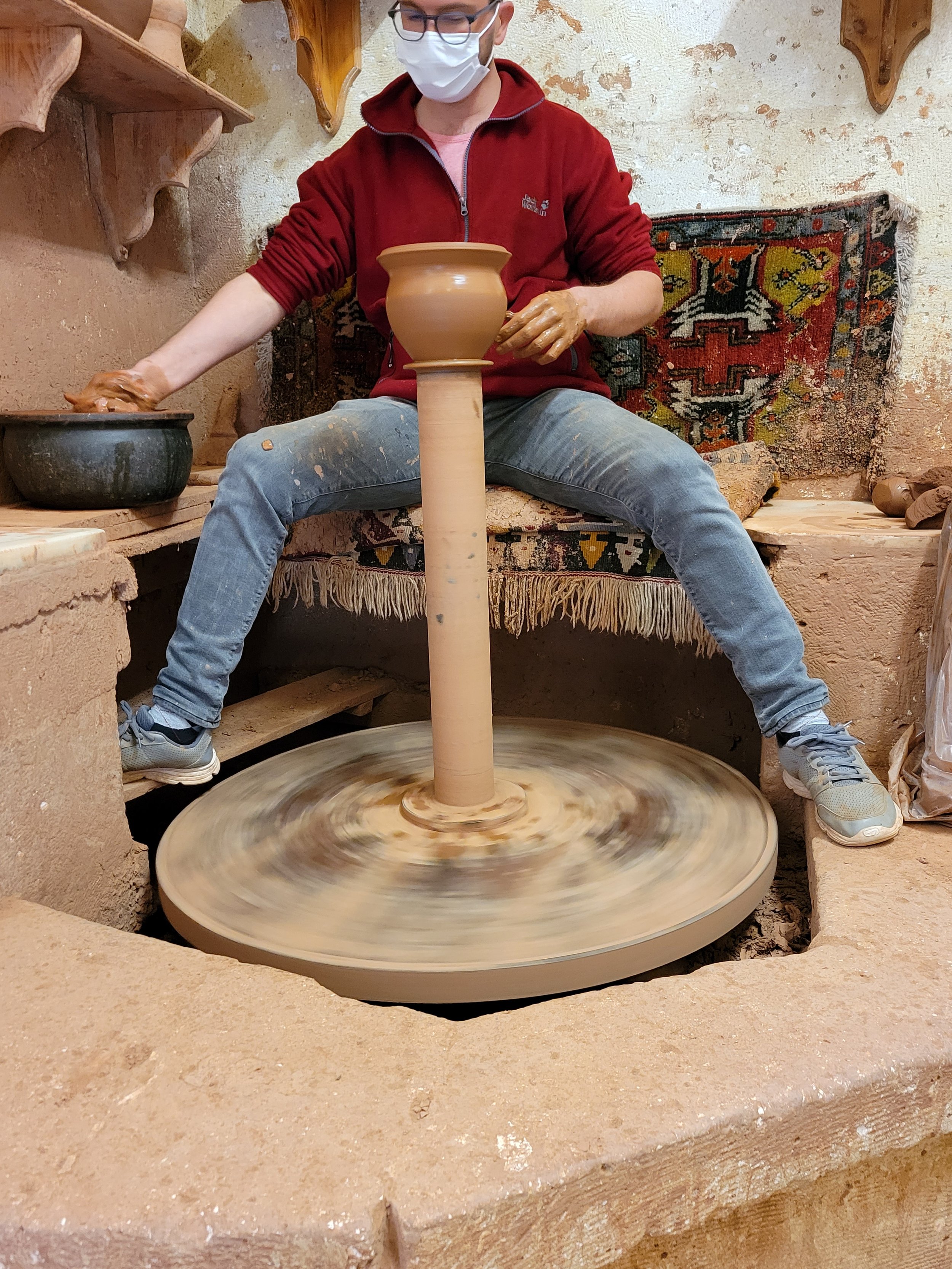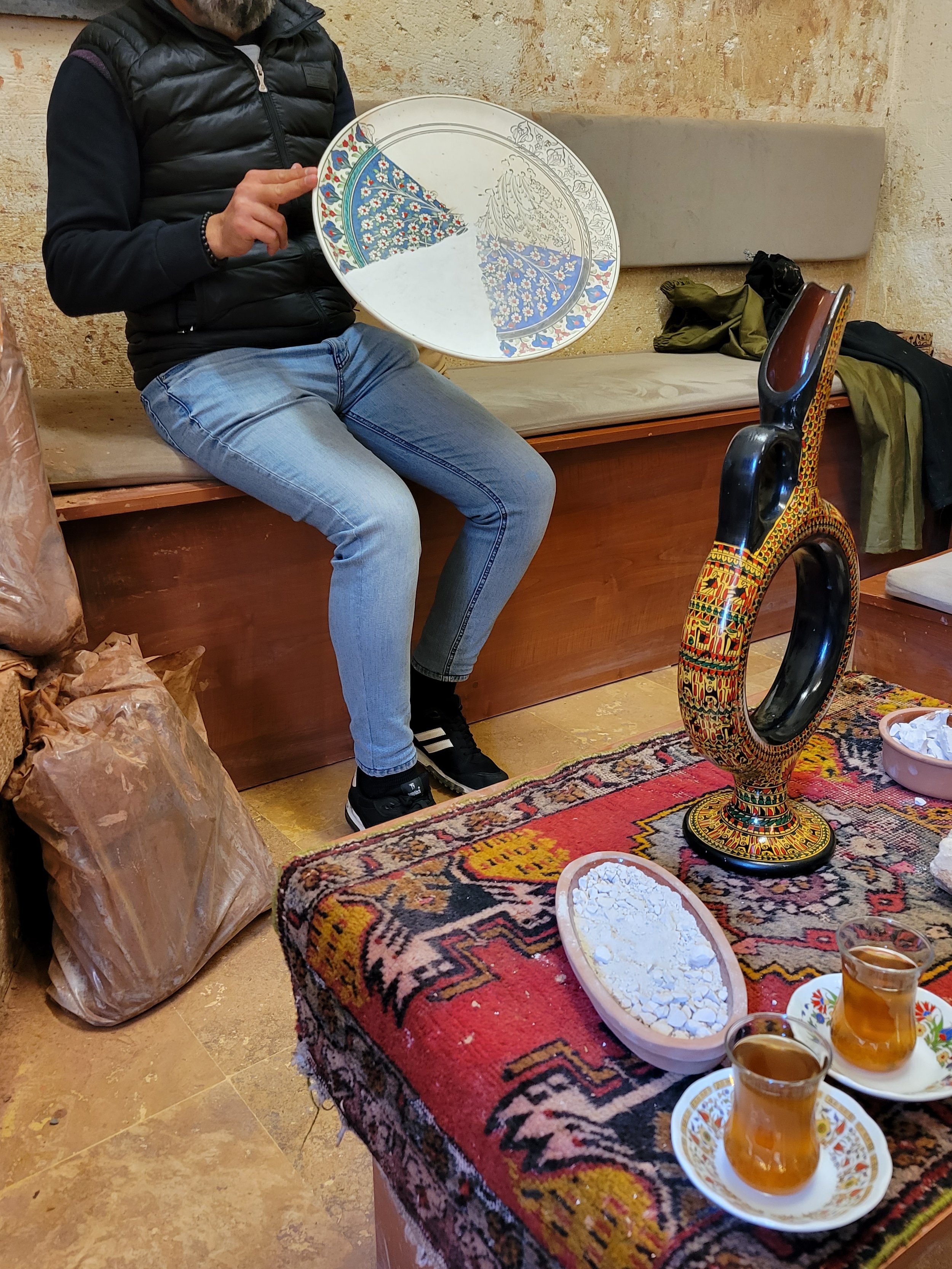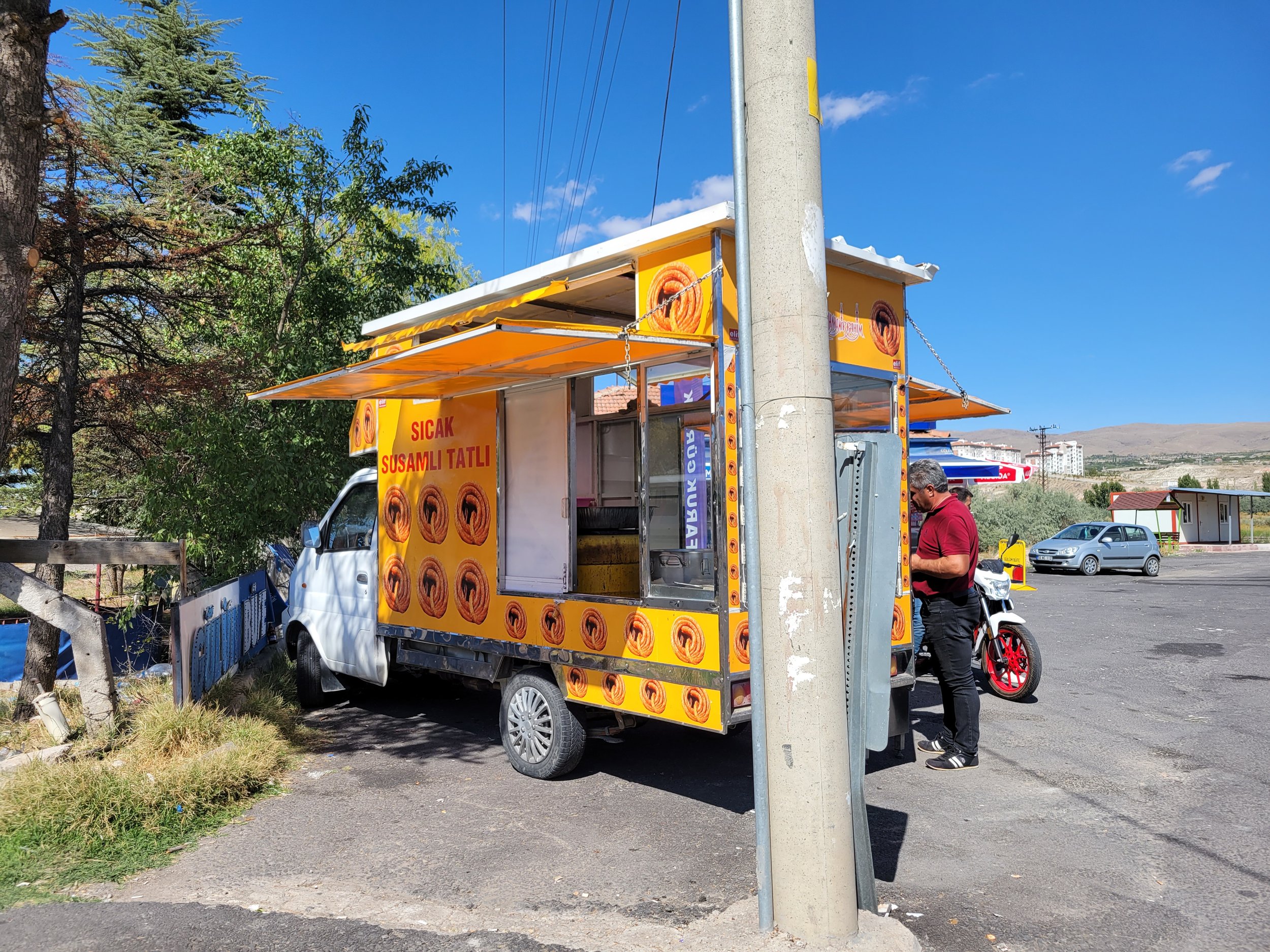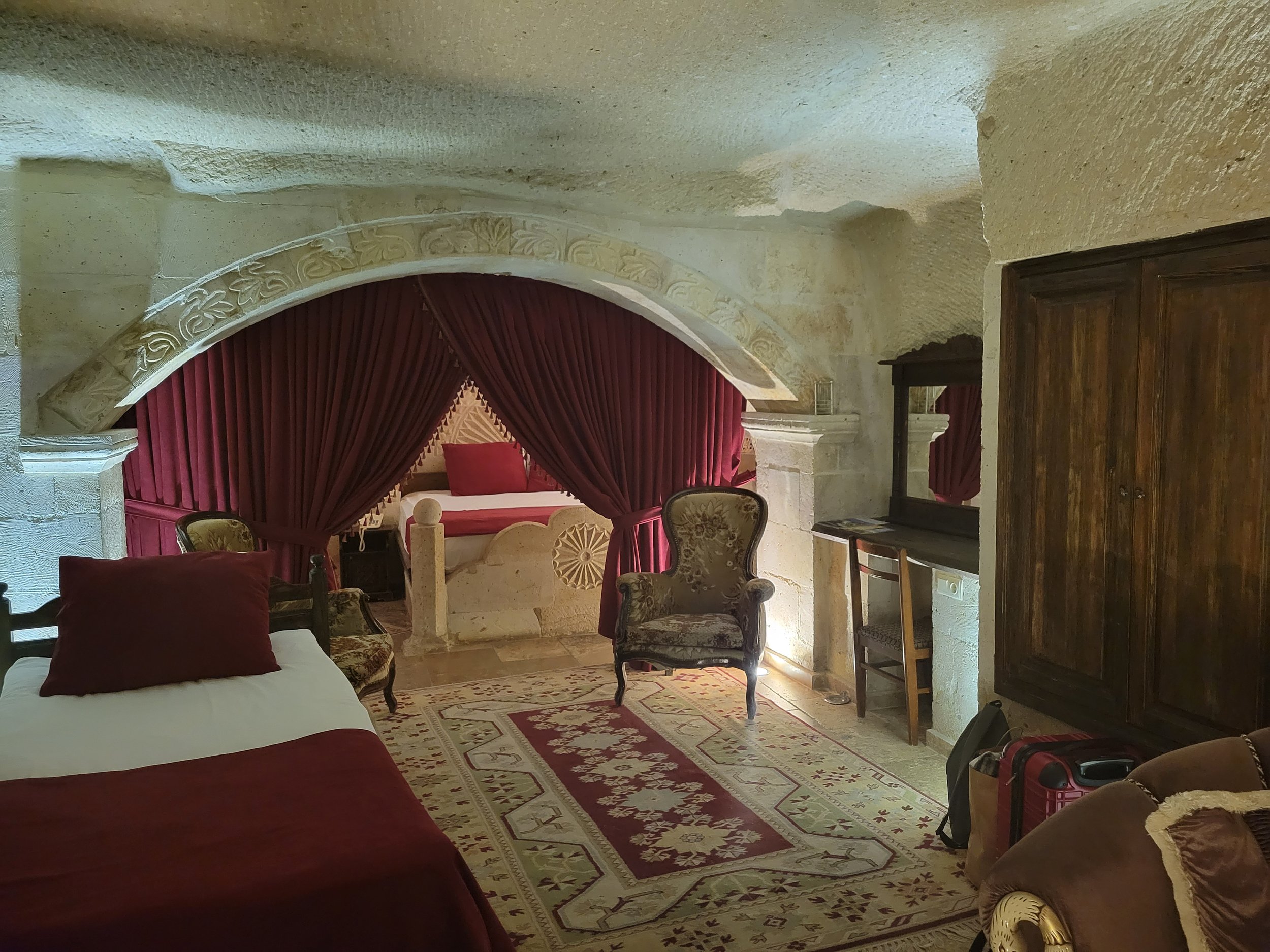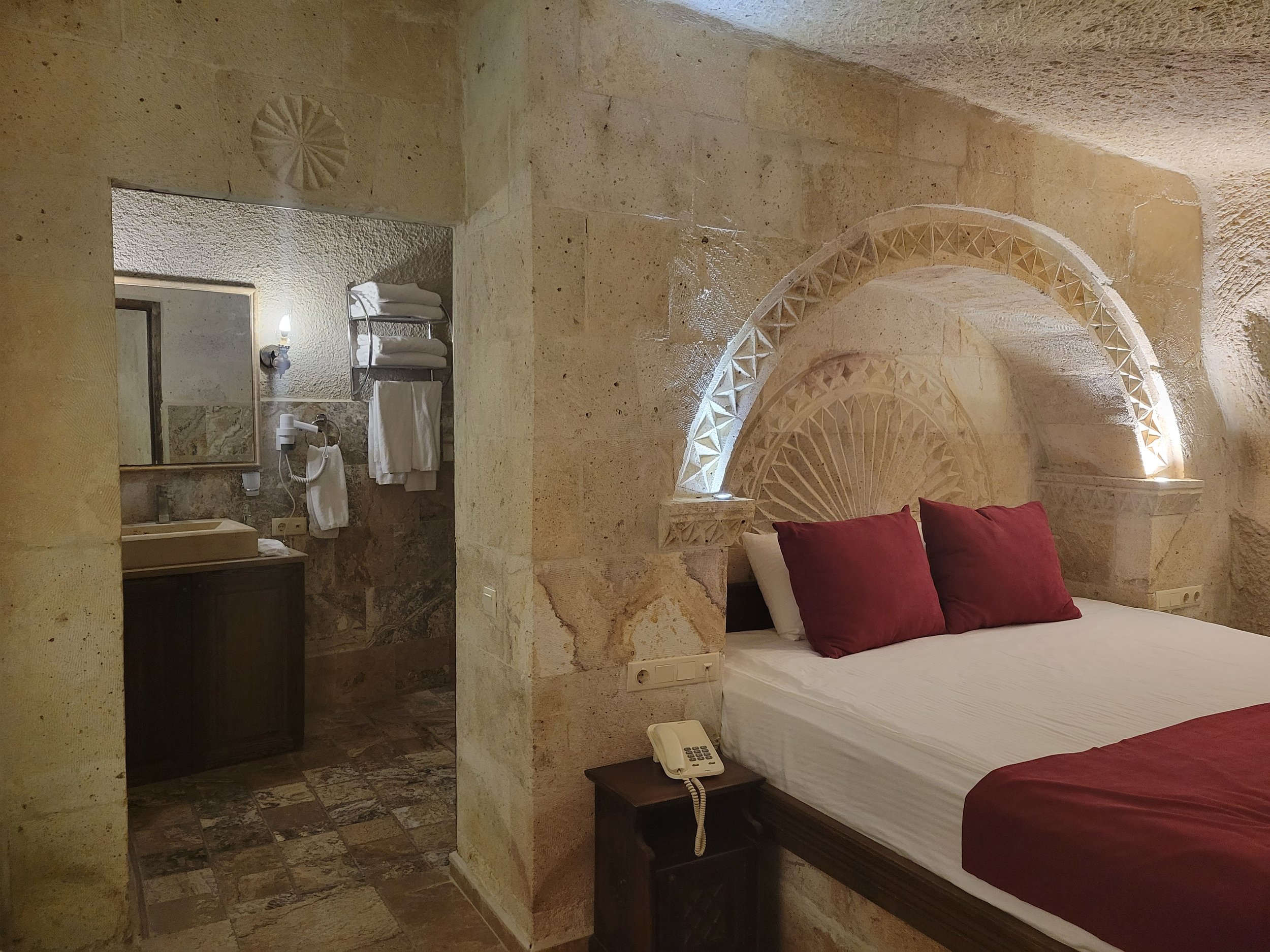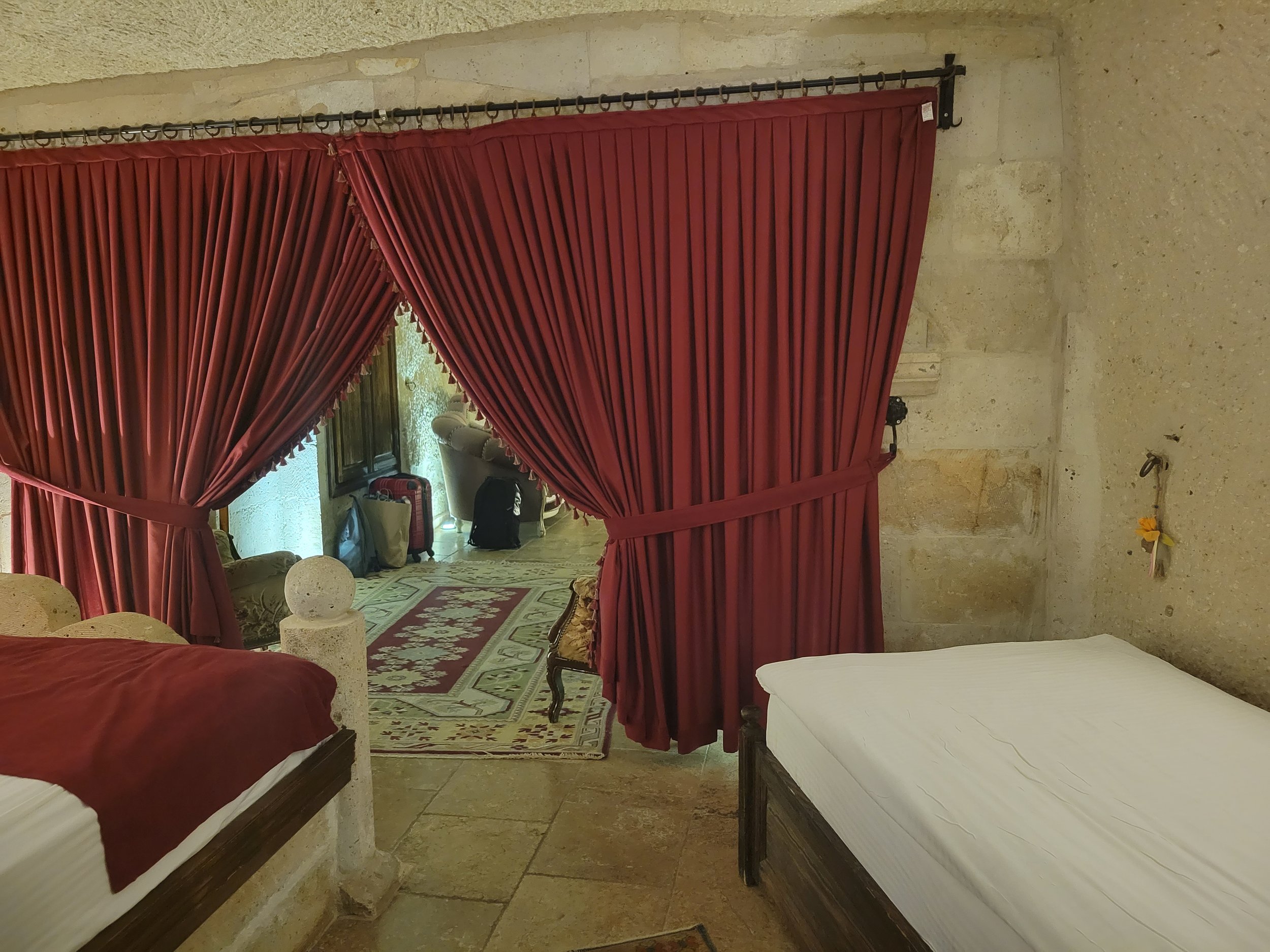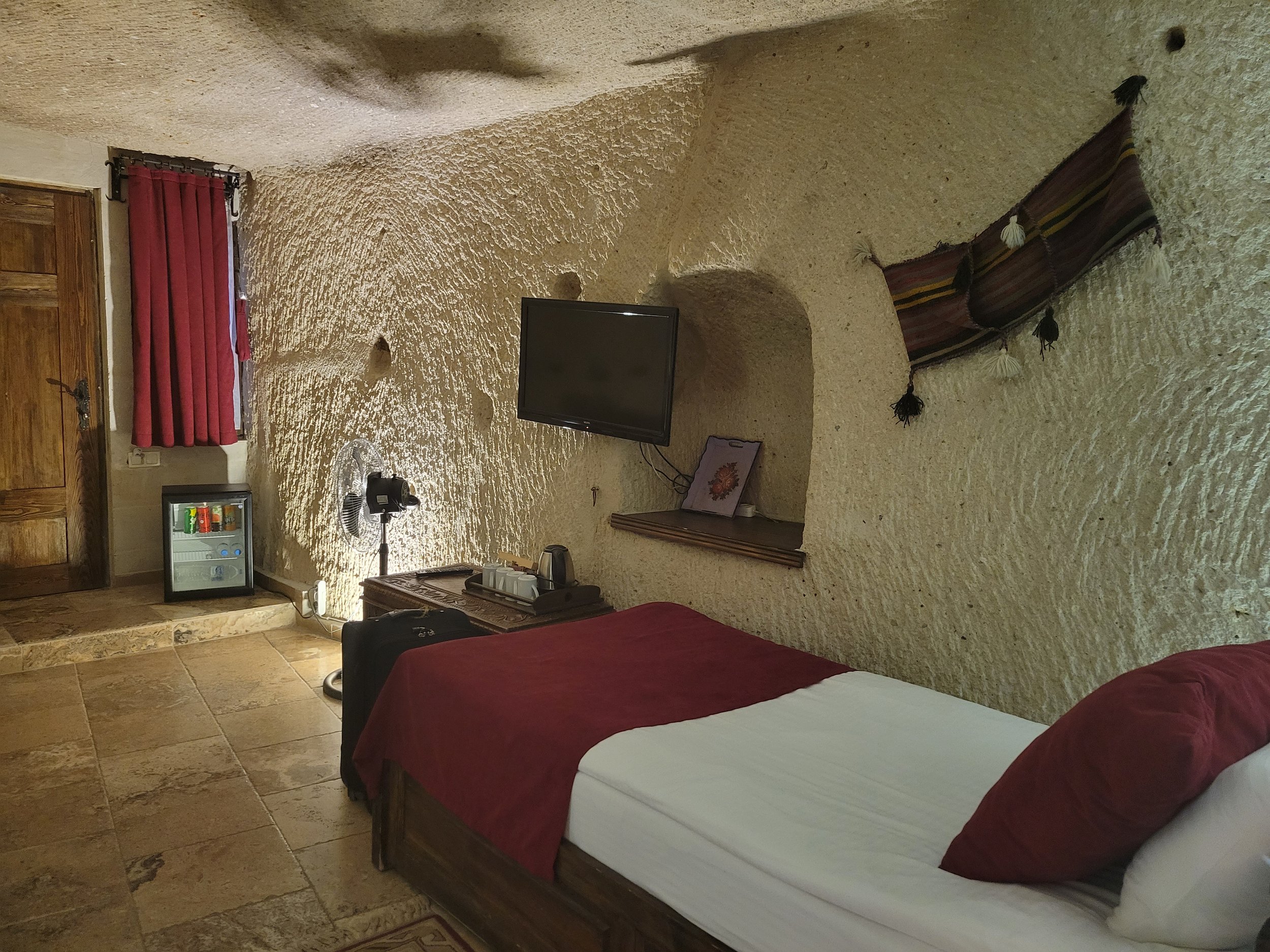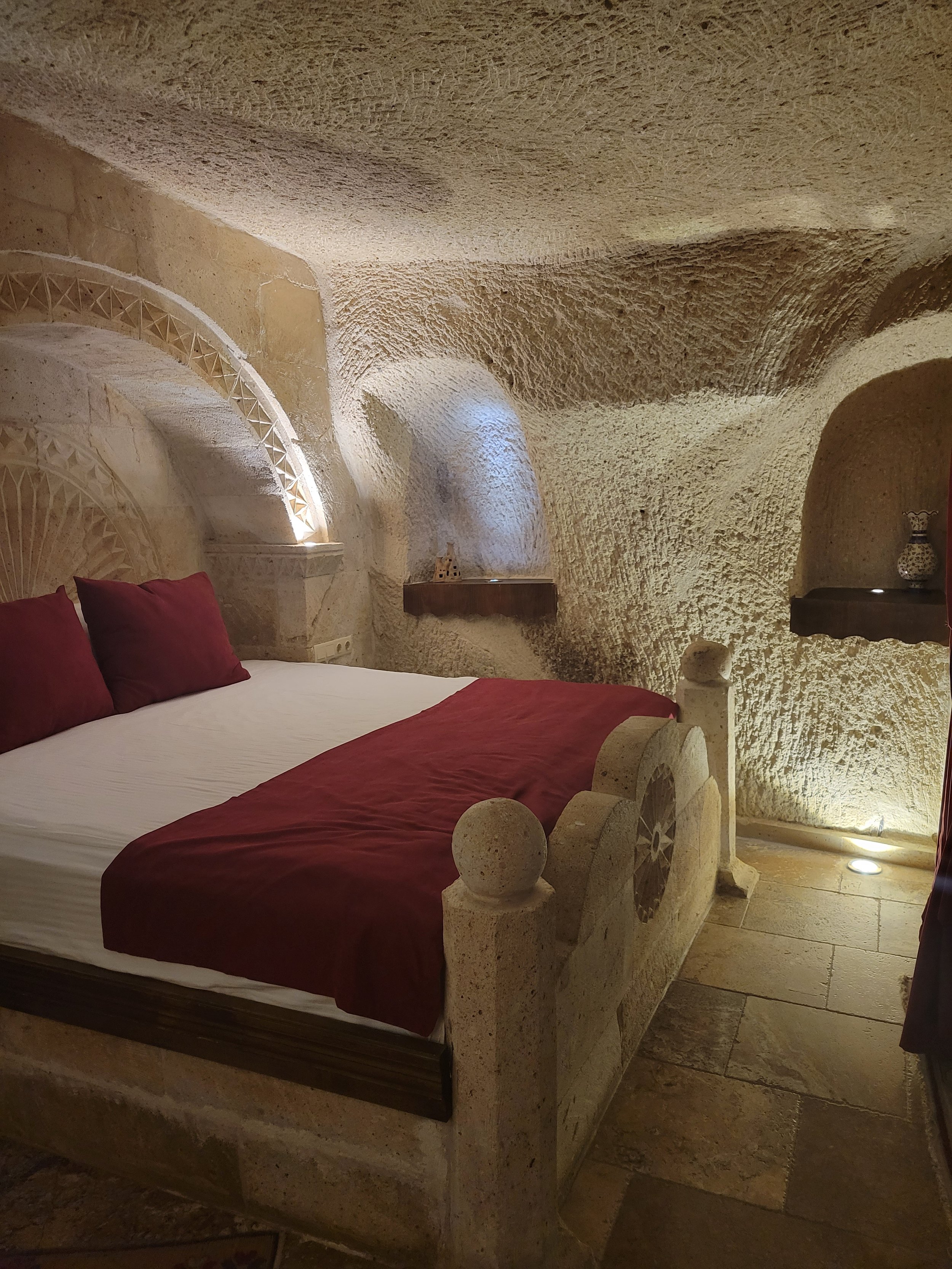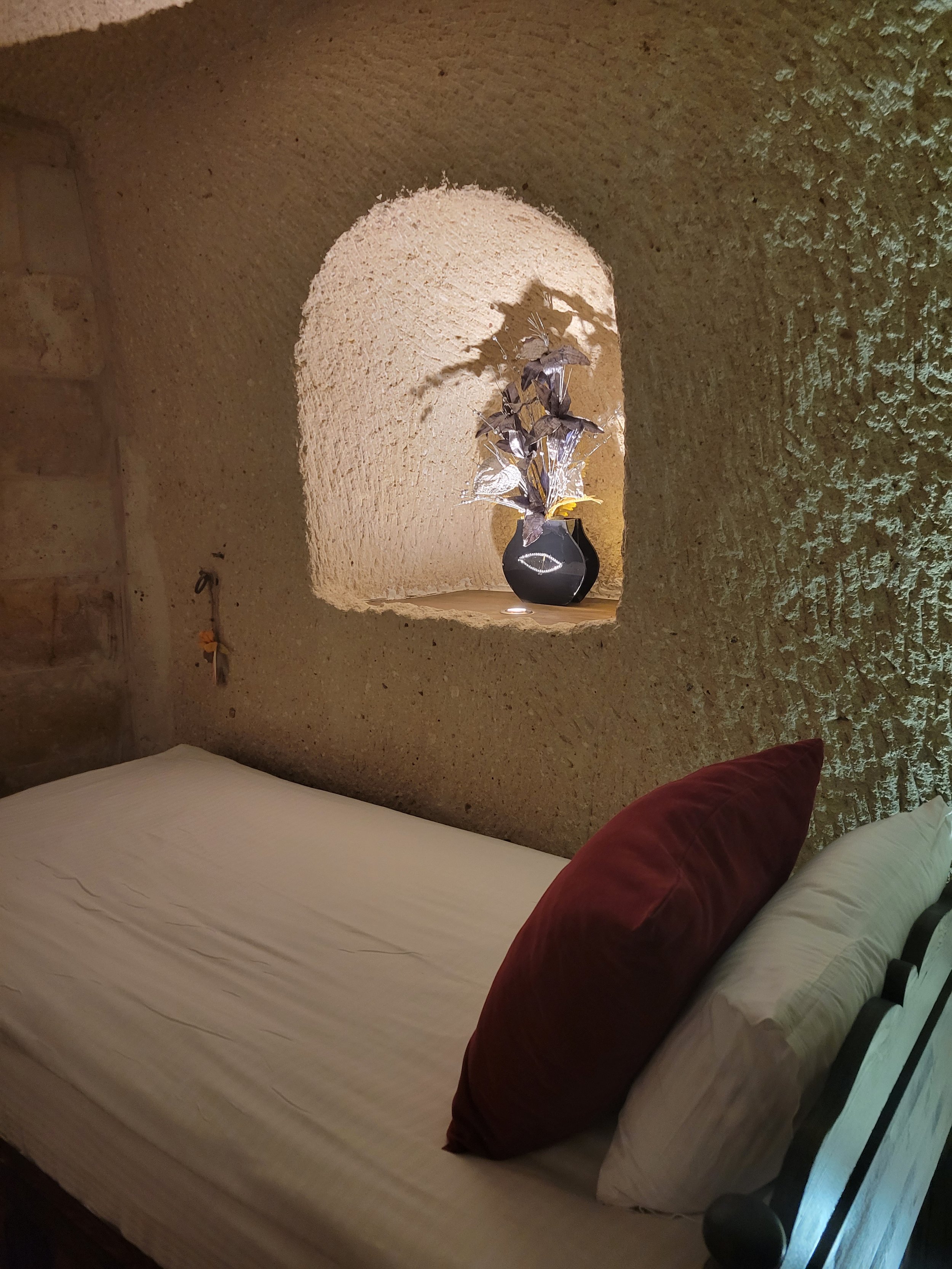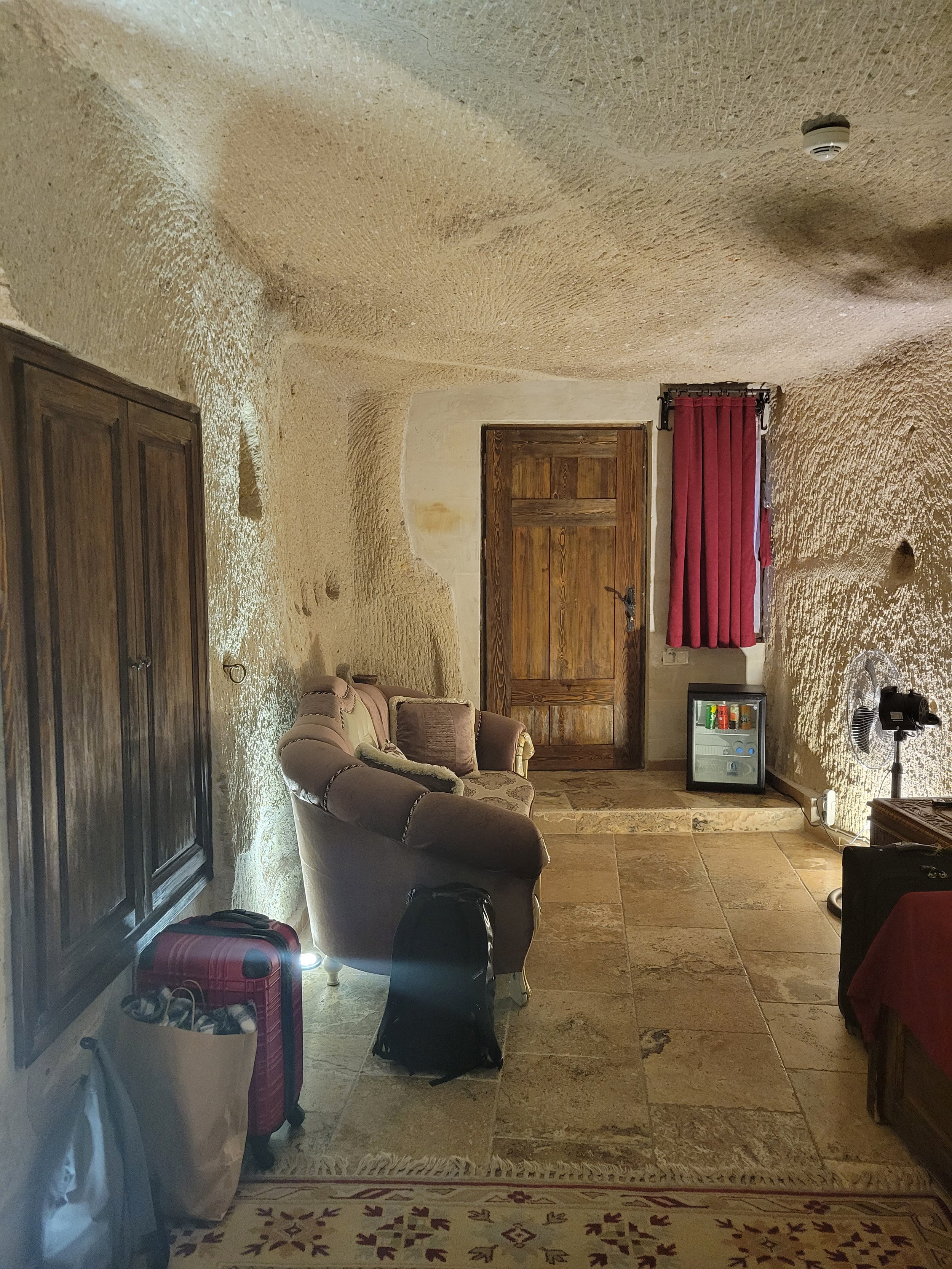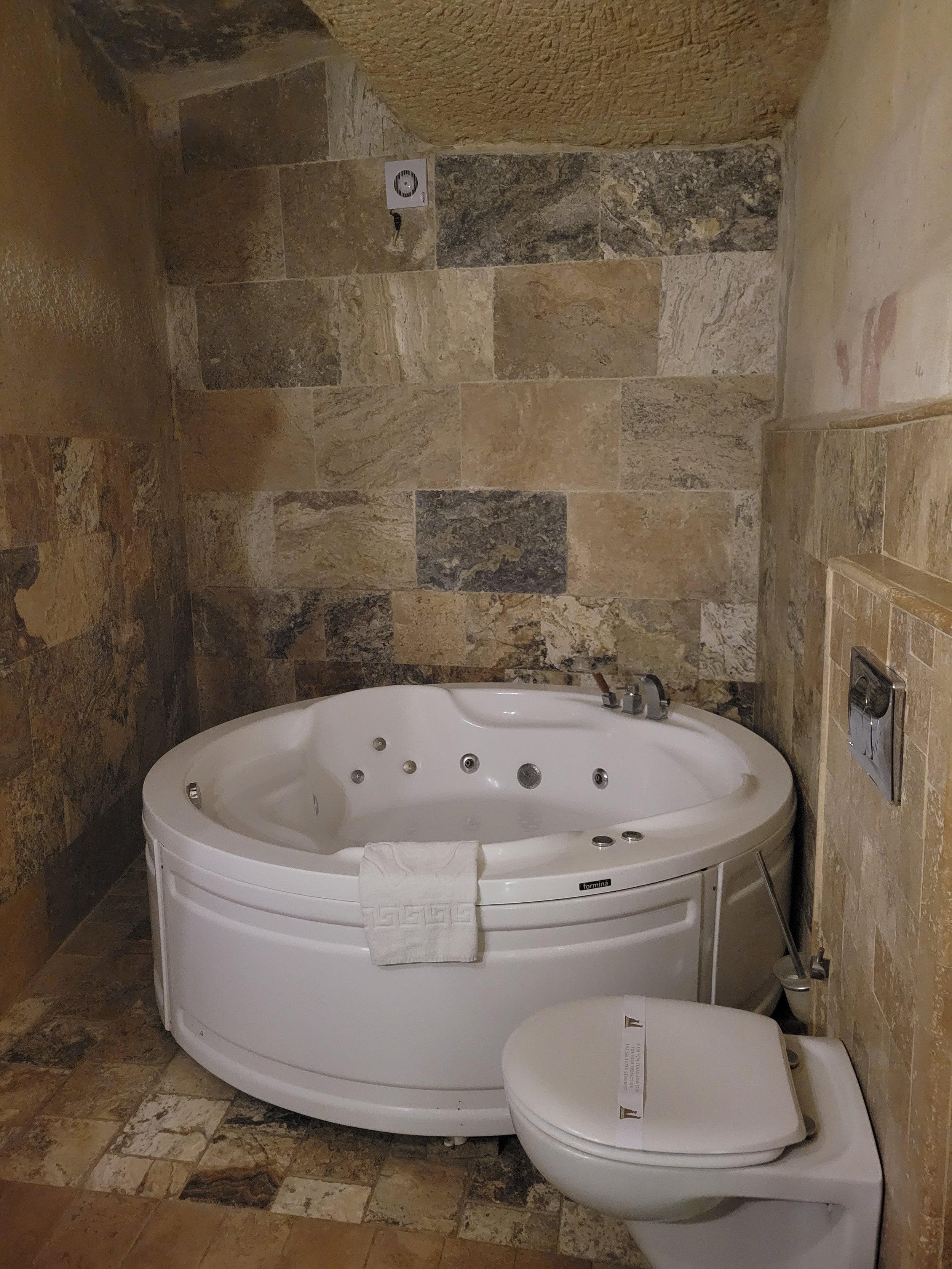Cappadocia, Turkey
Hot Air Balloons & Fairy Chimneys
Officially the Republic of Türkiye, Turkey is a transcontinental country located on more than one continent, namely, Southeast Europe and West Asia. To the north, it borders the Black Sea; Georgia to the northeast; Armenia, Azerbajan and Iran to the east; Iraq to the southeast; Syria and the Mediterranean Sea to the south; the Aegean Sea to the west; and Greece and Bulgaria to the northwest. One of the world's earliest permanently settled regions, present-day Turkey is home to many important Neolithic sites and was inhabited by ancient civilizations like the Hattians, Hittites, Anatolian peoples, Greeks, Assyrians and Persians. Turkey also boasts a love for tea and wine and is home to over 80,000 mosques and 30 languages. It’s a wildly diverse melting pot that will surely impress.
Cappadocia, a dry region in central Turkey, is known mostly for its mysterious caves, hot air balloons and magical fairy chimneys, large cone-shaped rock formations created by years of erosion. Among the best towns of the region are Göreme, Ürgüp, Uçhisar, Avanos, Güzelyurt, Derinkuyu and Ortahisar where visitors can explore castles, underground cities and learn the history behind local terracotta artwork. Both Göreme and Zelve valleys, along with the Soğanlı Valleys are best spent high above the landscape in a hot air balloon. And Ihlara Valley is a natural wonder not to be missed; this dramatic gorge offers a great hike lined with towering walls punctured by cave churches and rock-face chapels.
With two weeks of travel set aside, our first stop was Istanbul, where East Meets West: One City, Two Continents, then we flew on to Cappadocia at the center of Turkey for its hot air balloons and fairy chimneys, along with southwest Cappadocia’s Pigeon Valley, Selime Monastery, Ihlara Valley & Underground City. After a few magical days in Cappadocia, we moved on to Fes, Morocco, where we explored Fes El Bali’s Walled Medina, Medieval Architecture, Vibrant Souks & Old World Charm, along with adventuring outside the medina walls to see the true Athens of Africa. Our final stops landed us in Morocco’s Red City of Marrakesh and its northern region for Homemade Butter, Argan Oil & Camel Rides in the Atlas Mountains.
Delight in Cappadocia's Gorgeous Landscape
From Istanbul, the flight to Cappadocia lasts one hour. After we arrived, the drive over to Göreme took about 30 minutes by taxi. Straightaway, we checked into Hidden Cave Hotel and were pleasantly surprised. Slightly unaware of what we were getting ourselves into, we realized pretty quickly that we’d be staying inside an actual cave. The space itself was huge, with an entry lounge, open bedroom and large bathroom with a jacuzzi tub, all for $100 USD a night.
After settling in, we began to explore the grounds, realizing there was much more to uncover. Peaking through the plant life were mysterious rock formations; we had to get a closer look.
From the rooftop patio we discovered incredible views of the surrounding landscape. Tall, cone-shaped rock formations jutted out of the ground into the sky in all directions. These pinnacles known as “fairy chimneys” or hoodoos, cover the region between the cities of Nevşehir, Ürgüp and Avanos, the sites of Karain, Karlık, Yeşilöz, Soğanlı and the subterranean cities of Kaymaklı and Derinkuyu.
The fairy chimneys, along with the surrounding valleys and mountain ridges located in the central Anatolia plateau were formed over a thousand years ago through erosion of volcanic eruption deposits.
With remains dating back to the 4th century, Göreme National Park and the surrounding rock sites of Cappadocia offer spectacular landscapes. These rocky sanctuaries also provide unique evidence of Byzantine art post 843 CE where dwellings, villages and underground cities are prime examples of traditional human habitats. In some areas, it was possible to catch a door or window into the towers; I was curious if someone might be living inside its structure or if those were remnants from the past.
The most incredible part was that current structures, hotels, restaurants and cafes, were all built in and around this fantasy-like landscape without disturbing it much at all. Honoring the rock formations seemed to be a priority to the town, as they were highlighted rather than hidden or destroyed.
If this was Cappadocia’s first impression, I couldn’t wait to explore what else it had to offer.
Smash a Firey Clay Pot for the Famous Testi Kebab
Walking distance from our hotel was an adorable Turkish restaurant called Inci Cave Restaurant Goreme that specialized in local bites. Sitting out on the patio under twinkly lights and gourd lanterns, we took a careful look at the menu as the sun began to set.
As recommended by our server, we selected wedding soup, a variety of dips called meze tabağı including muhammara, kurutulmuş domates or sun dried tomatoes, tahinli patlıcan or eggplant salad with sesame oil (baba ganoush), hummus, pembe sultan, olive tepenade and haydari.
We also received sides of a spicy tomato dip, pickled peppers, infused olive oil and spices similar to cumin, alongside a basket of fresh bread. Beer and wine also followed. For wine, I selected a local red variety that was light and very grape forward.
Wedding soup or düğün çorbası has traditionally been the first meal during a wedding feast, continuing on for 40 days and 40 nights. Today, it’s commonly eaten during the cold season and its rich, hearty recipe is made with small beef and pork meatballs, tender greens and delicate pasta.
Muhammara or mhammara is a spicy dip made of walnuts, red bell peppers, pomegranate molasses and breadcrumbs. Pembe sultan is a dip made of Greek yogurt, beets, mayonnaise, sunflower oil, salt and garlic. Haydari is a Turkish yogurt sauce made of Greek yogurt, feta cheese and fresh herbs.
Our last request, testi kabobi, is a famous local dish. Meaning “jug” in Turkish, testi or pottery kebab is an Anatolian specialty prepared in a clay pot or jug. Typically, its ingredients are lamb, beef or chicken with vegetables like carrots, celery, onions, garlic and potatoes.
Our testi kebab was cooked inside a firy clay pot for at least four hours and was filled with lamb, garlic, pearl onions and tomatoes. As it arrived, there was quite a scene. The gentleman placed down a tray engulfed in fire. To our surprise, he pulled out a clay pot from the flames and asked me to crack it open with a small machete-like tool.
Shocked and nervous, I took the blade in my hand and tapped firmly on the line of the clay pot. On my second try, the pot exploded; boiling broth spilling everywhere. Taking it in stride, the gentleman poured the steamy soup into a bowl and placed it in front of us to enjoy.
The entire meal was such an experience and every bite was absolutely delicious. It was one of my favorite meals in Cappadocia. From there, we wandered downtown, in and out of souvenir shops. The most interesting shops were those offering local crafts such as textiles or metalwork. Falling in love with some of the bronze antiques, I chose a tiny genie lamp and a flask in the shape of a heart strung on a looped chain.
Afterward, we went for hookah at Kuytu Köşe Nargile Cafe & Bar. Walking in, the spot was super cute. Mostly empty, other than the wooden tables and chairs covered in colorful clothes, the space was dimly lit with lanterns giving a moody feel.
Taking a seat, we viewed the menu, ordering a flavored hookah (mint, maybe) and drinks of mulled wine and local beer. They also offered a dish of toasted nuts that were quite delicious.
Doing our very best, we puffed on the hookah as hard and as long as we could, enjoying the atmosphere and ambiance of the cafe.
Unable to finish and with an early morning the next day, we eventually called it quits.
Float Over the Fairy Chimneys of Cappadocia
At our stay, Hidden Cave Hotel, we arranged for a hot air balloon flight costing $70 USD each; it was to begin at 5 a.m. in the morning. And we also booked a tour called Green Tour Cappadocia for $35 USD each, beginning at 9:30 a.m. the following day. There were also tours available to North Cappadocia (Red Tour), a Turkish night with dinner and a cultural show, an ATV tour, a whirling dervishes show, Jeep safari, horseback riding and a fancy photoshoot overlooking the landscape. There were so many incredible opportunities, it was too bad we couldn’t join them all.
In the morning, we woke early to get ready for the balloon ride. About an hour and a half before sunrise, the guide picked us up at our hotel, a little late, stopping to grab a few others and ending at a small cafe to grab coffee, tea or a quick omelette. While waiting, unbeknownst to us, pilots were busy checking weather conditions to determine the perfect take-off points, which change daily to ensure the best flight experience possible depending upon the speed and direction of the wind. It was also time for the drivers to collect payment and arrange groups for each balloon. Once the green light was given by the Turkish Civil Aviation authority, everyone drove off to their respective take-off points. Ours was another 15 minutes away.
We unloaded the van and awaited instruction. There were already so many balloons at various stages of inflating; bright yellow flames of fire pouring into each one as it lifted upward, filling with hot air.
One by one, the balloons began to rise, sliding against the soil as they took off in all directions.
After a few minutes of confusion, we were guided toward a green balloon. Everyone piled in; there were four different baskets linked together with about five people in each.
As the sun began to rise, so did we, steadily into the air, as if it were a race in slow motion. Carefully, I watched as the pilot continued to fill the balloon with hot air and began to steer us up into the sky.
There had to be more than 100 balloons dotting the sky, each one with its own unique color and pattern. It was absolutely breathtaking to witness.
As we floated higher and higher, the gorgeous rock formations slowly came into view while the sky turned a lighter shade of blue. It was a cloudy day with a chill in the air; the atmosphere felt moody until the sun made its way out from behind the clouds warming everything it touched.
Still, more balloons rose into the sky. Some moving faster than others and higher, turning into small dots rather than enormous hot air balloons. Some would even dip and disappear behind the large rock formations.
Emerging out of the valley, our basket barely missed the tip of the mountain, when suddenly, the entire landscape spread out before us. It was mostly flat unless it rose up or fell into the small peaks or valleys of the formations.
Floating above the mountains and valleys, the ride was soft and gentle. As I’d learned from my first balloon ride in Mexico City, the balloon is large and moves through the air with grace; not at all scary, as you’d imagine and the basket is enormous, like a small apartment.
From so high above, the mountains and rock formations were incredibly unique and reminded me of when I used to make drippy sand castles at the beach as a kid. The shapes and colors were like something I’d never seen before.
The only bizarre part of the experience was that our pilot was blasting rap music which didn’t seem appropriate for the moment. I did my best to zone out and enjoy the peace and quiet of the surroundings but almost wish I’d asked him to turn it off. Still, we rose higher and higher, reaching heights above most other balloons and that, I’ll admit, did feel a bit scary especially if you peaked over the baskets edge.
Other than the music, the ride was still and serene, especially as the sun began to peak over the horizon and through the clouds. Colors of peach, rose and gold filled the sky.
It was so beautiful to watch the other balloons rise and fall around us, especially set against the incredible landscape. Oftentimes, a balloon would float directly under ours and I’d imagine jumping out of the basket, landing right on top of the balloon and bouncing off, like in a cartoon.
It was around this time that everything melted away and the sunrise made her best impression. The valleys below turned a deep green in the crevices and white at their peaks.
Every so often, the pilot would open up the flames to heat the balloon. If he wanted to rise, more fire was let loose but if we wanted to fall, he let the air inside the balloon cool.
And though it was a chilly day, the sides of the basket were dense and quite high, blocking most of the wind. The flames also provided some much needed warmth.
My favorite moment was after the sun rose, creating shadows against the balloons; they turned into outlines only, losing their colors and patterns. They became anonymous.
After floating high up into the sky, we slowly began to lower. It was now possible to catch sight of vehicles driving below on the spaghetti shaped roads.
Eventually, we floated down to Love Valley. Known for its fairy chimneys, Love Valley is located in Göreme Historical National Park and a popular location for couples to propose.
The name, Love Valley, has a few interesting interpretations. Historically, it dates back to Roman times and legend has it there were once two dynasties living in the same village. A fight broke out between the two, splitting the village in two. One day, villagers complained about the situation so two others, one from each side, were recruited. The two fell in love at first sight but the feuding villagers still tried their best to separate the lovers. Failing, the couple ended up marrying one another and having a child.
Eventually, though, as the villagers were still upset, the husband was killed. Stricken with grief, the wife committed suicide. It’s said that after the death of the two lovers, God rained stones to punish the feuding villagers. The stones were meant to kill anyone who opposed the union of the youth.
Another modern interpretation is that the valley was named in part to the heart-shaped fairy chimneys that dot the landscape. We also heard rumblings of the chimneys resembling something more of a penis shape.
Regardless, Love Valley was such a highlight. Our basket dipped so low that I thought we might bump into one of the fairy chimneys, which can can be taller than expected, reaching heights up to 100 feet tall.
Floating through the chimneys was such a magical experience. Due to the rough terrain, I doubt there’s any other way to experience them fully.
Once we reached the edge of the valley, our balloon began to rise once again.
After about an hour or so in the balloon it was finally time to locate our drivers and descend.
Securing a safe flat area to land, our drivers met us with a van and trailer attached; they’d been in contact with the pilot, following from below.
With a drawn out decline and landing, we hit the ground with a soft thud. For safety, we had been instructed to soft bend at the knee with our backs pressed against the sides of the basket, while gripping the handles provided.
Before being allowed to hop out of the basket, it was pulled up onto the trailer. Otherwise, it would be way too heavy to move for transportation.
In as instant, the crew of men deflated the balloon and secured the basket onto the trailer. From there, we hopped out of the basket, one by one, and began watching the show around us as each of the other balloons landed safely.
As a thoughtful keepsake, they gave us a completion certificate to remember our experience, complete with our pilot’s name and date.
To celebrate, the men popped a few bottles of fruity champagne, spraying it all over us in the process. Luckily, I saw it coming and was able to miss most of the mess.
From there, we settled into the vans to warm up and rode back to our hotel. What an unbelievable experience; one I’ll remember for the rest of my life.
Enjoy Traditional Turkish Food & Explore Southwest Cappadocia
With the entire day before us, we rested up and got ready for breakfast at our hotel.
Served in a cozy cafeteria-style room, breakfast included a wide variety of Mediterranean dishes of breads, jams, cheeses, vegetables, olives, honey, pancakes, sweet treats, coffee, tea and fresh juice.
There was also a chef to prepare fresh omelettes or a steaming hot dish of menemen. Menemen is one of my favorite dishes and a popular traditional Turkish dish made of eggs, tomato, green peppers and spices. It’s best when dipped into with bread.
After breakfast, we joined our Green Tour Cappadocia beginning at 9:30 in the morning. We’d be spending the rest of the day visiting some of the most amazing sites in southwest Cappadocia including Pigeon Valley, Selime Monastery, Ihara Valley and the Underground City.
Pigeon Valley, Selime Monastery, Ihara Valley & Underground City
Southwest Cappadocia
After a wonderfully long day, we headed out for dinner at nearby Topdeck Cave Restaurant, a family owned and run restaurant located on the first floor of their home in a cave. There was quite a wait but inside was warm and inviting, like a secret only a select few knew about.
We enjoyed wine and beer, alongside lentil soup, fried cigars and a lamb dish. The lamb was by far the best dish, though, we were a bit delirious by this point of the evening.
Discover All Things Ceramic
The next morning it was off to the airport via taxi, costing about $30 USD plus tip, but not without one last stop. Our taxi driver, Mustafa was great; offering wifi, gum and water he also offered to stop by a ceramic shop so we could take a look. The shop, Kapadokya Seramik, was a wonderful experience and I can’t believe we almost missed it.
Inside the shop, staff was incredibly kind and asked if we’d like to see a demonstration of the pottery making process. Using a rudimentary wheel pumped by his foot, the gentleman began spinning a piece made with red clay from the local Red River. Adding in water while spinning, he shaped the dish. Explaining that it would be stored and dried for several weeks until it was fired at 900 degrees for approximately 10 hours.
The two of us were offered hot tea as he continued. Pottery workers are typically part of a family business, a father and son. Here, they’ve been working for six generations.
After the firing process, workers then hand draw a pattern and paint the piece with all natural oxides for color, finally covering it with silica and firing to seal in the pattern. This way, the color never fades. He also showed us a stunning wine carafe called a Hittite Wine Jug costing $225 USD. Unfortunately, I was too worried it might break during shipping (they will ship to you if above a certain price), so we perused the store for a few other items, picking up some beautiful side dishes and cookware; a clay tagine.
Insisted by our driver, our final stop before the airport was to grab a quick bite of swirly sweet bread covered in sticky sugar and sesame seeds.
From Cappadocia, it was a one hour flight back to Istanbul. Then, we’d fly on to Casa Blanca on a five hour flight. After spending the night in Casa Blanca, a final train ride to reach our destination of Fes, Morocco, where we’d first be exploring the walled city of Fes el Bali.
Hotel Hidden Cave
What a magical place; my first time staying in an actual cave. Our room was spacious and filled with rich colors and textures. The stone walls were carved in beautiful patterns, and rounded archways and well-placed lighting created for a cozy and comfortable stay.
Staff was kind and the location was perfect, right in the best area of Göreme. Breakfast was tasty, the tours were something else and the views from the rooftop, unforgettable.
And the jacuzzi didn’t hurt either!


